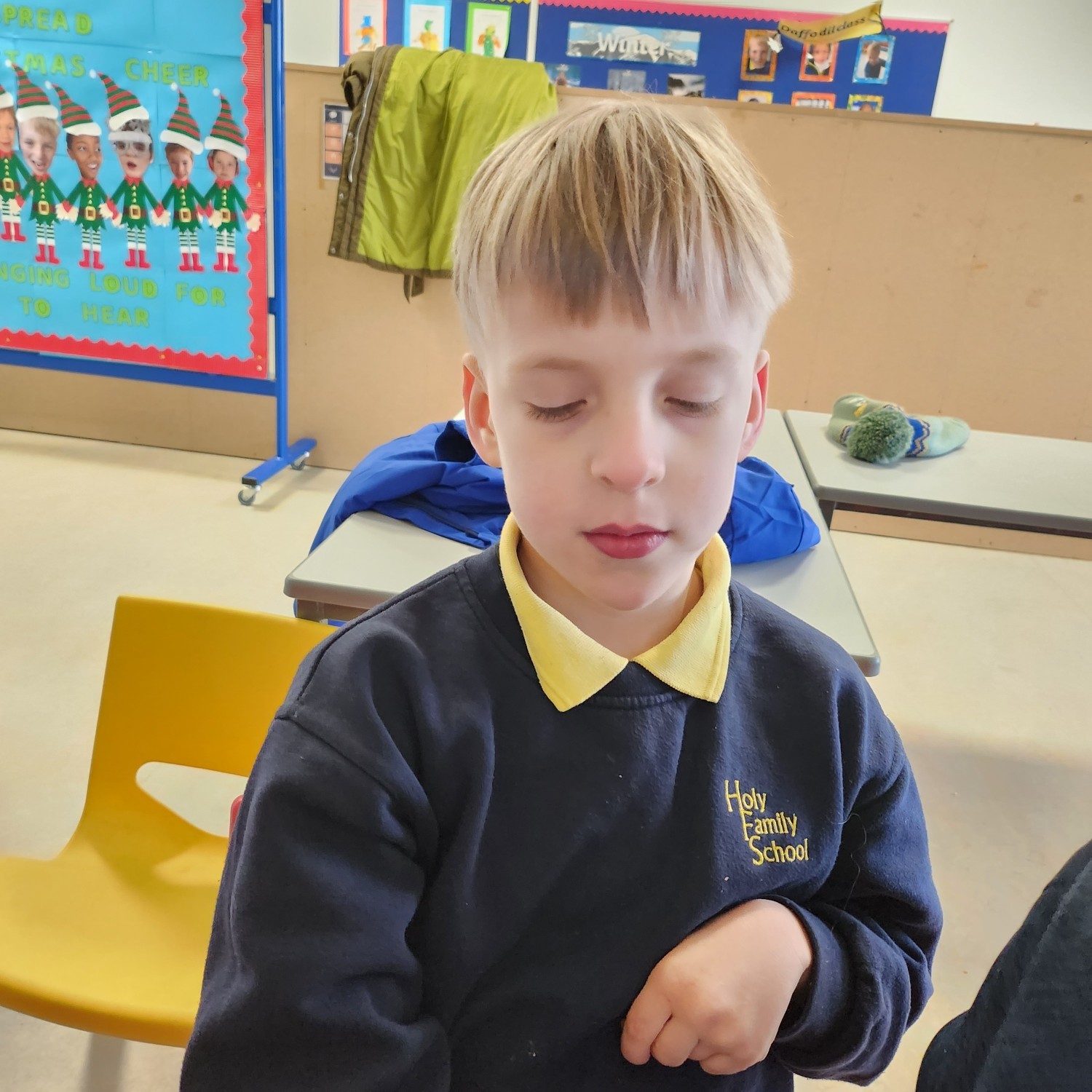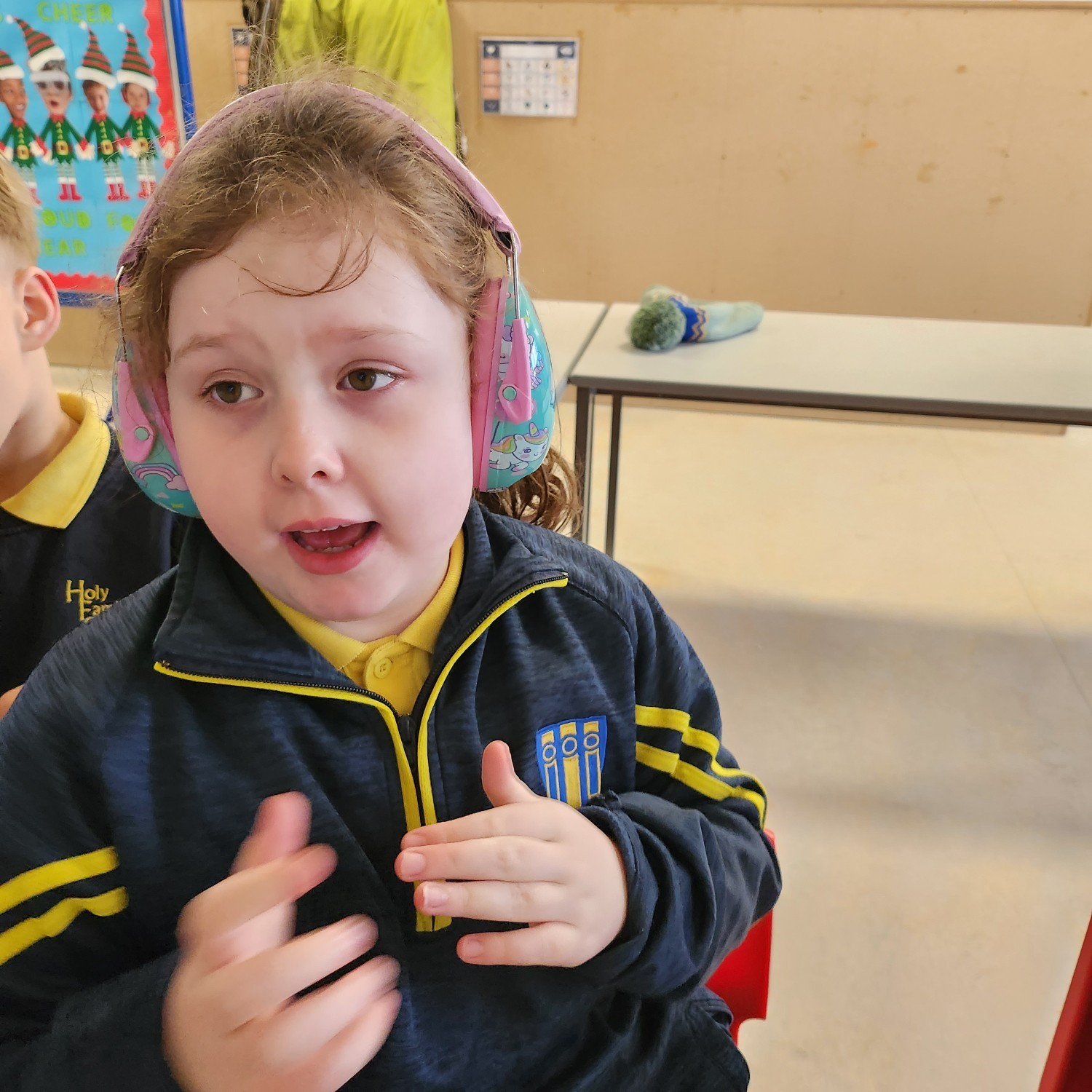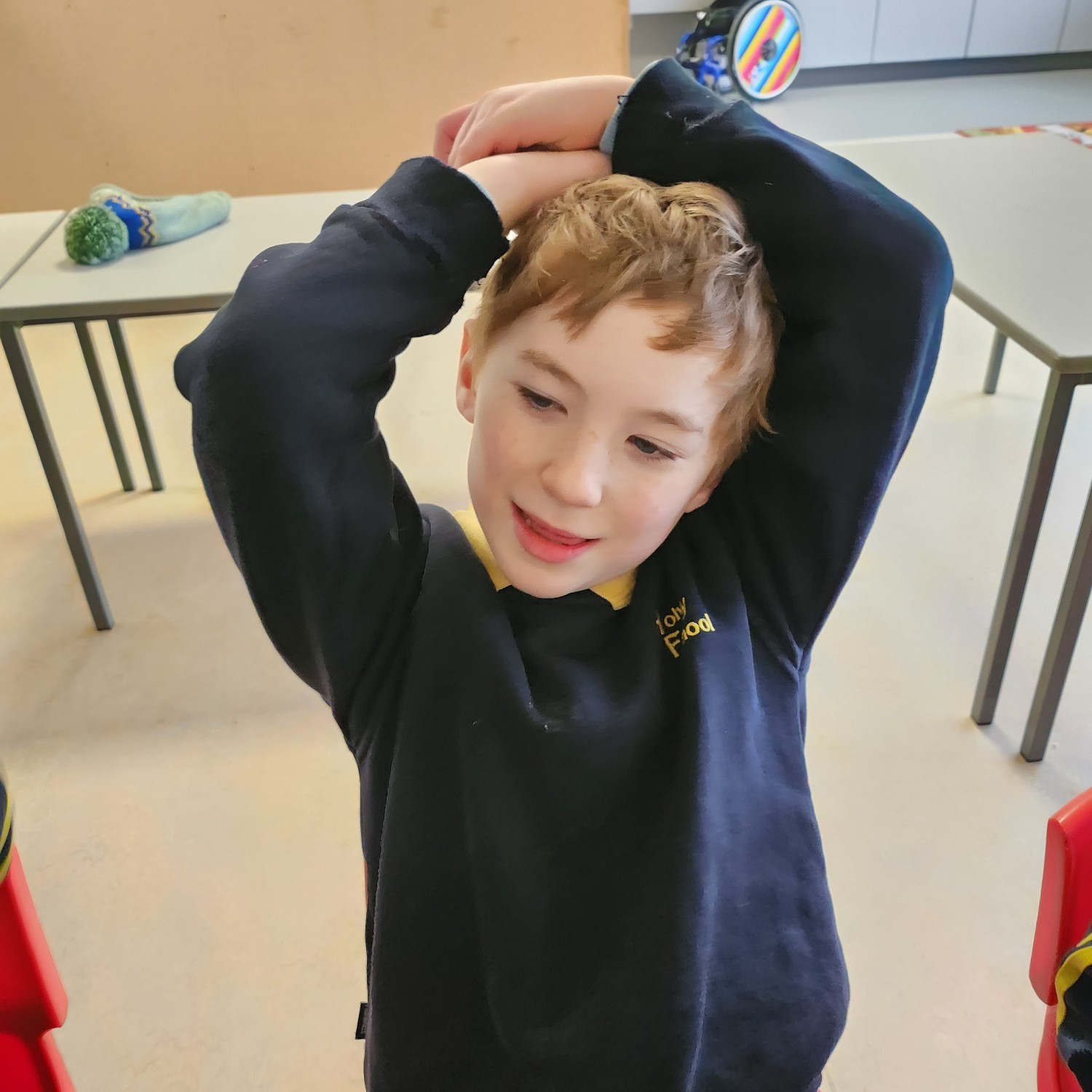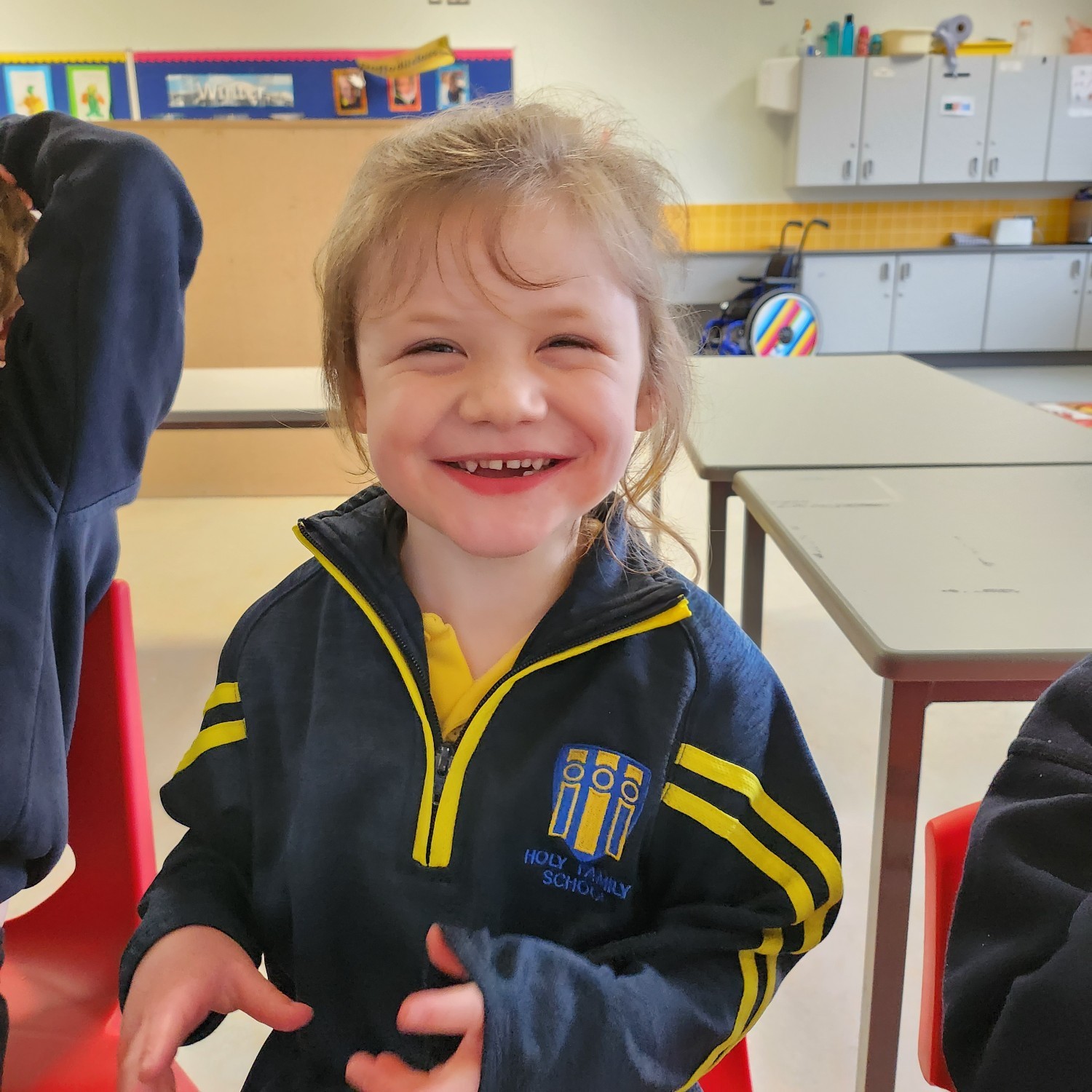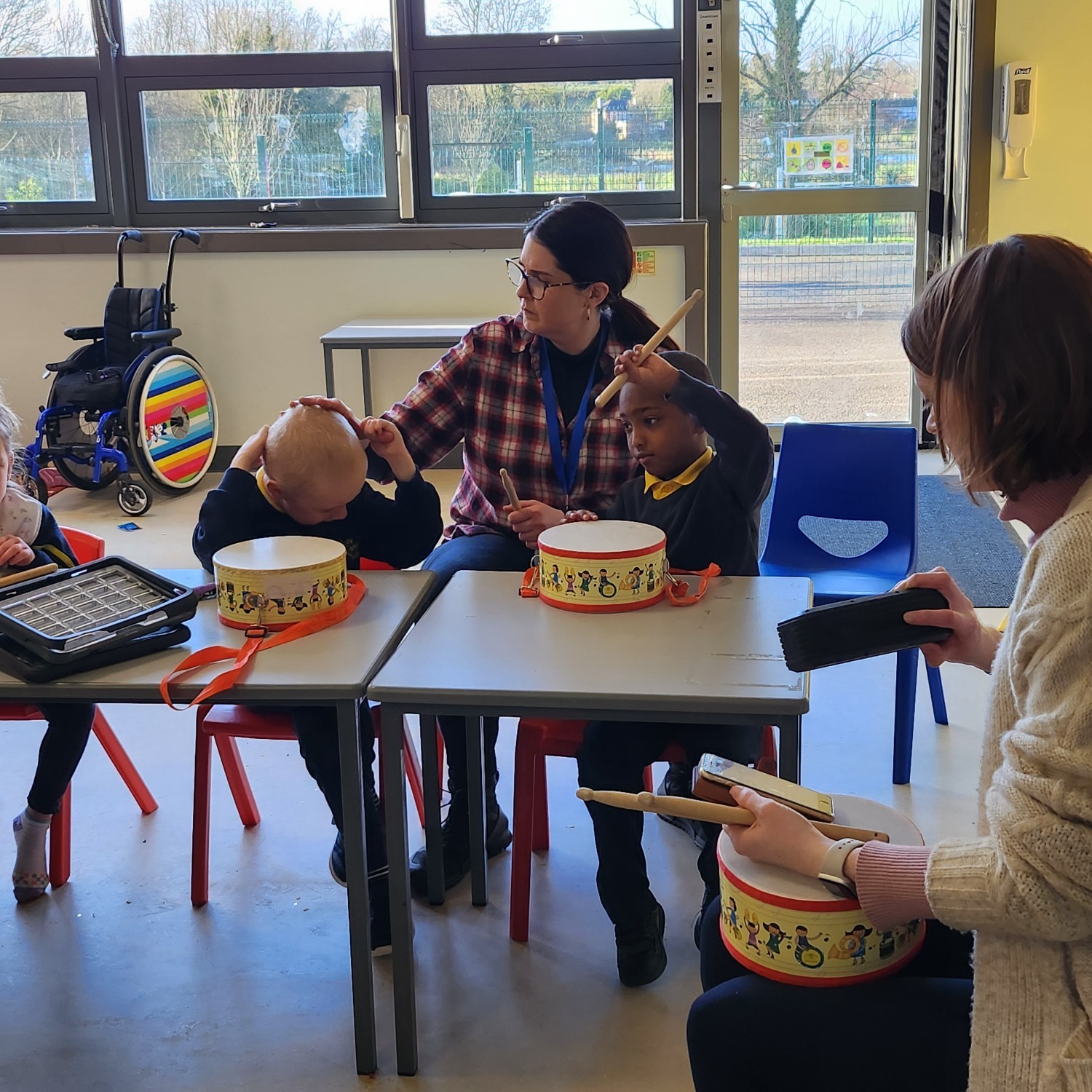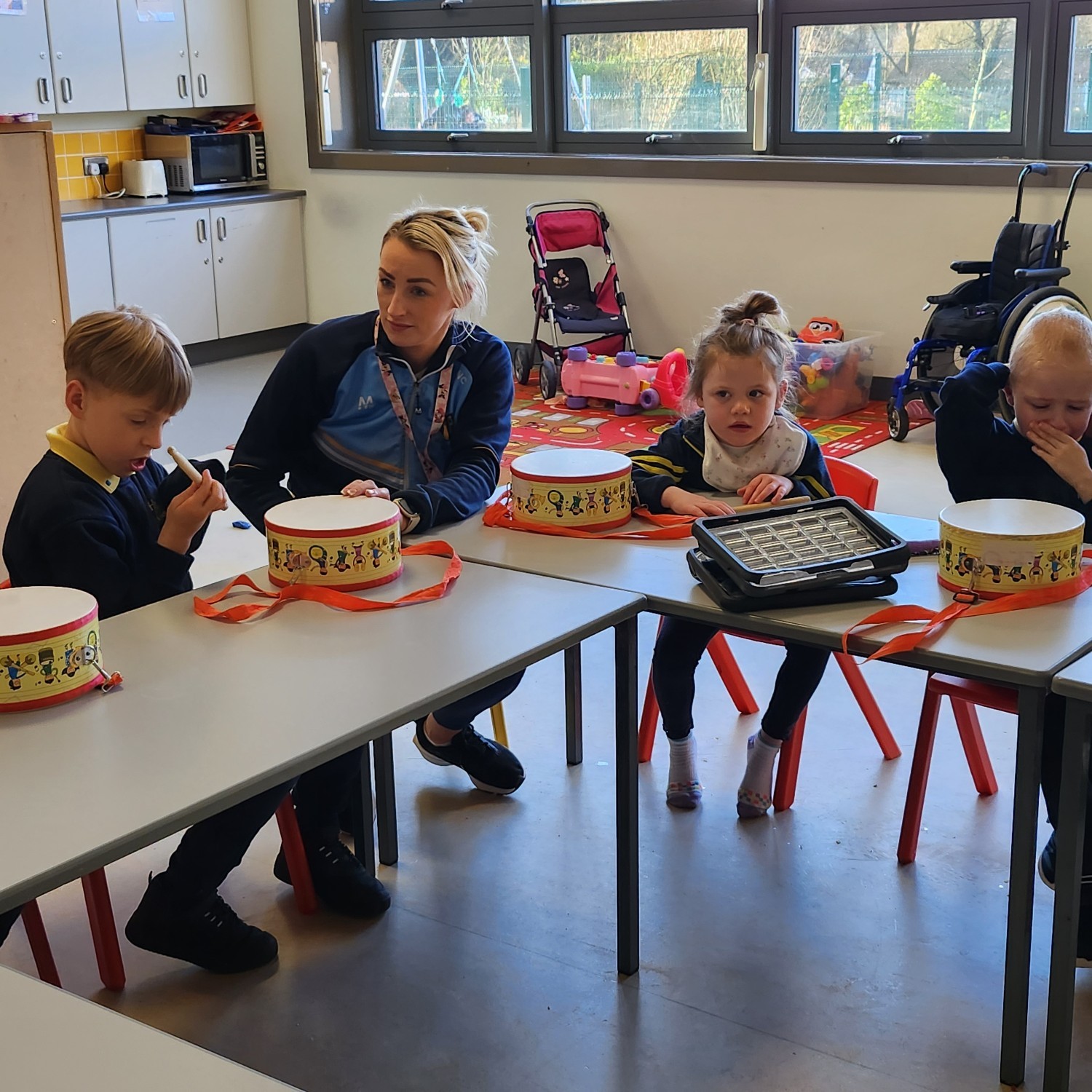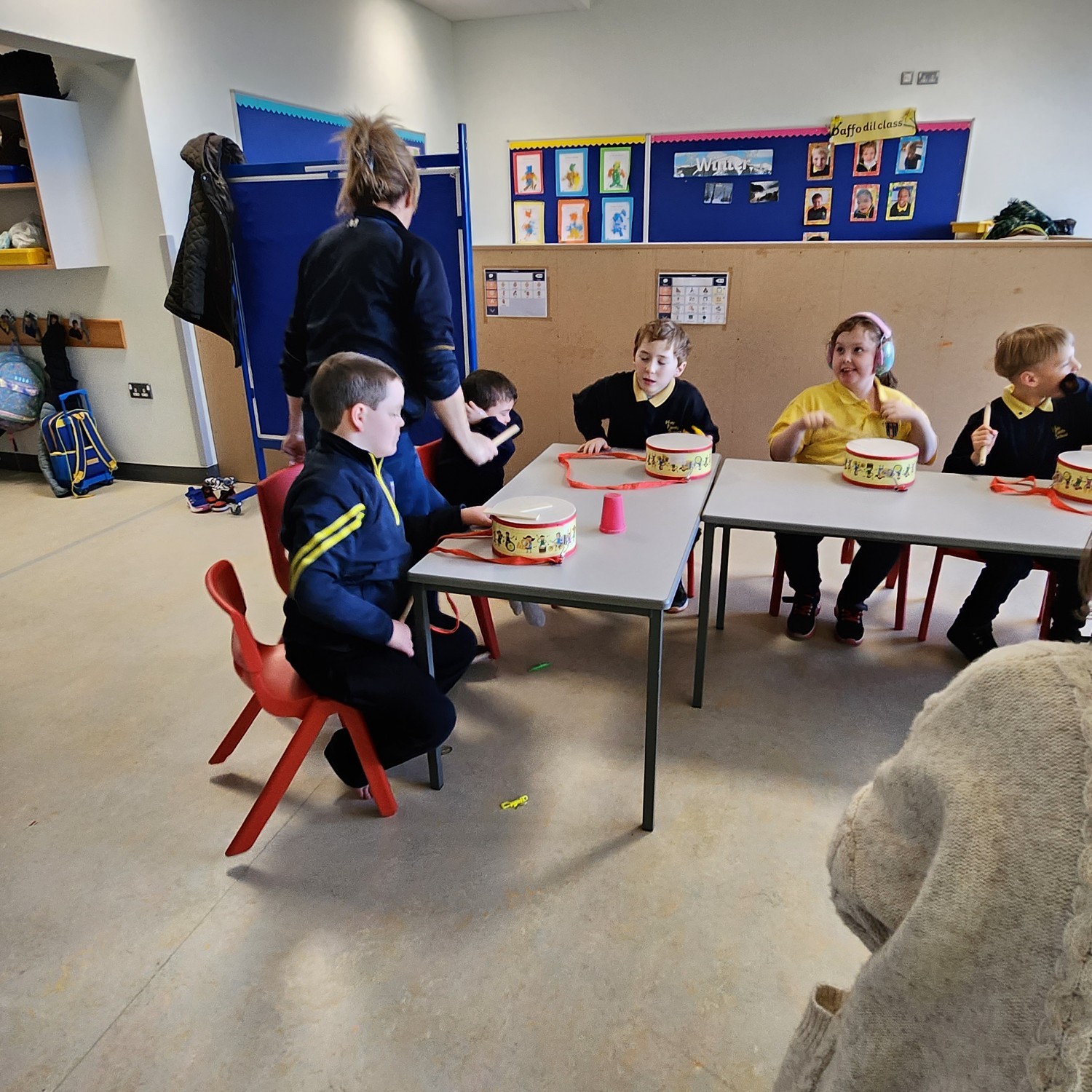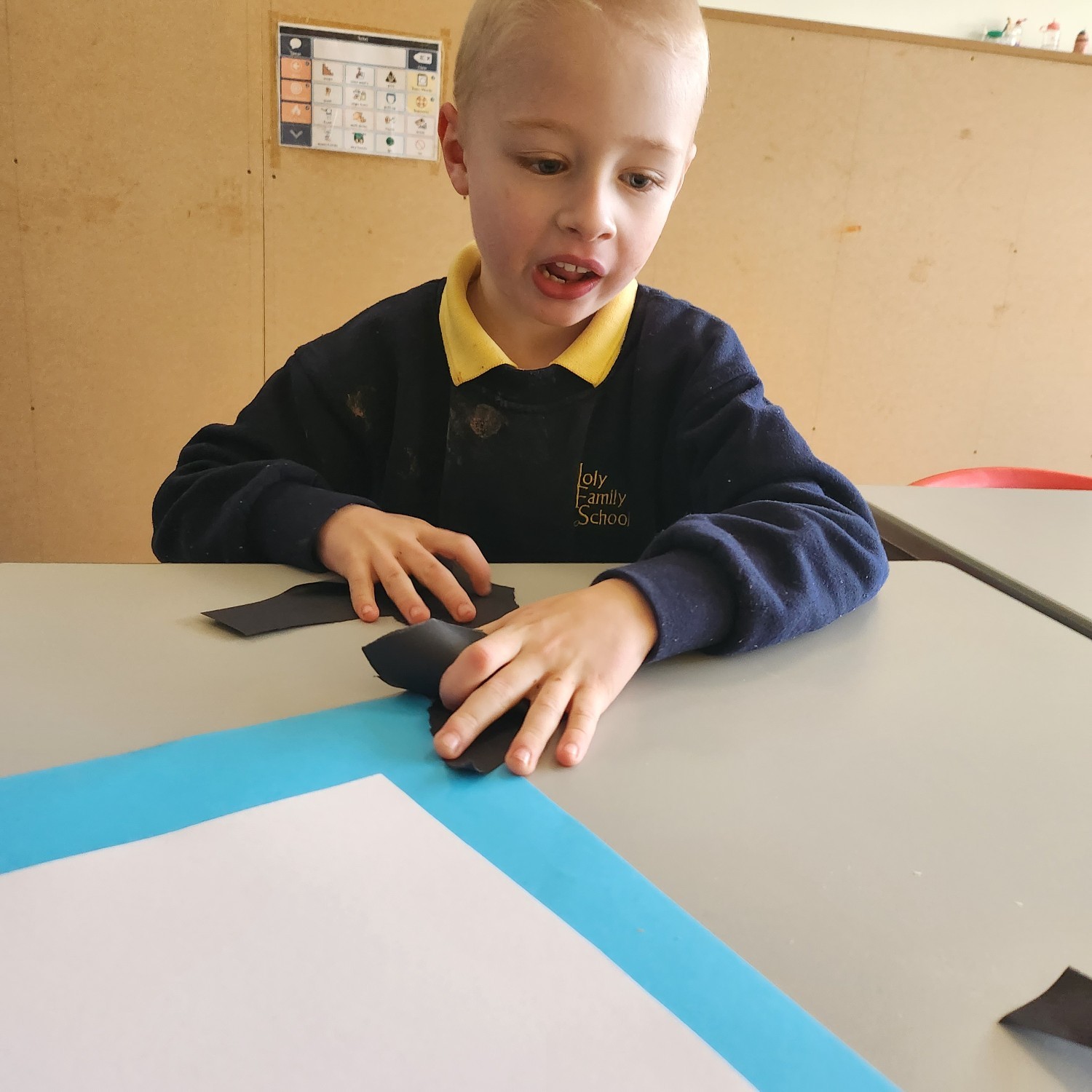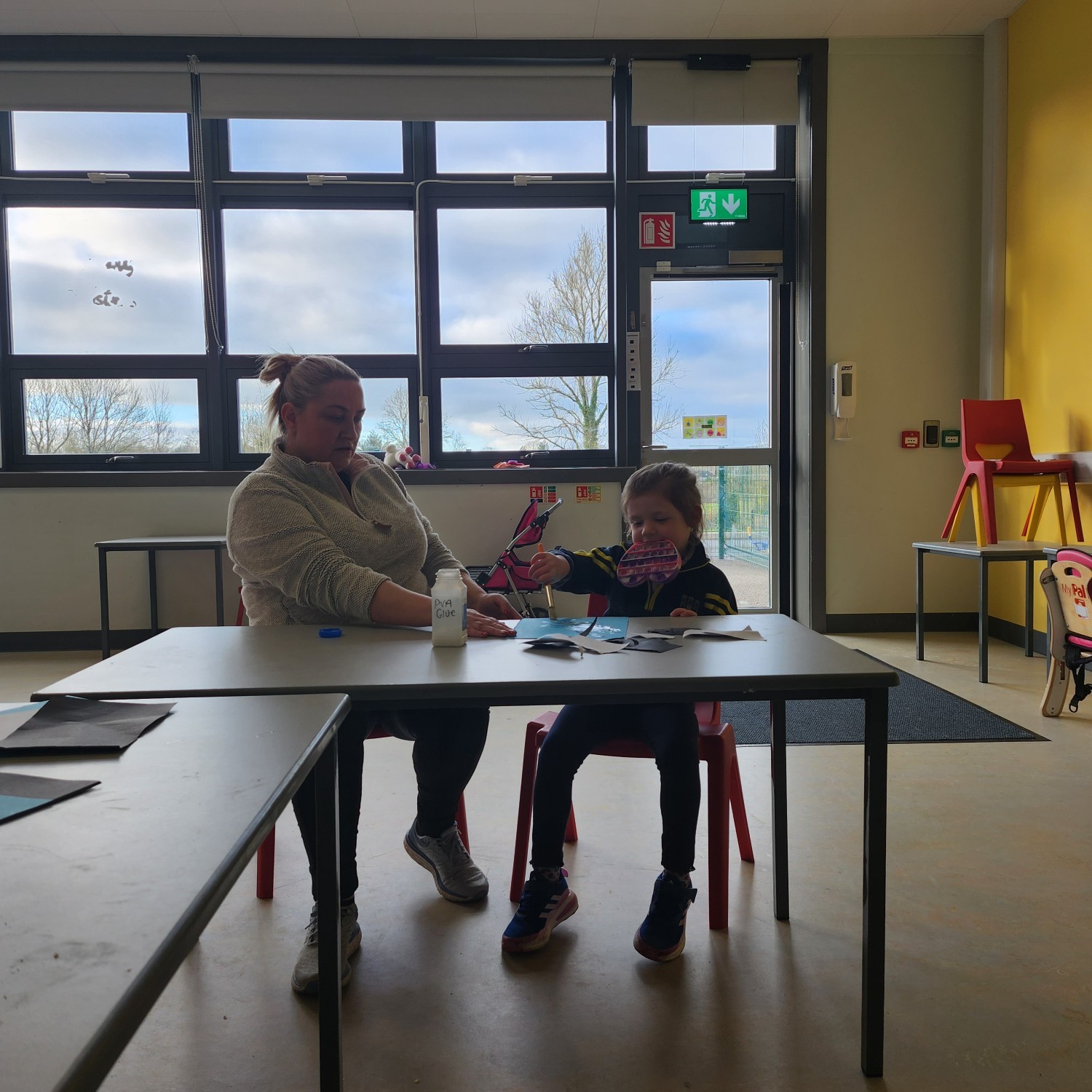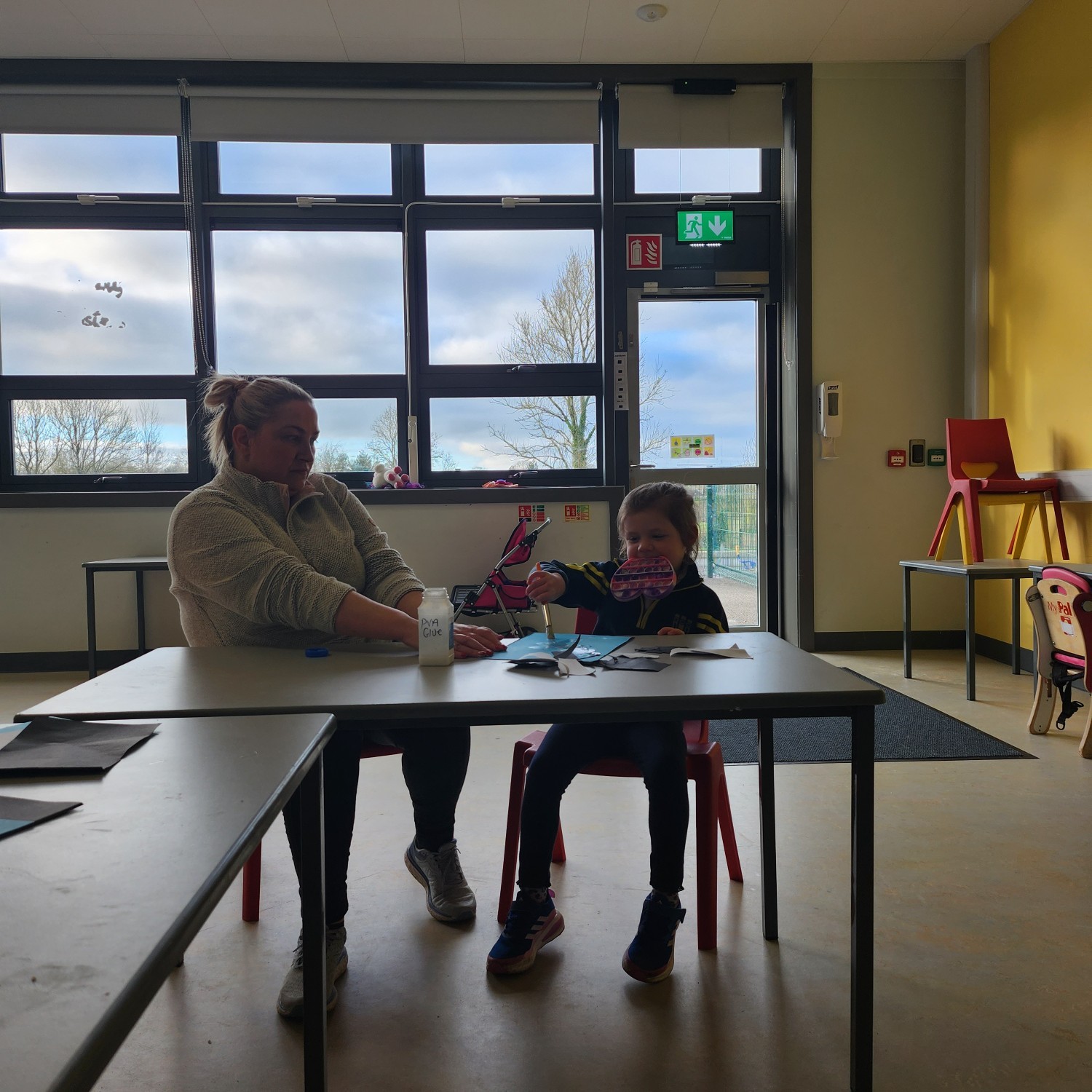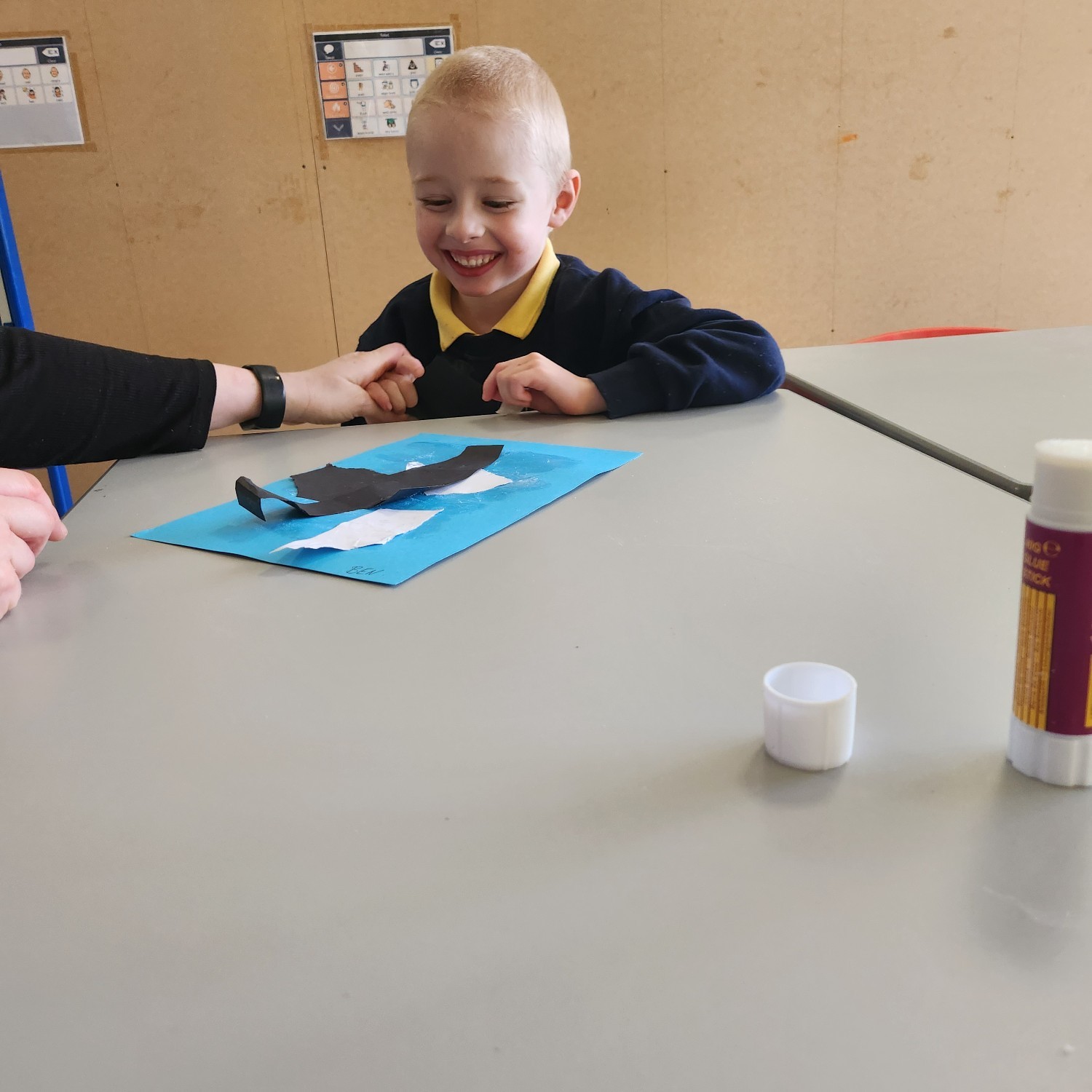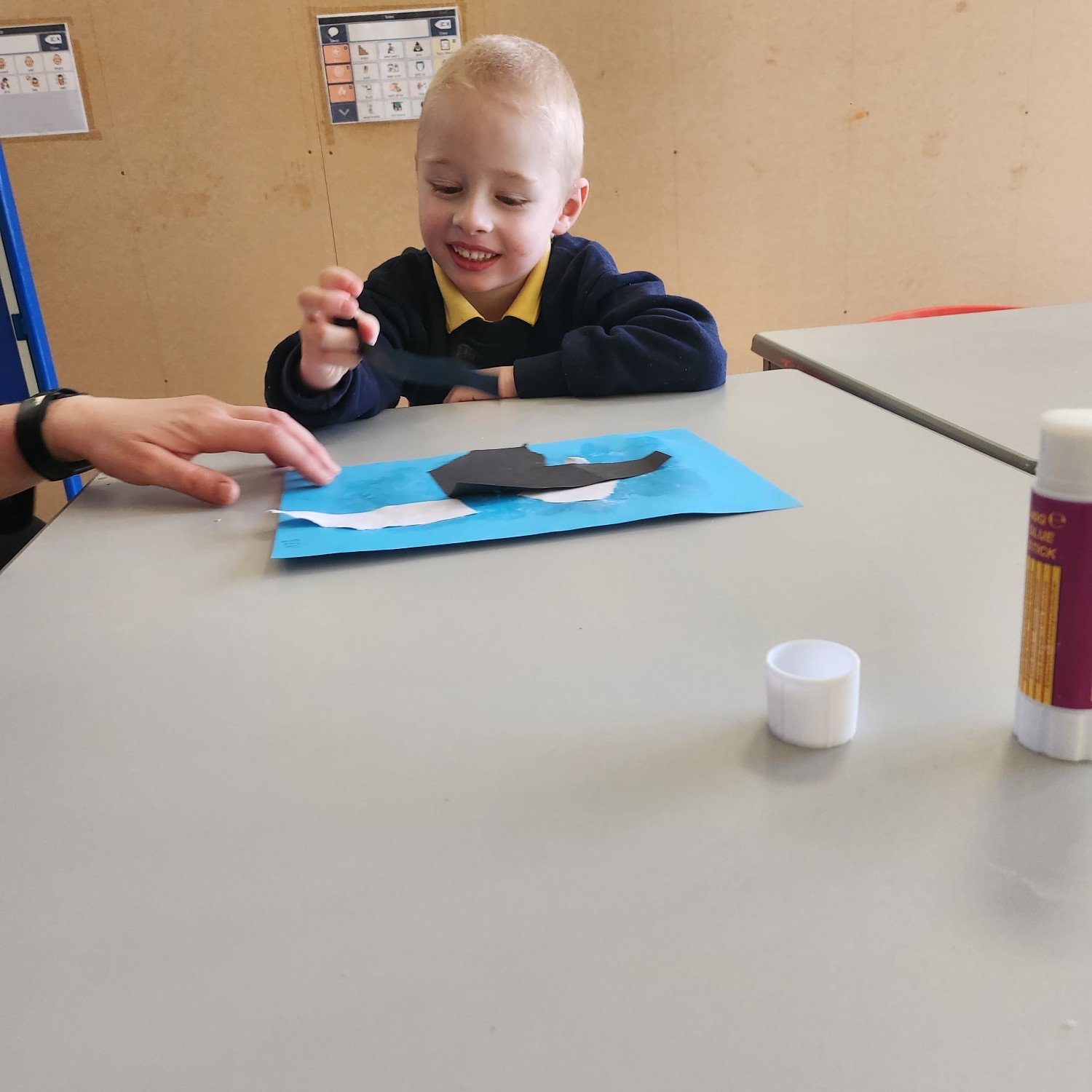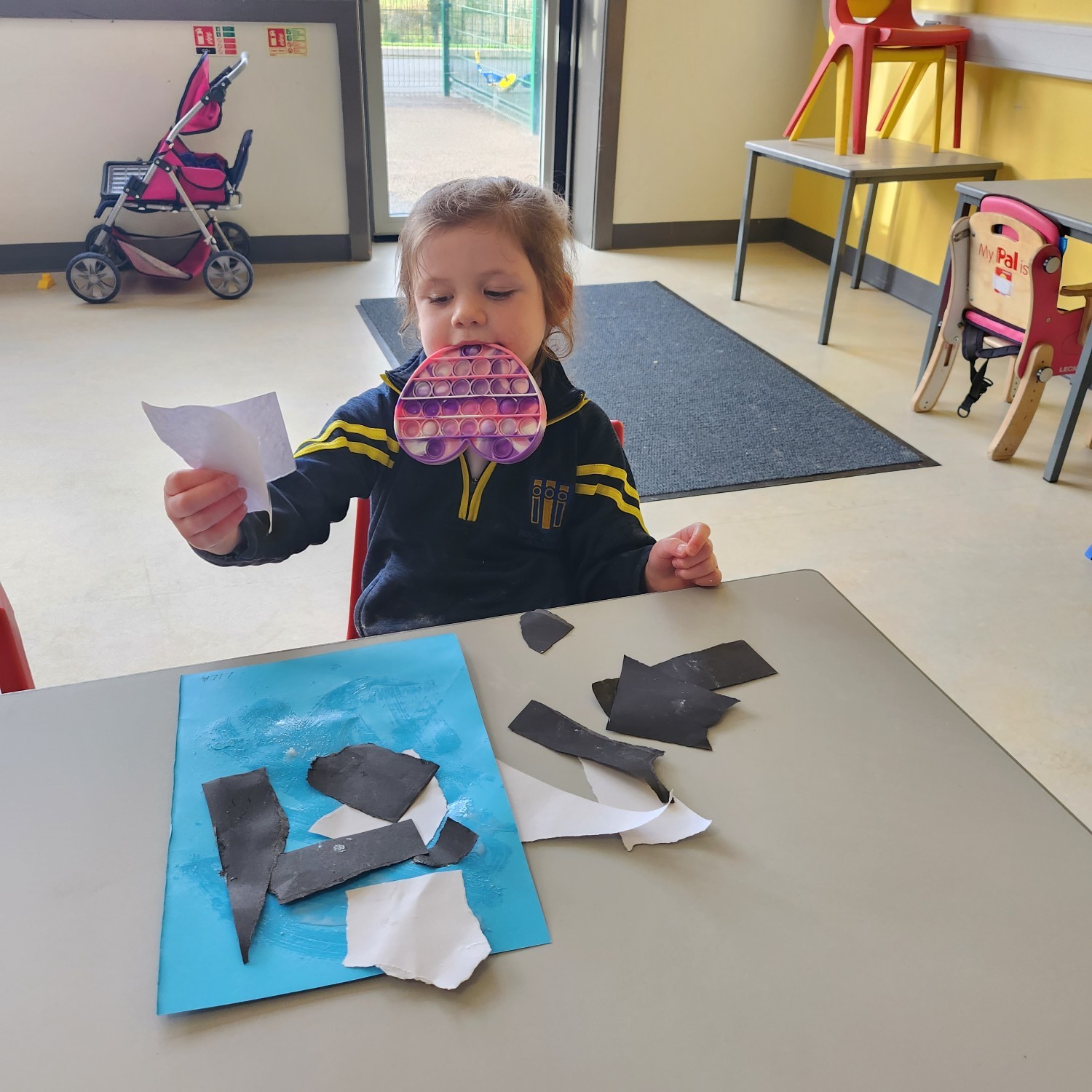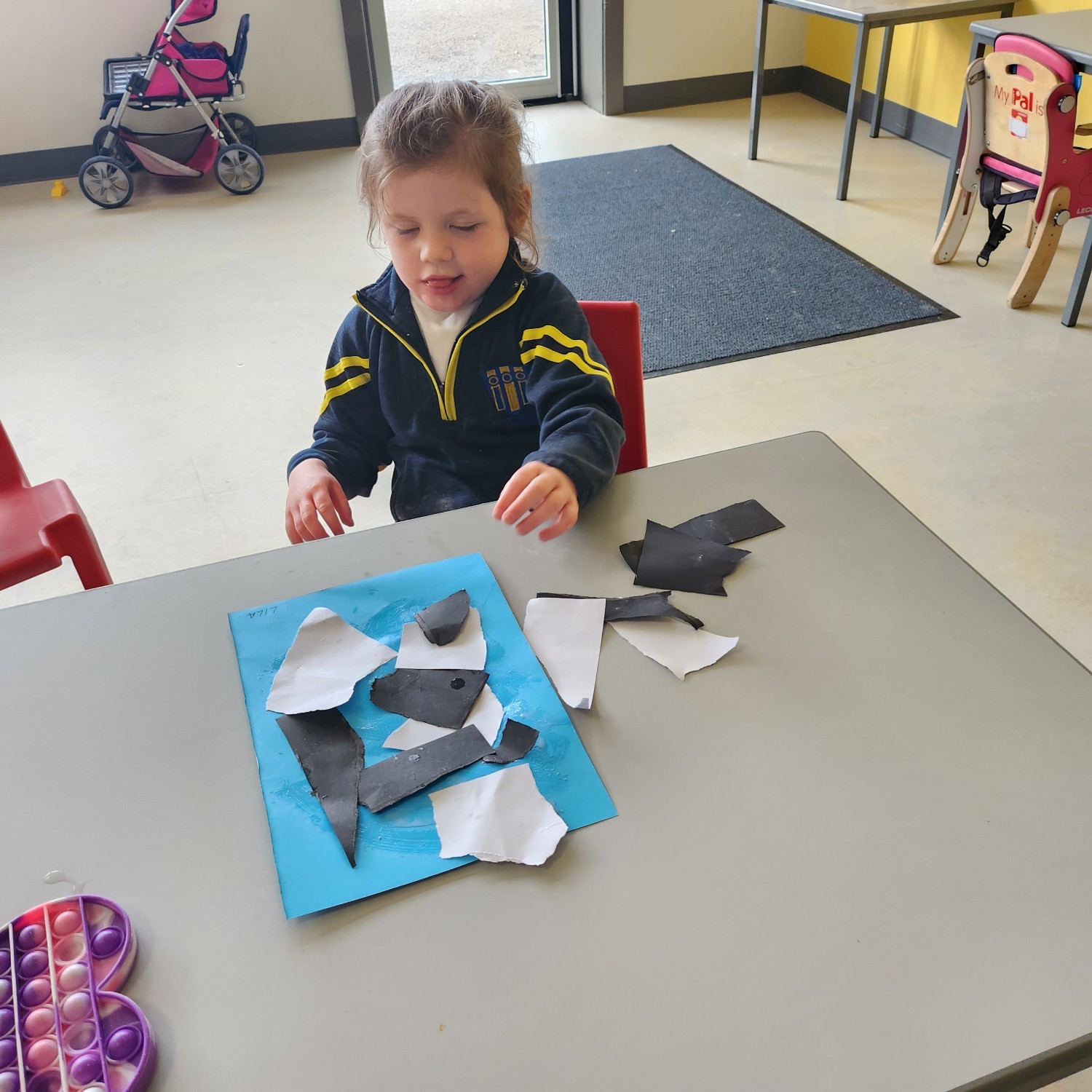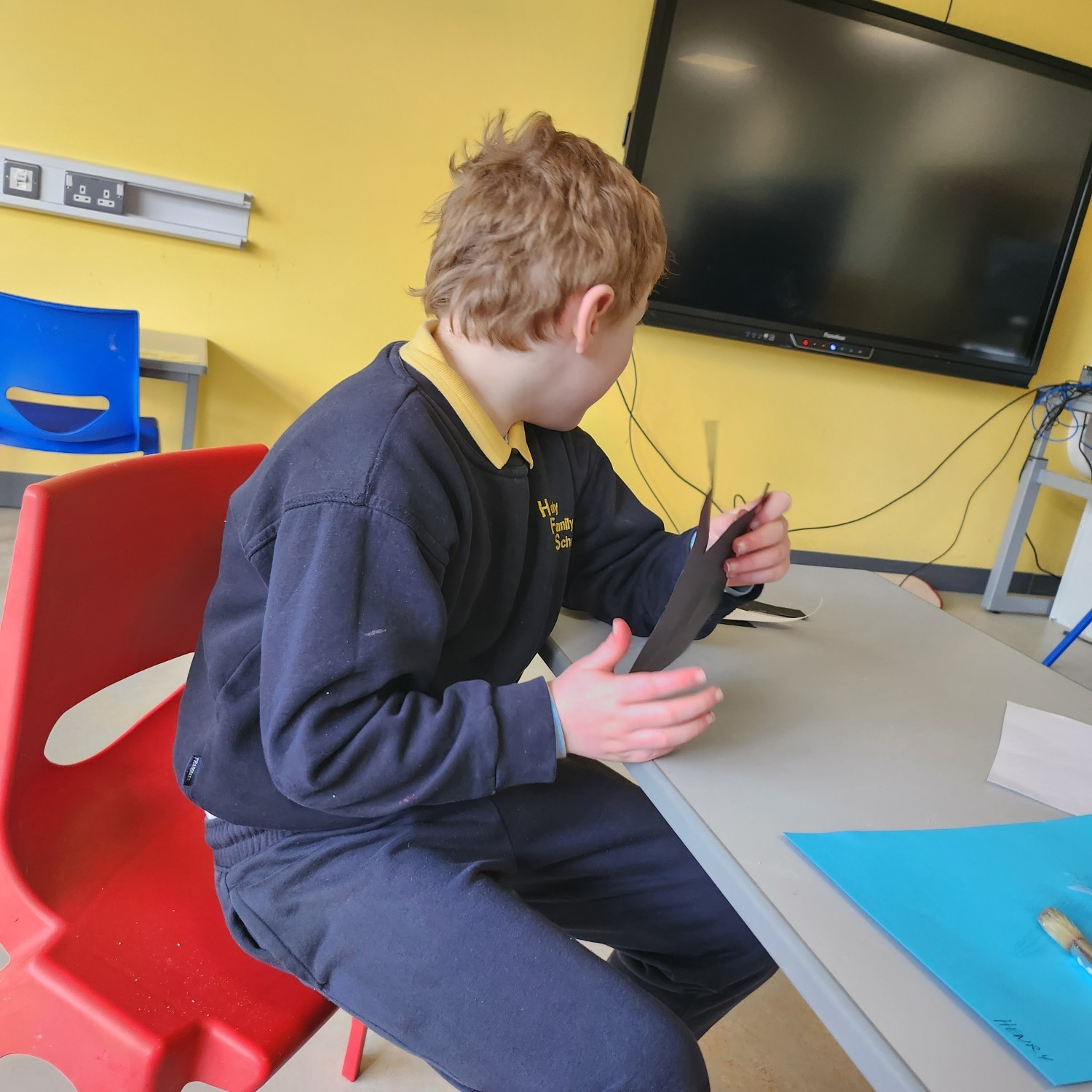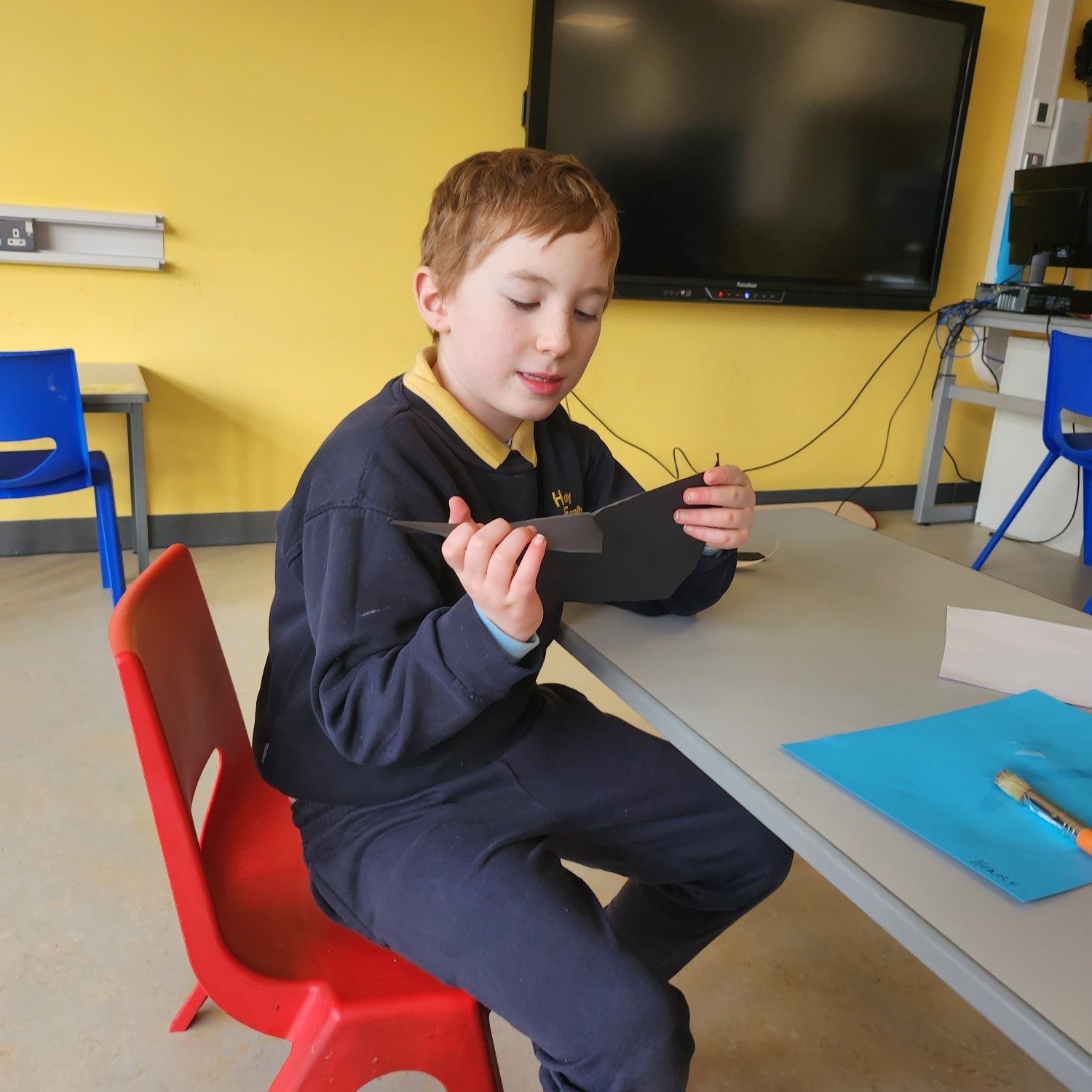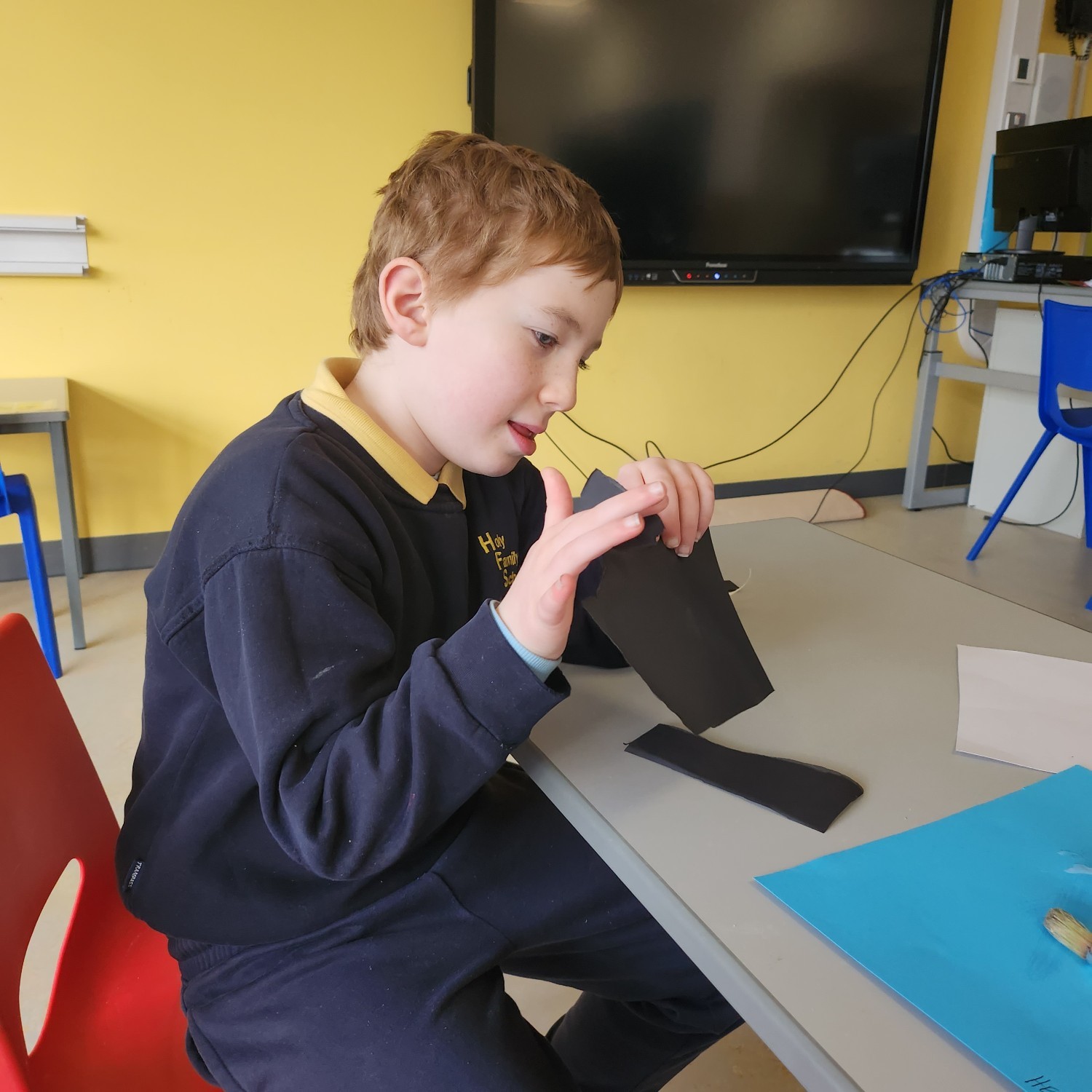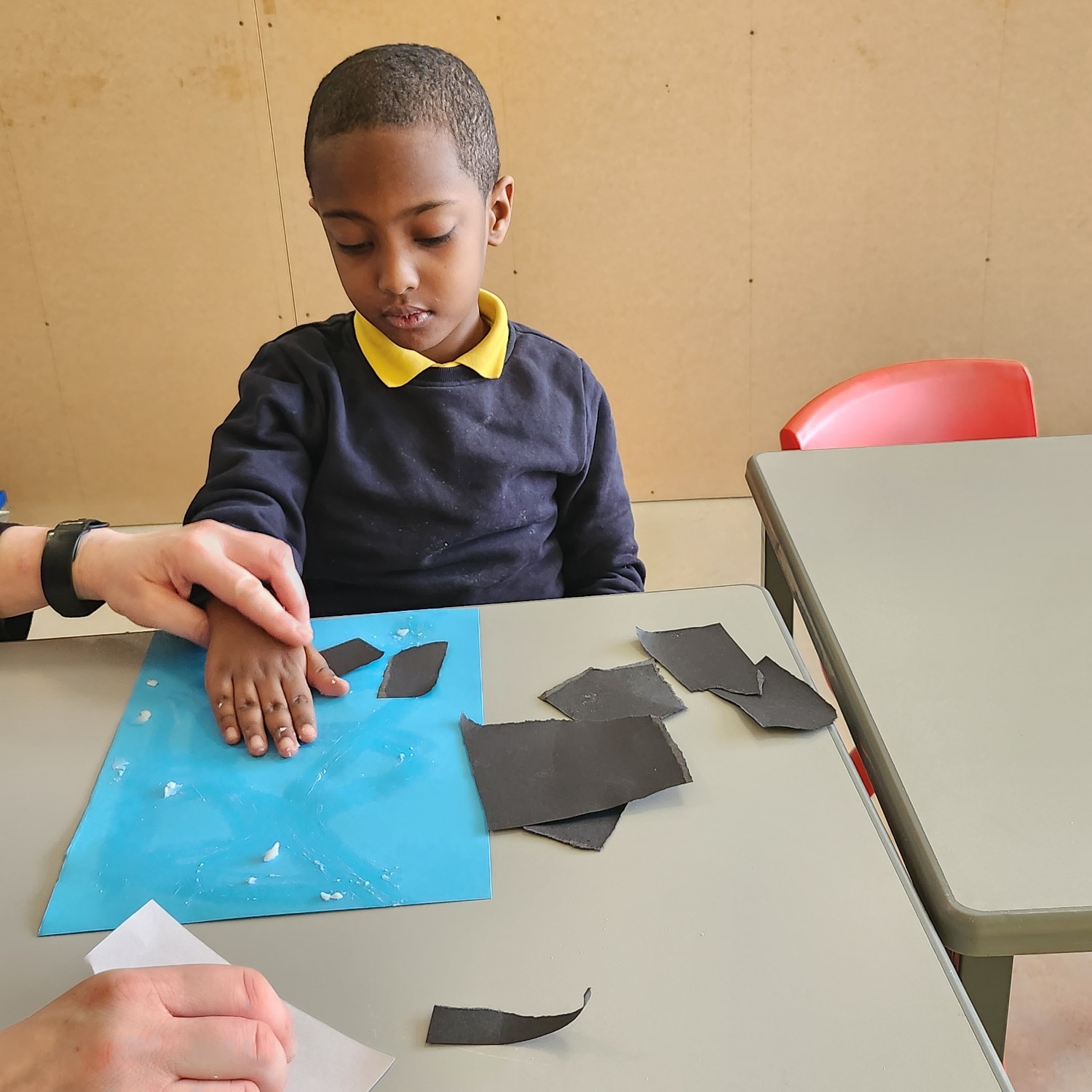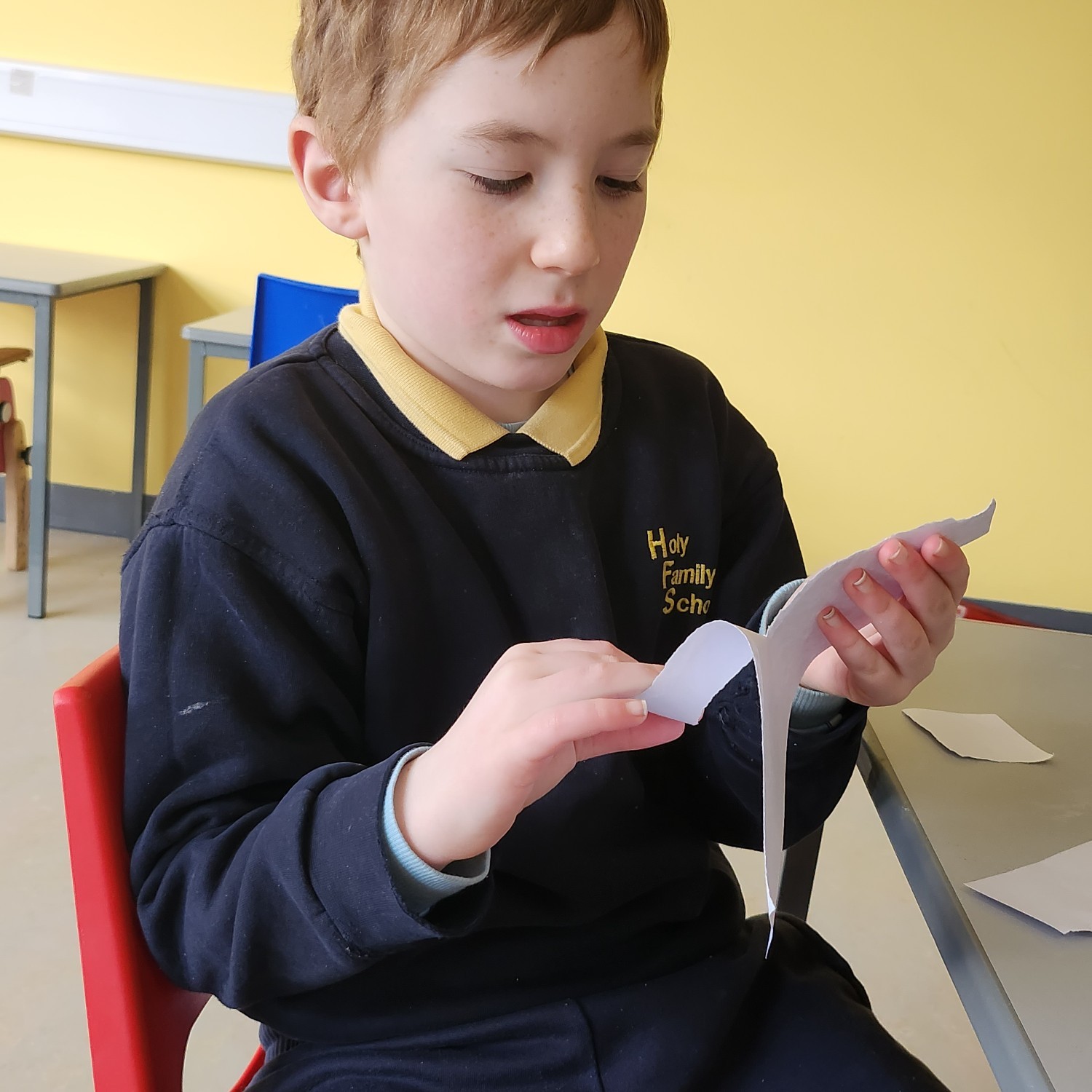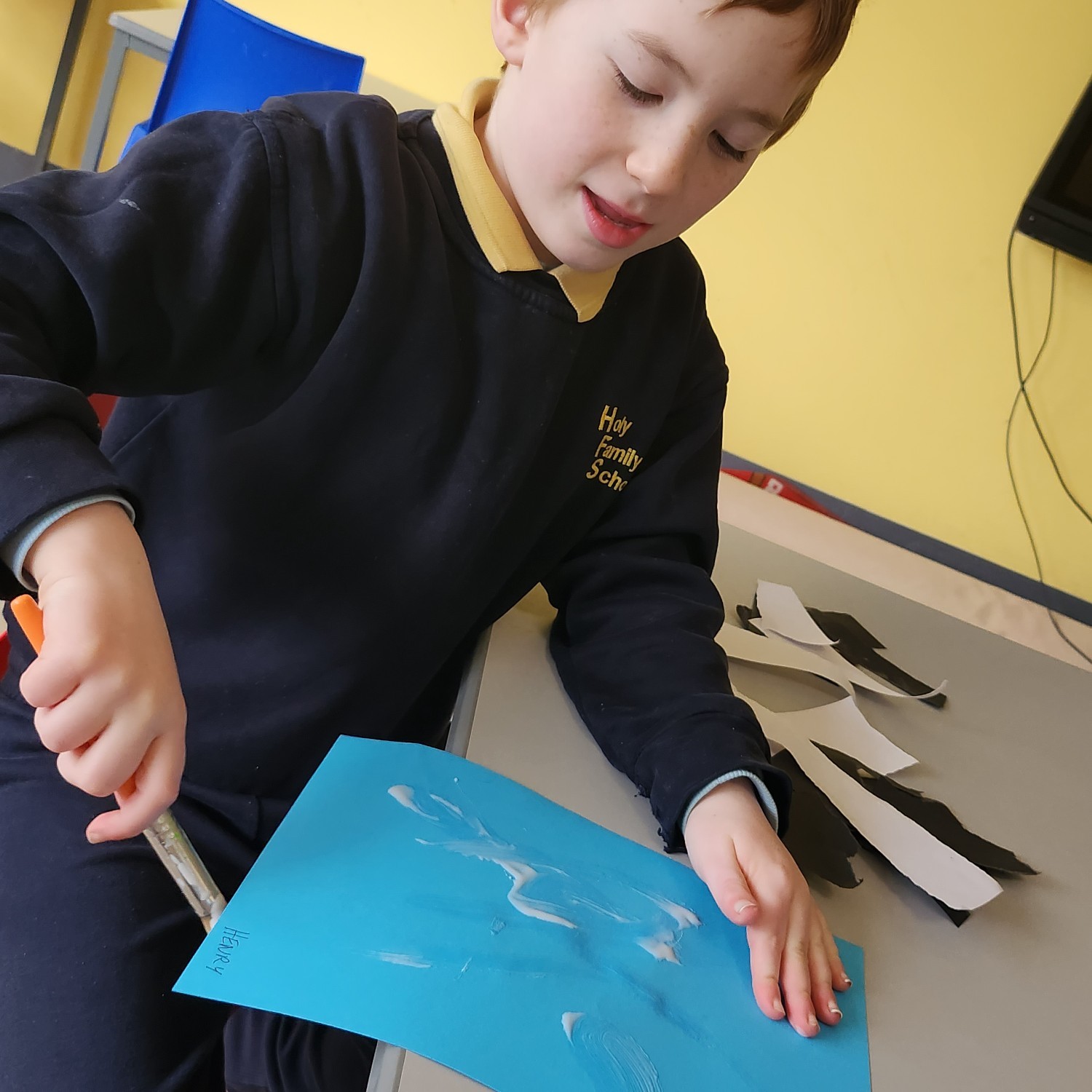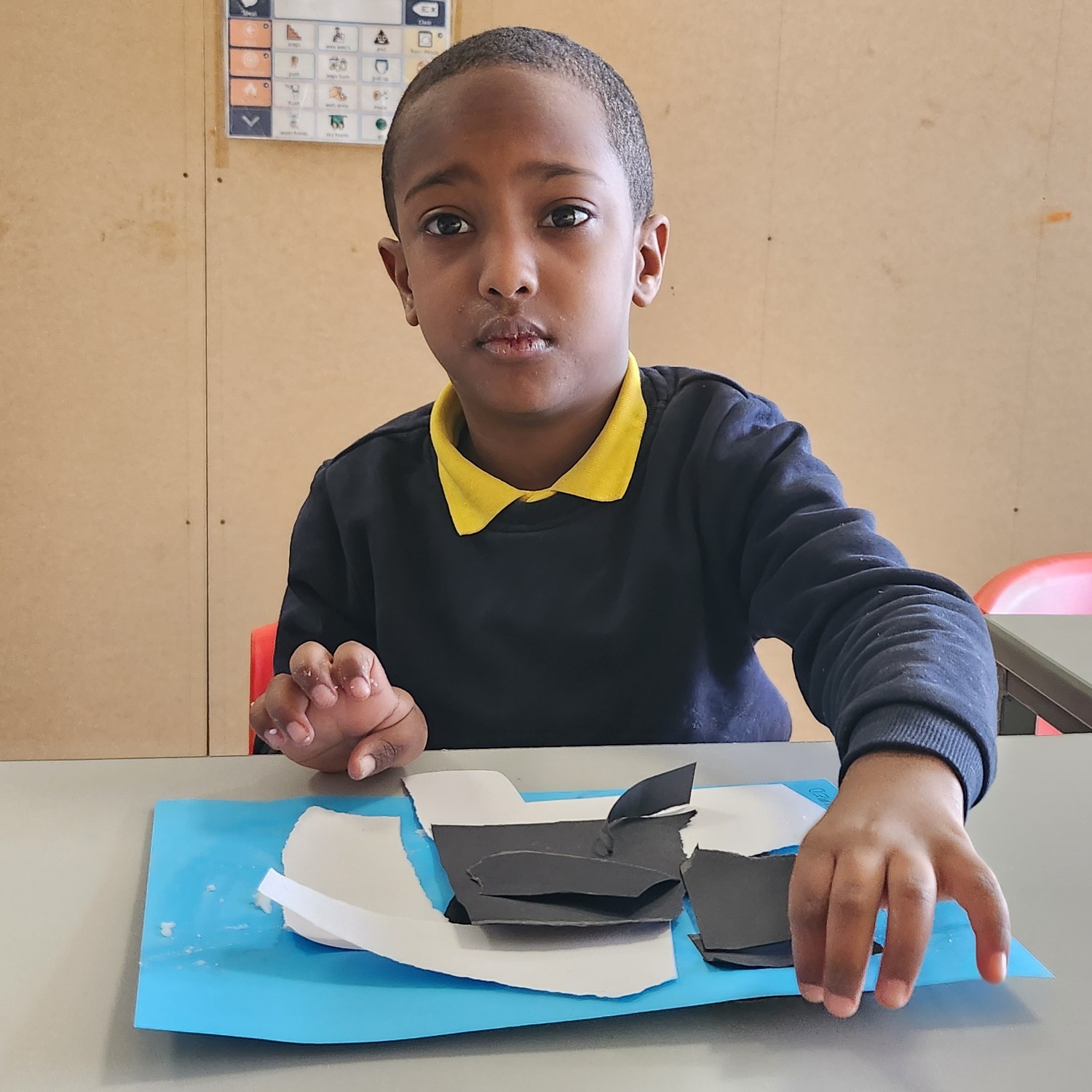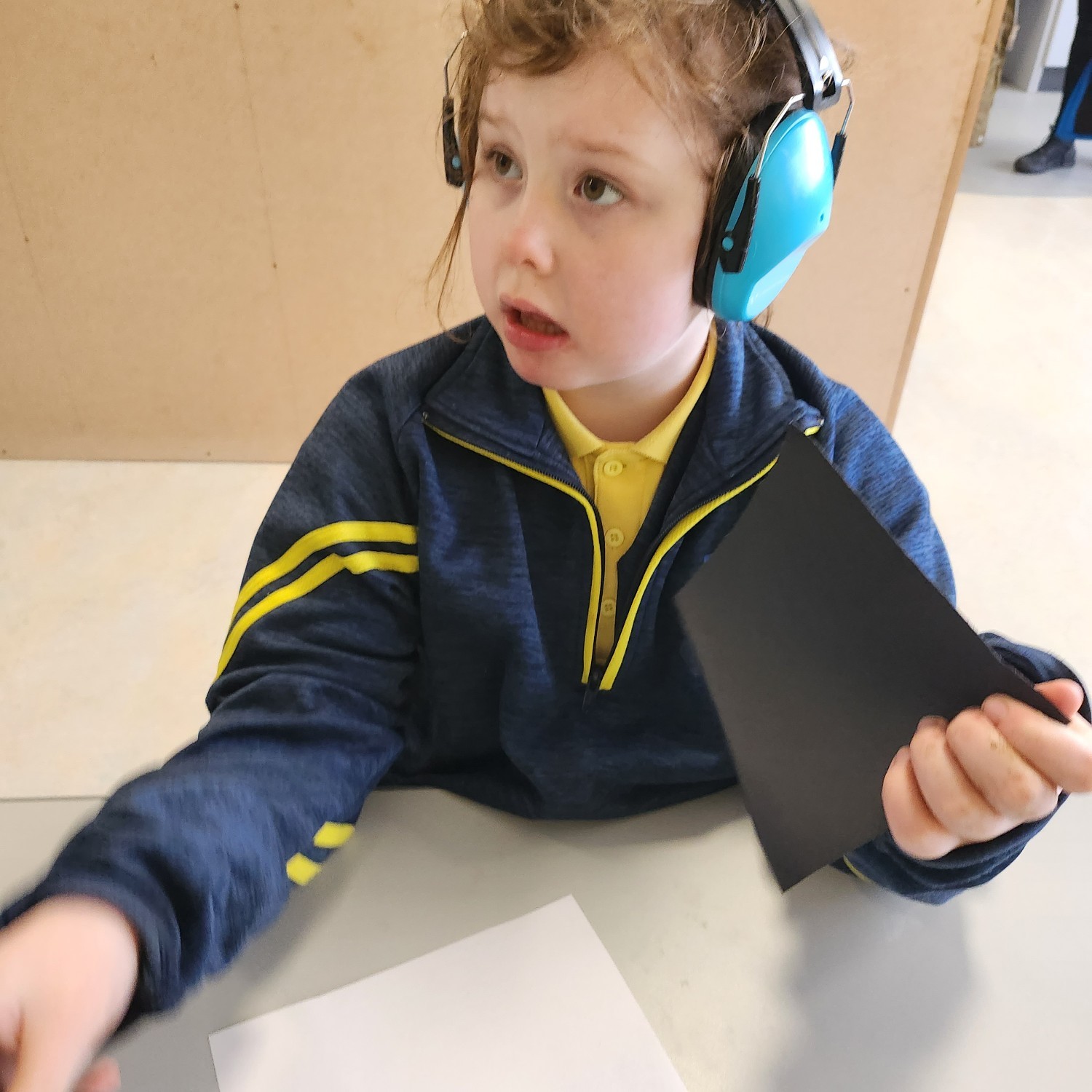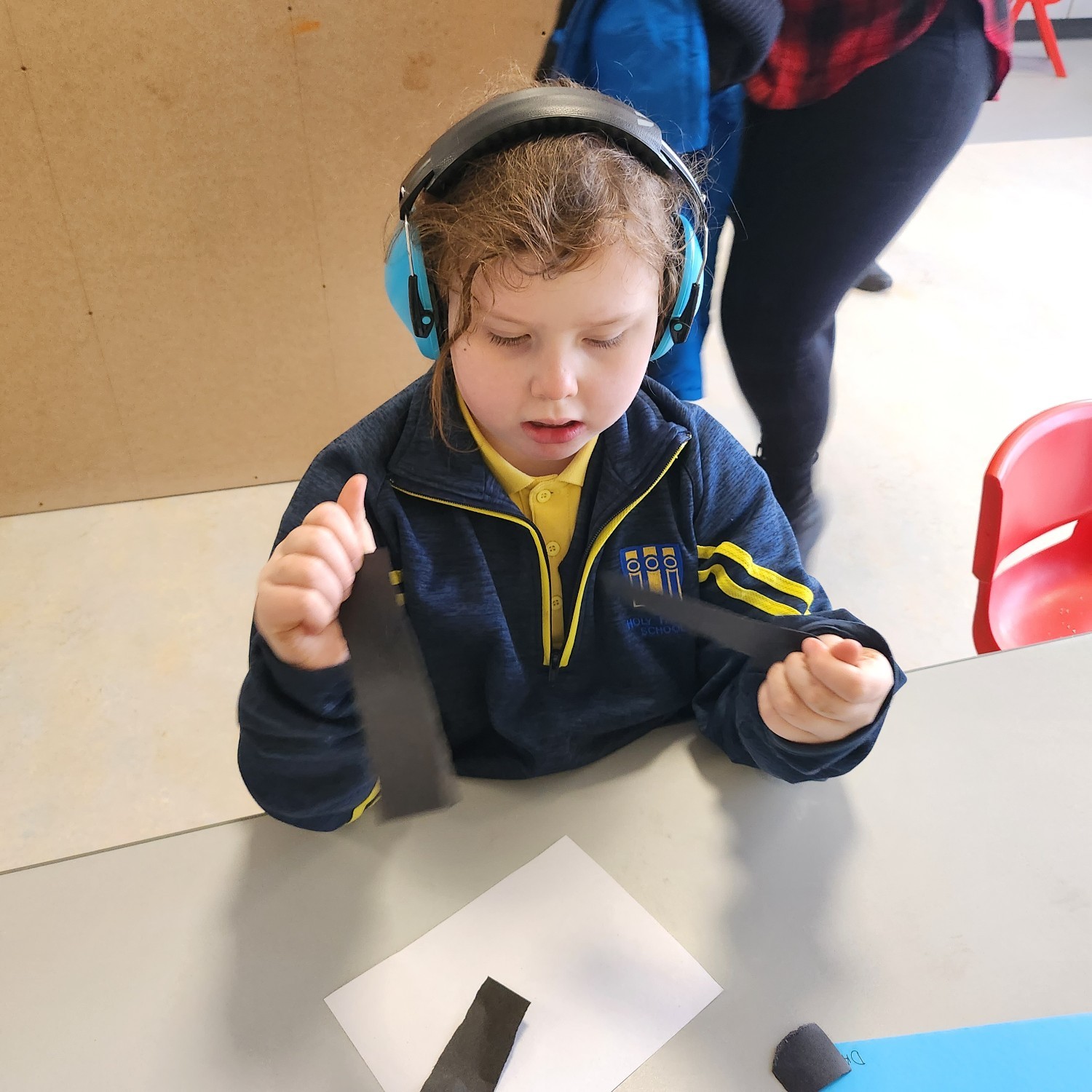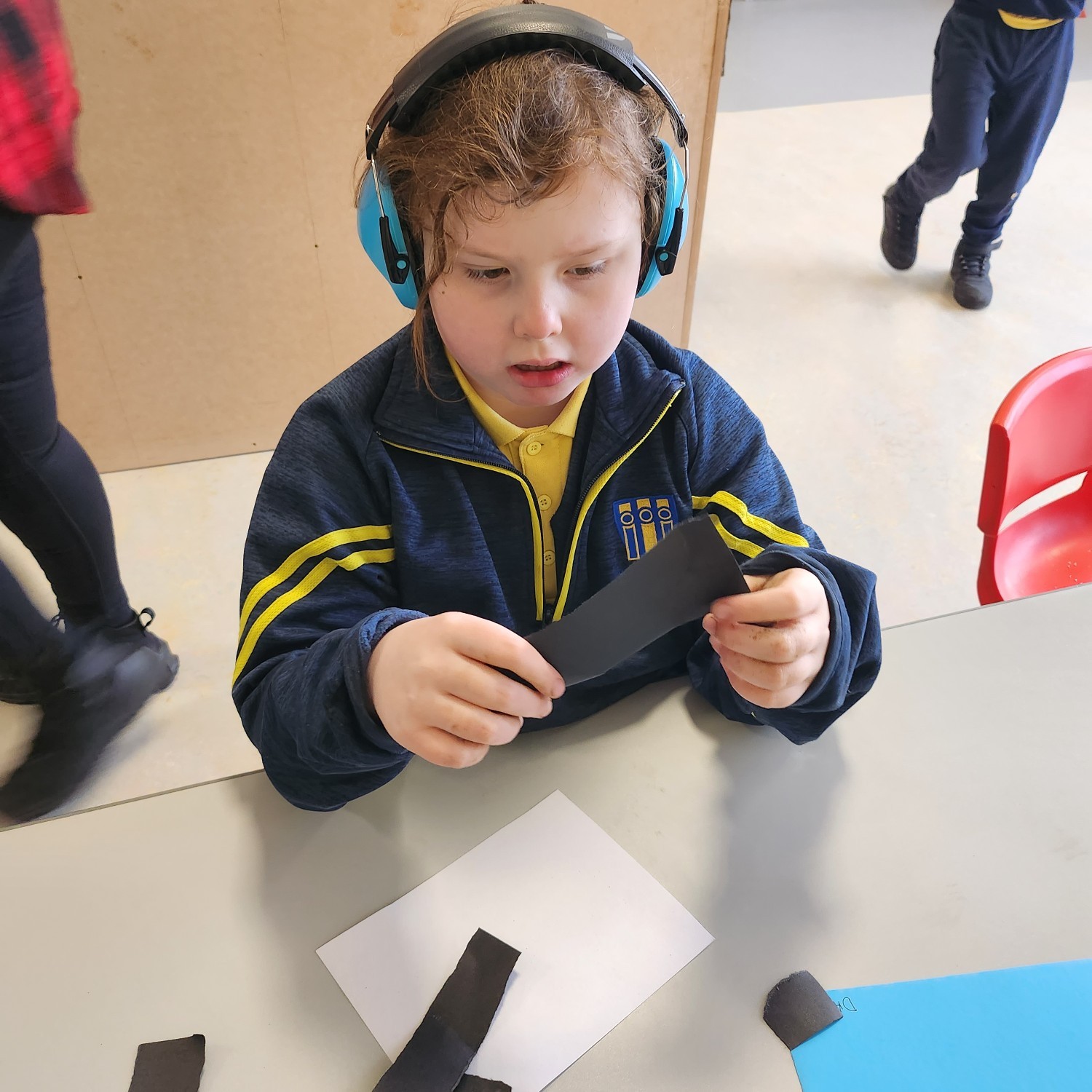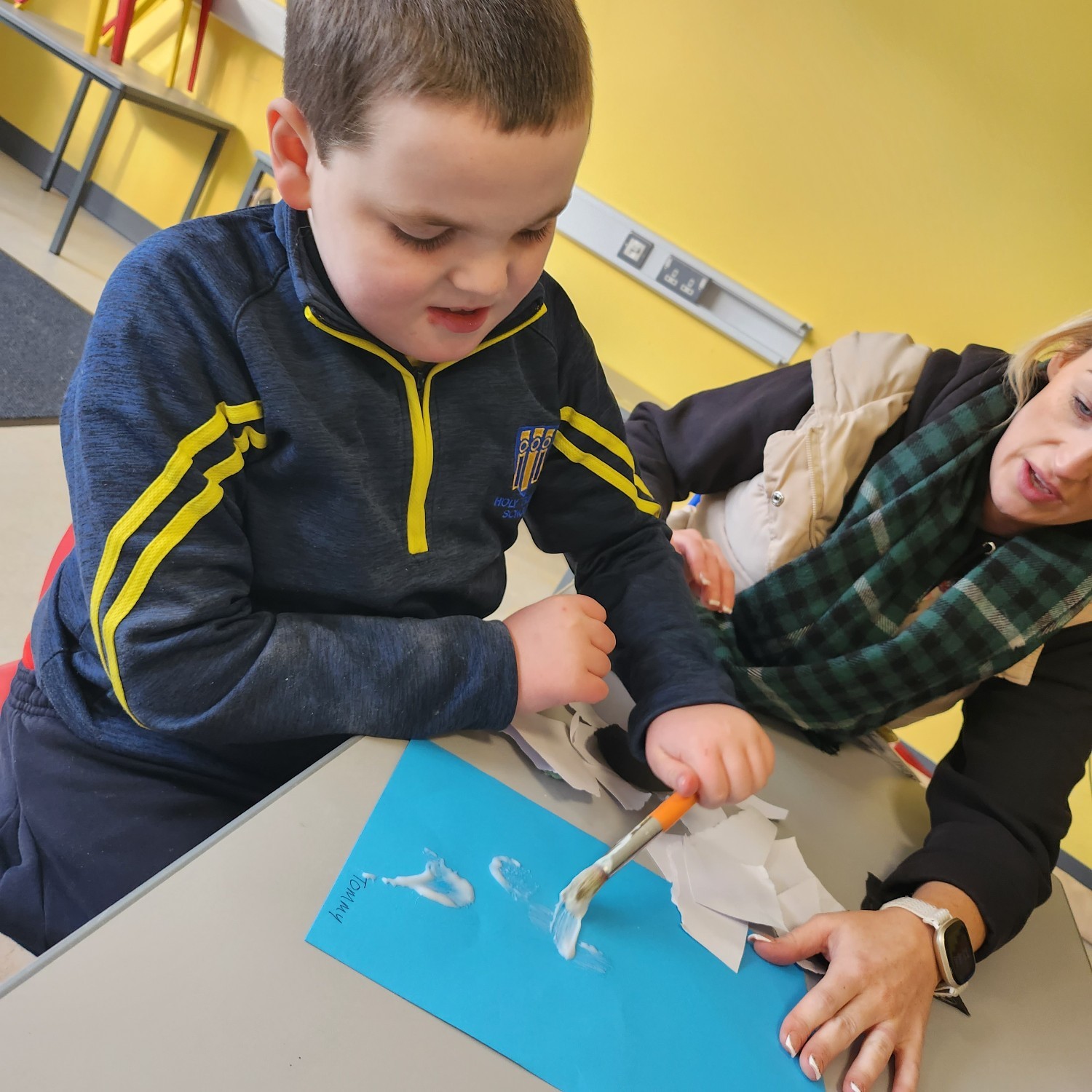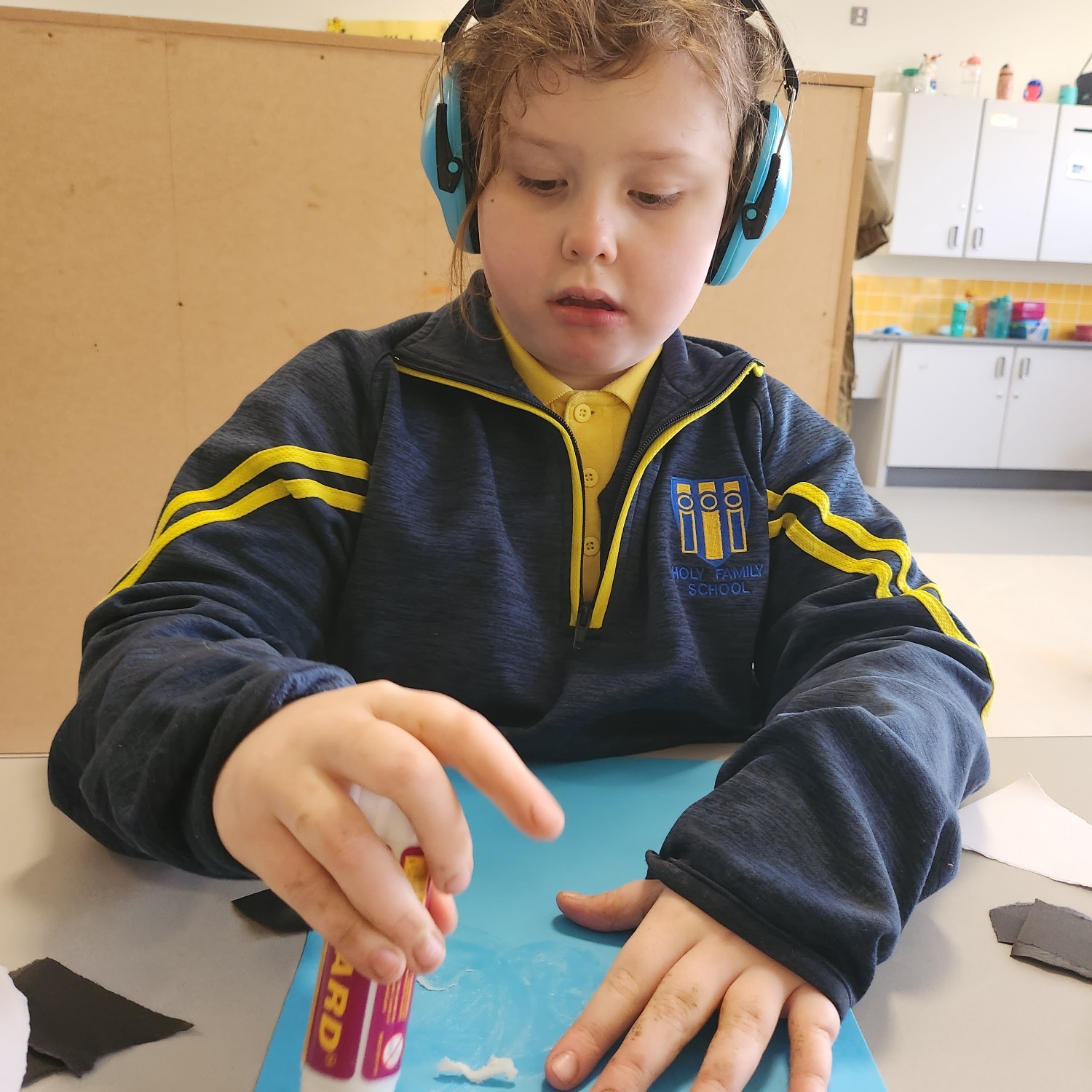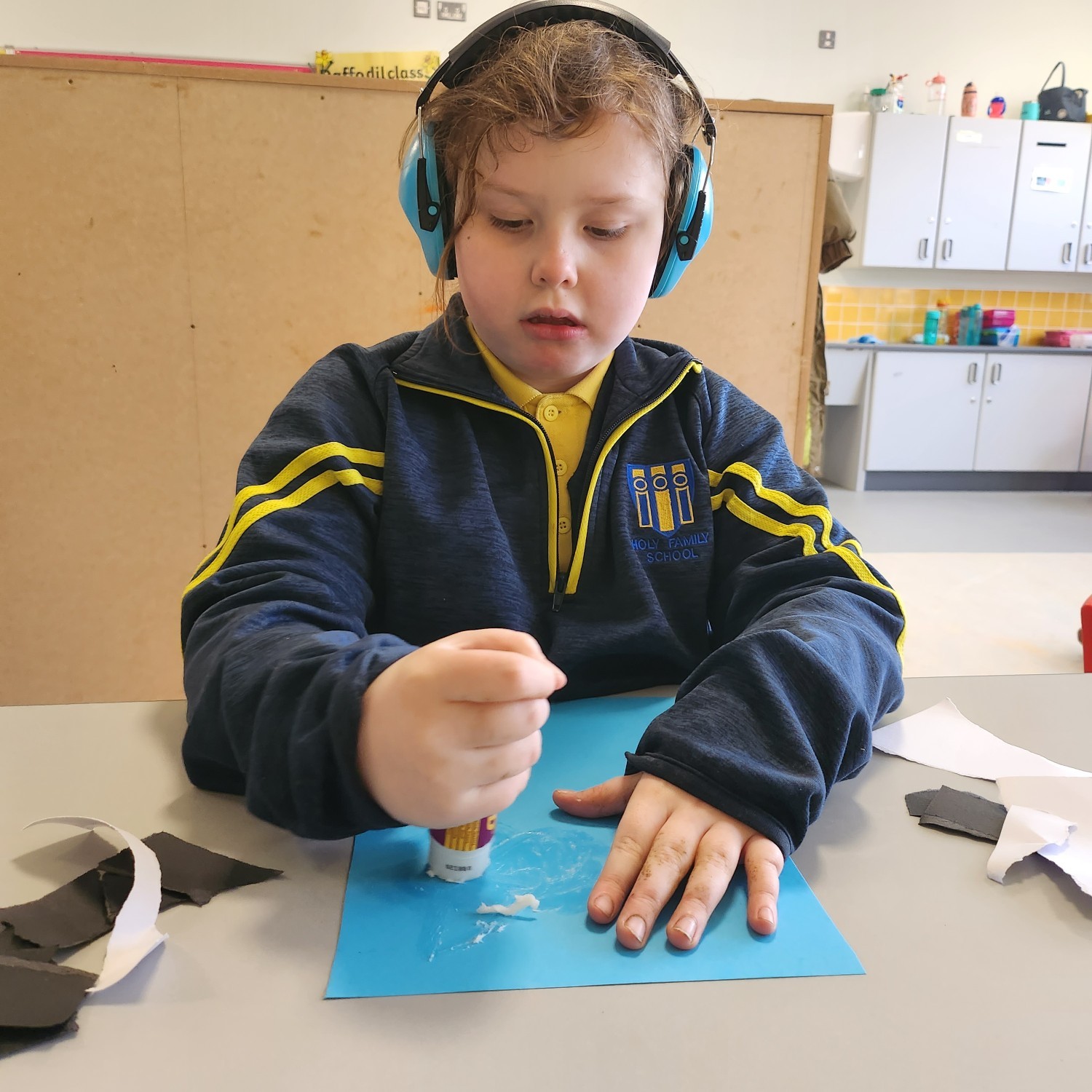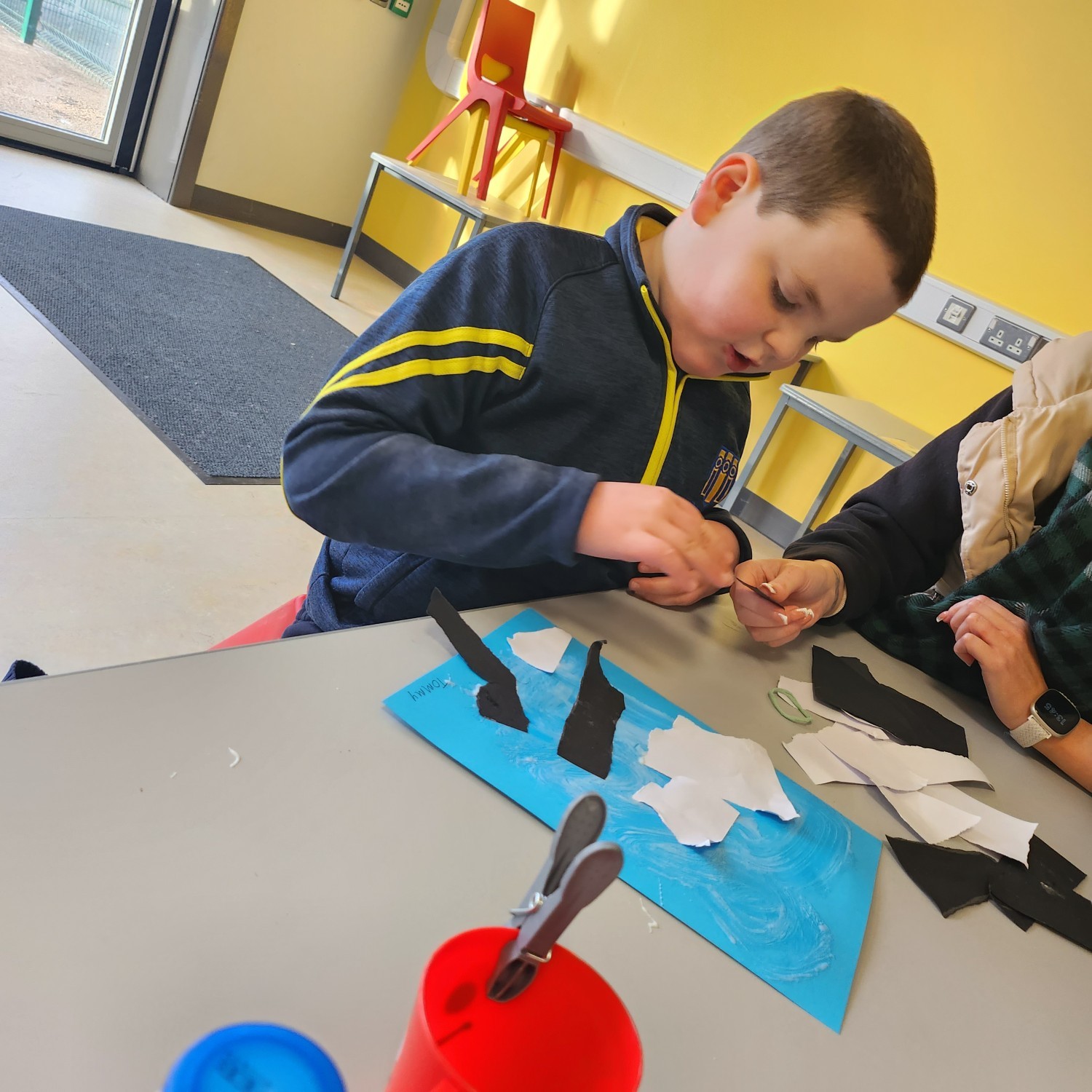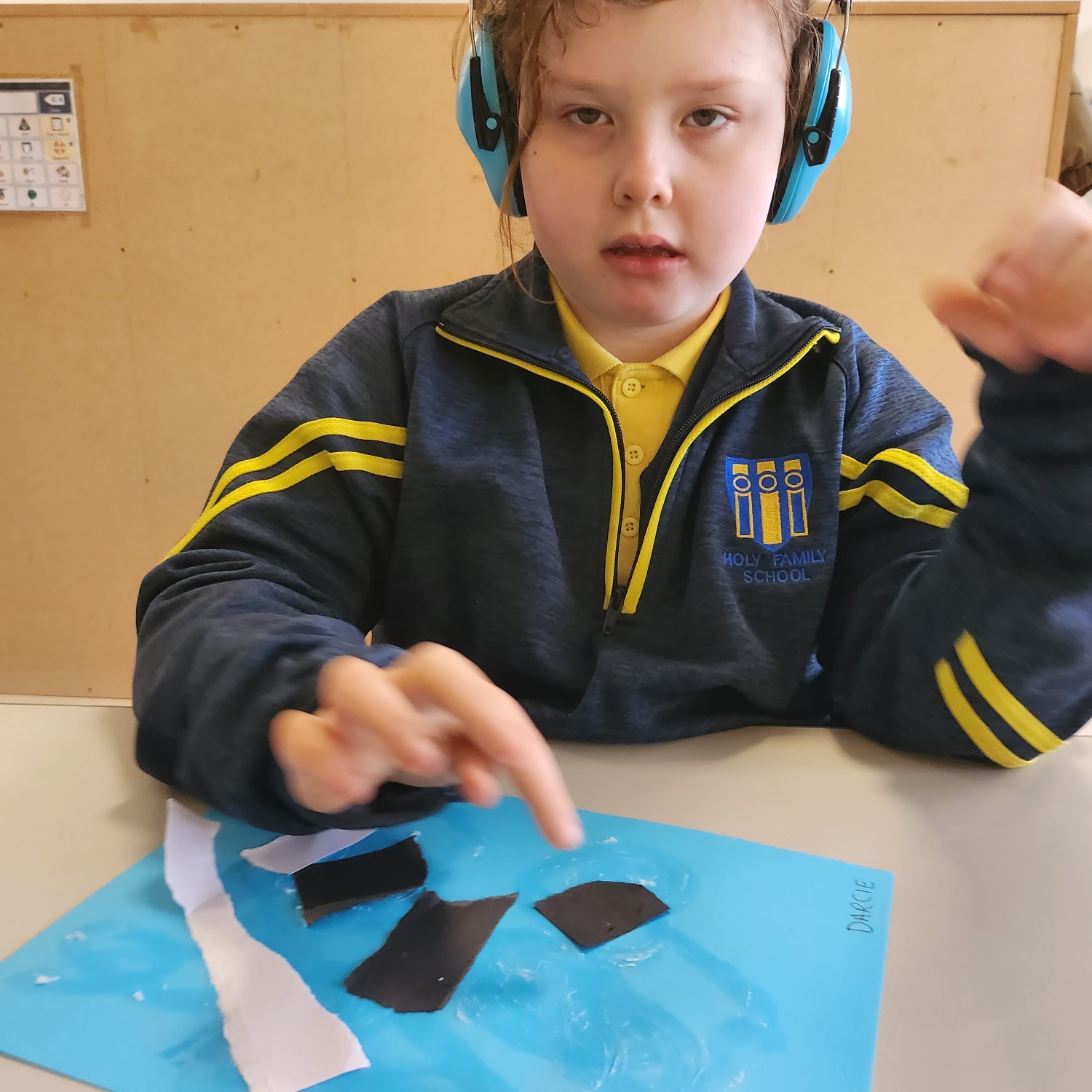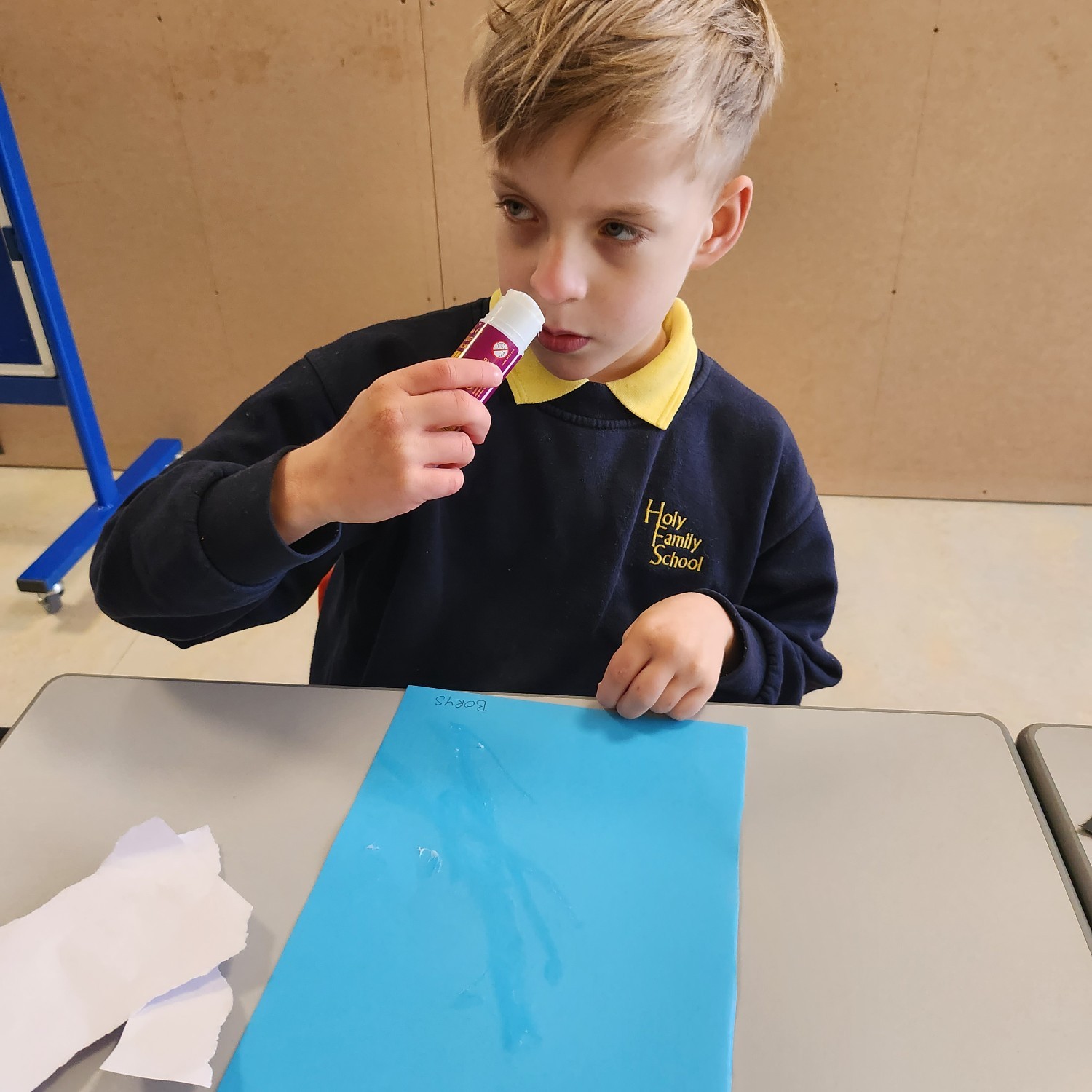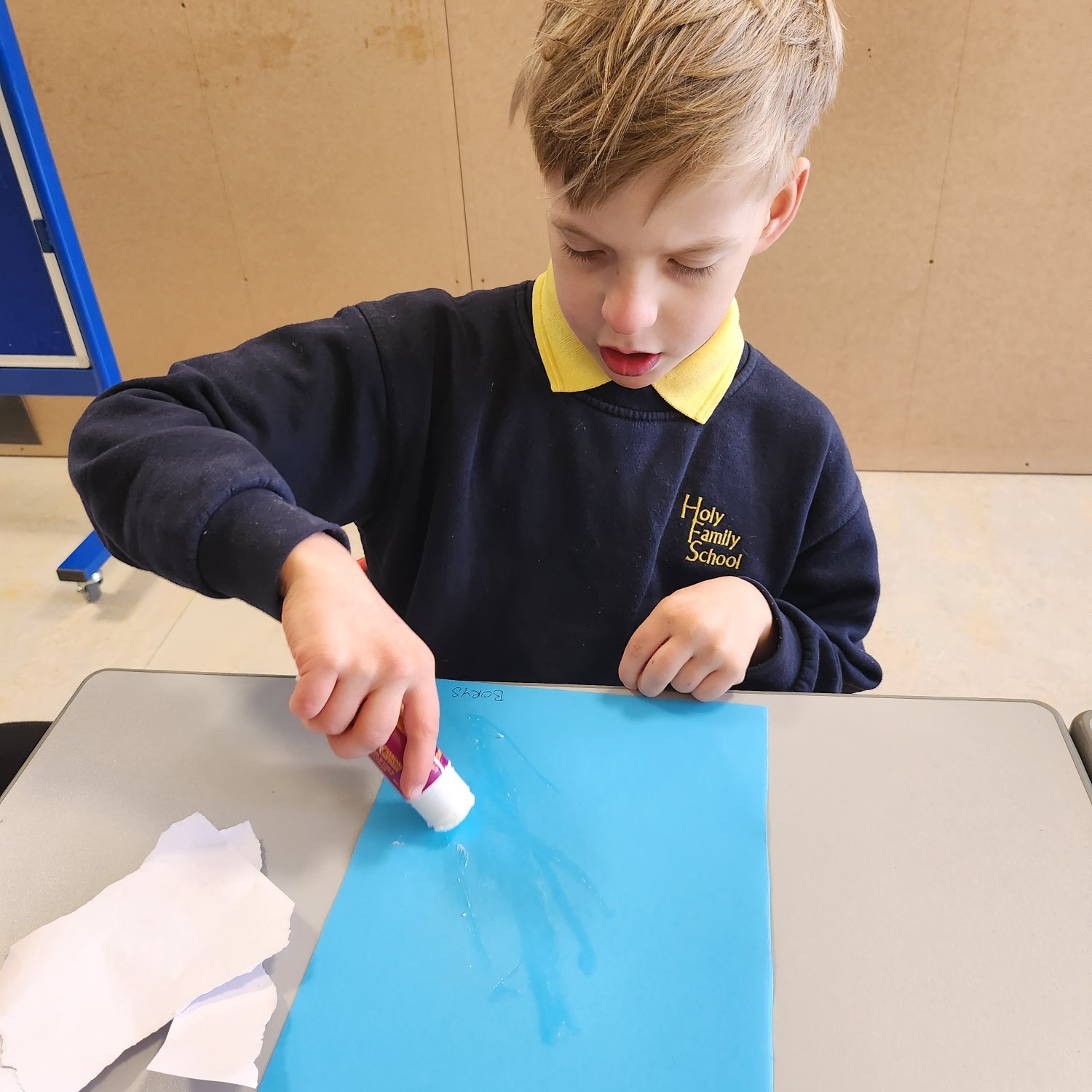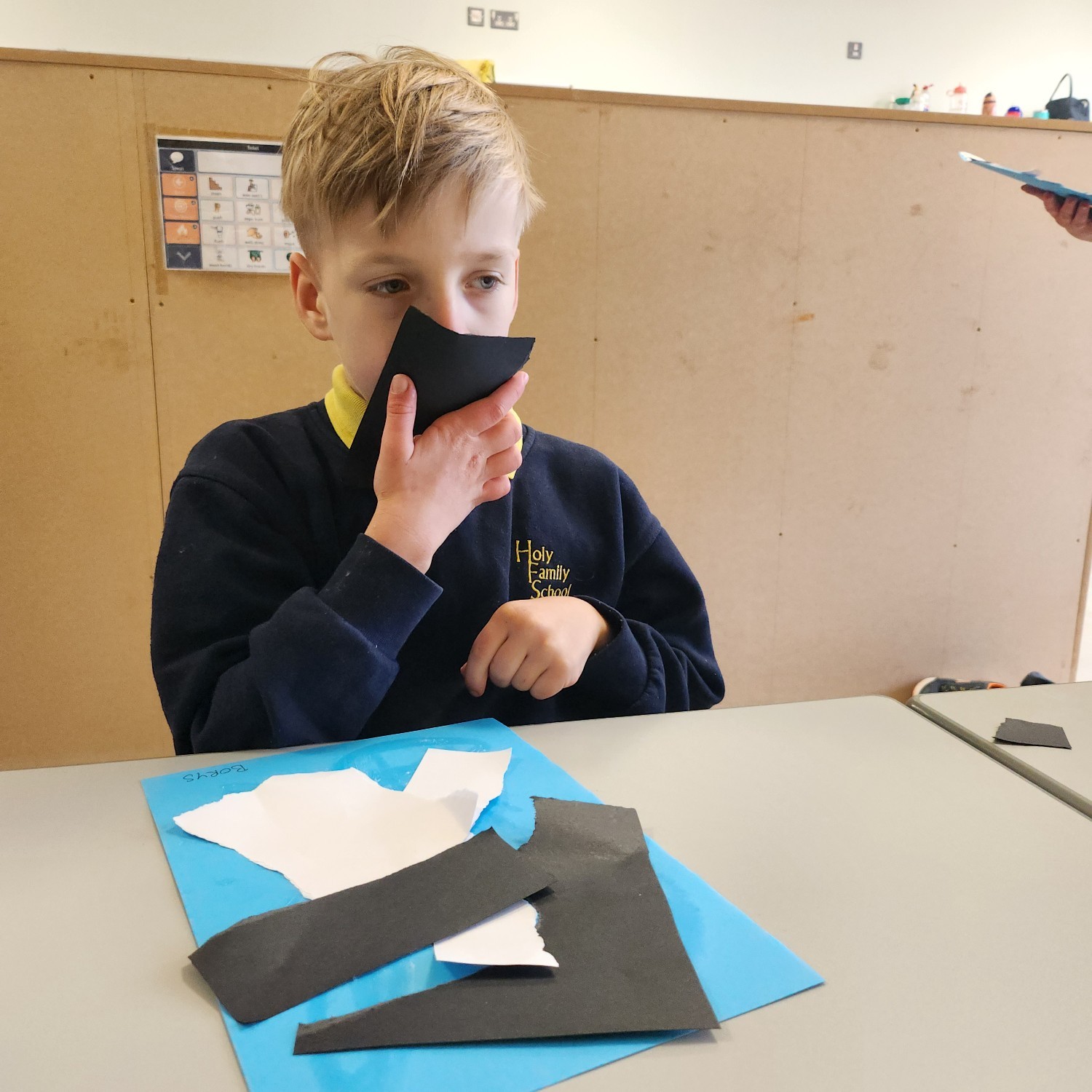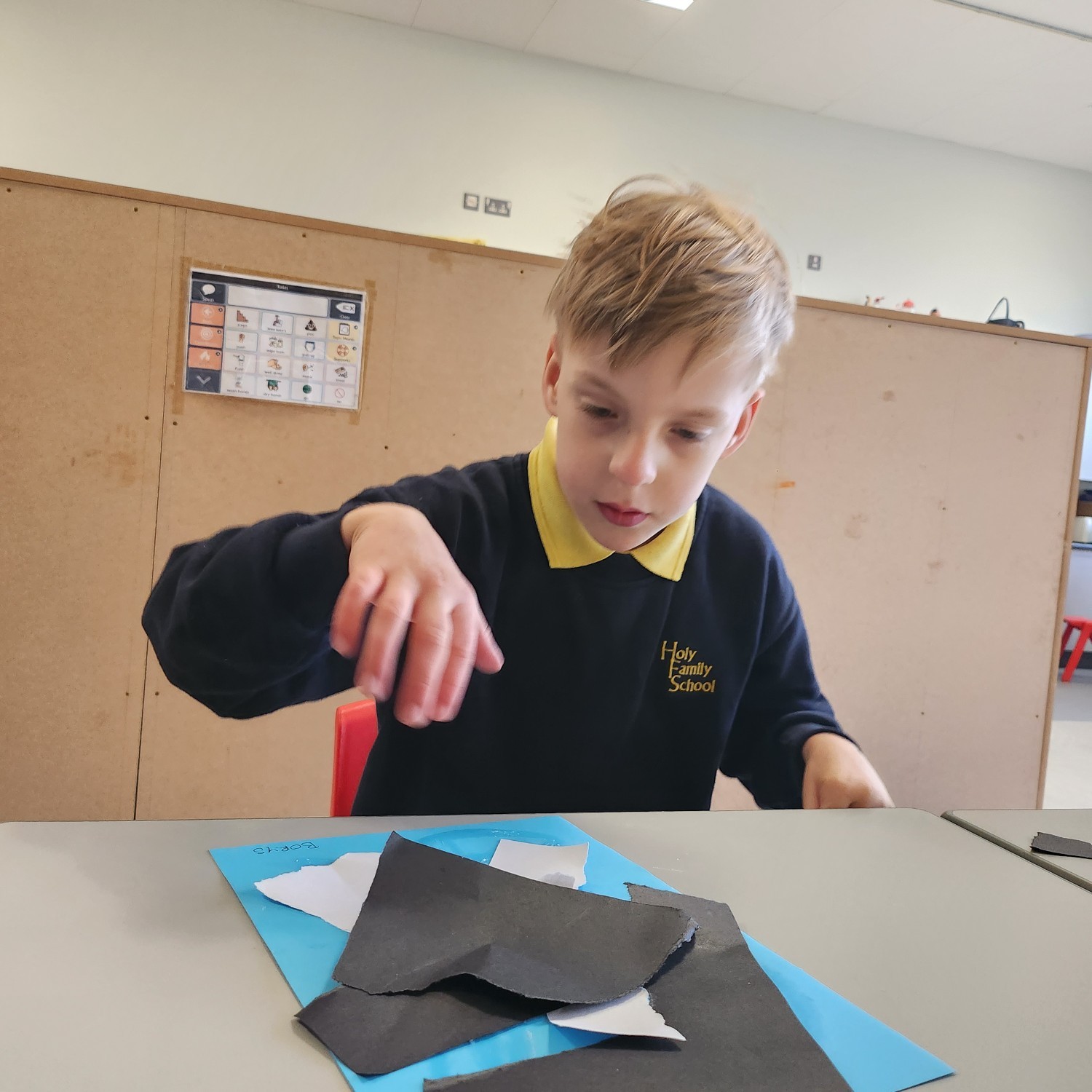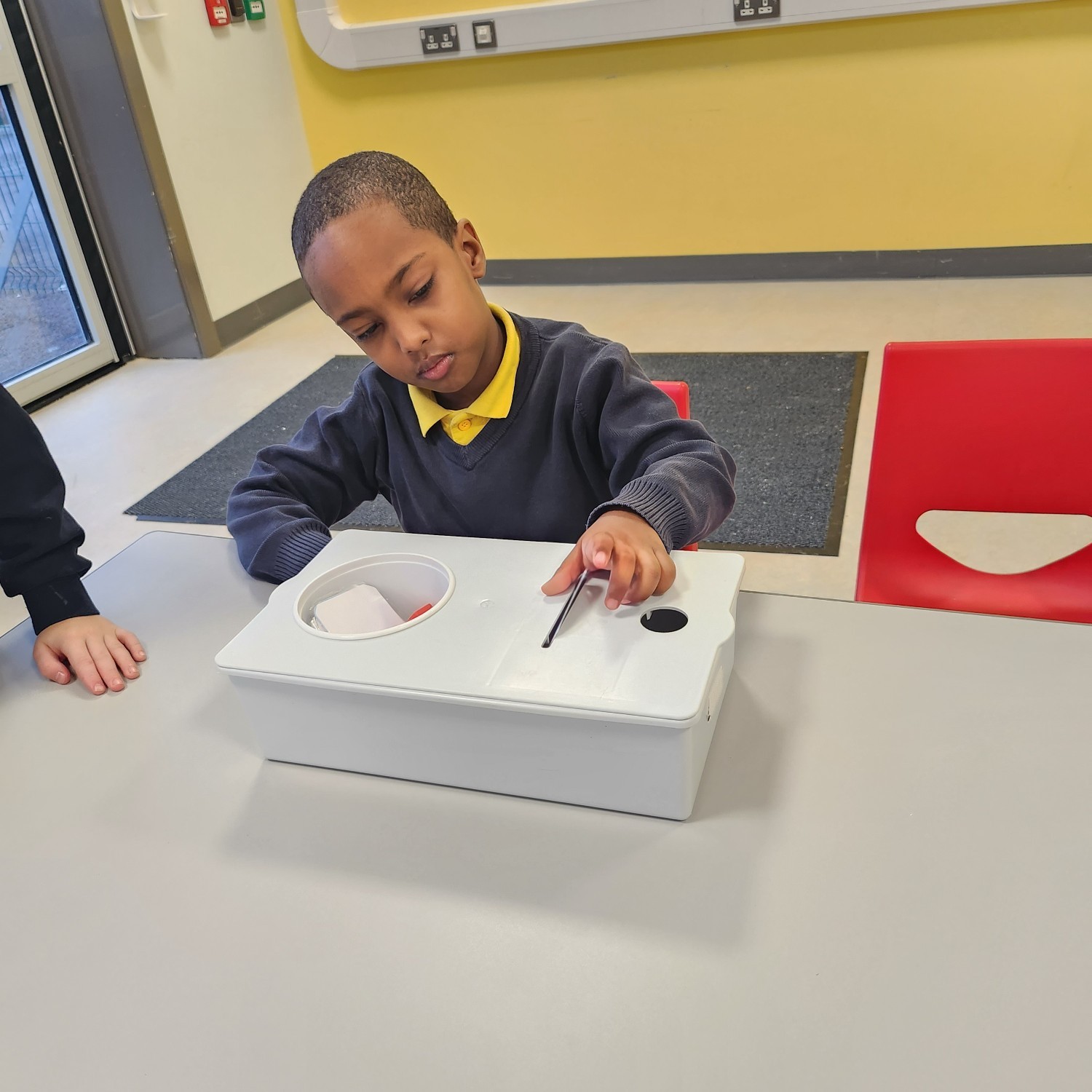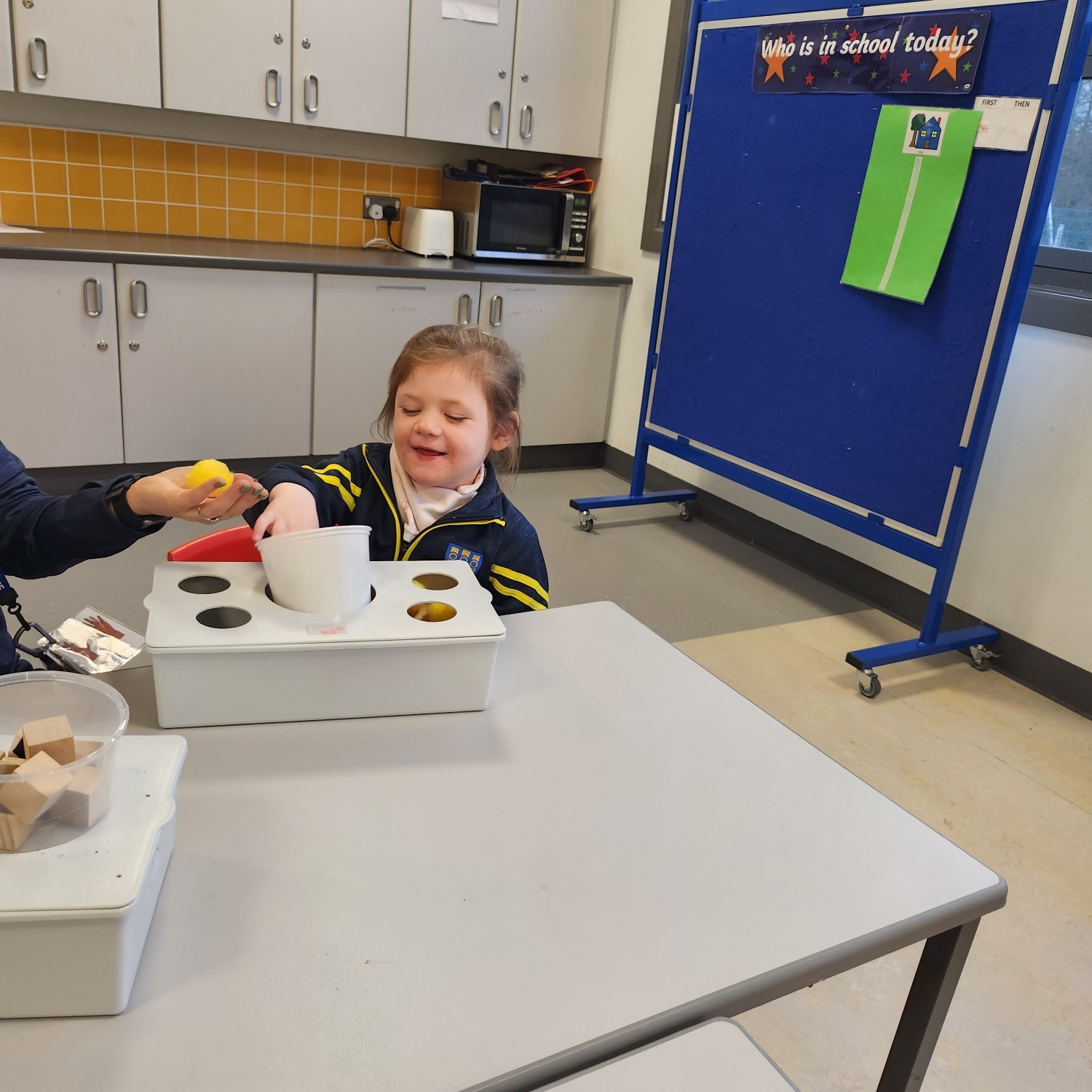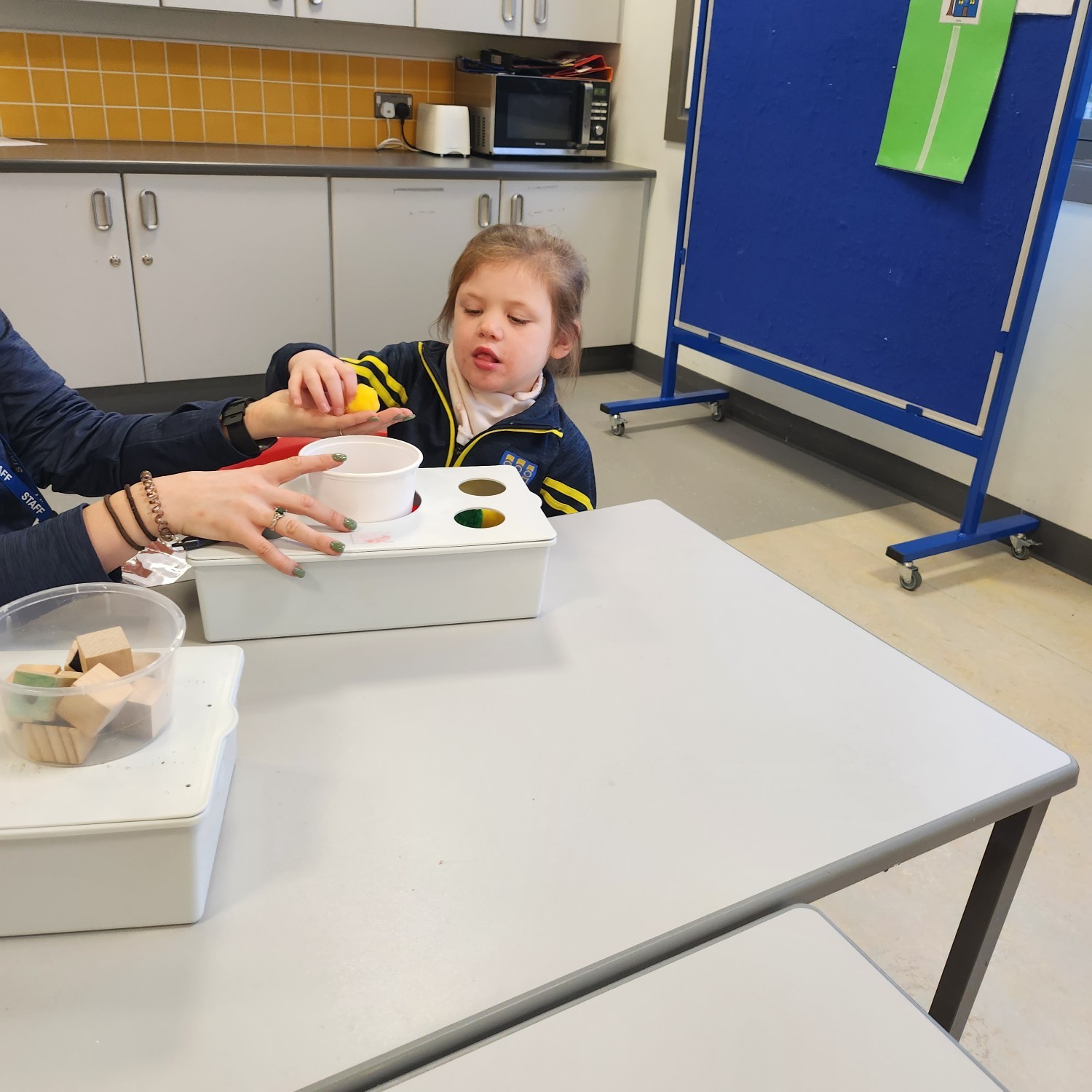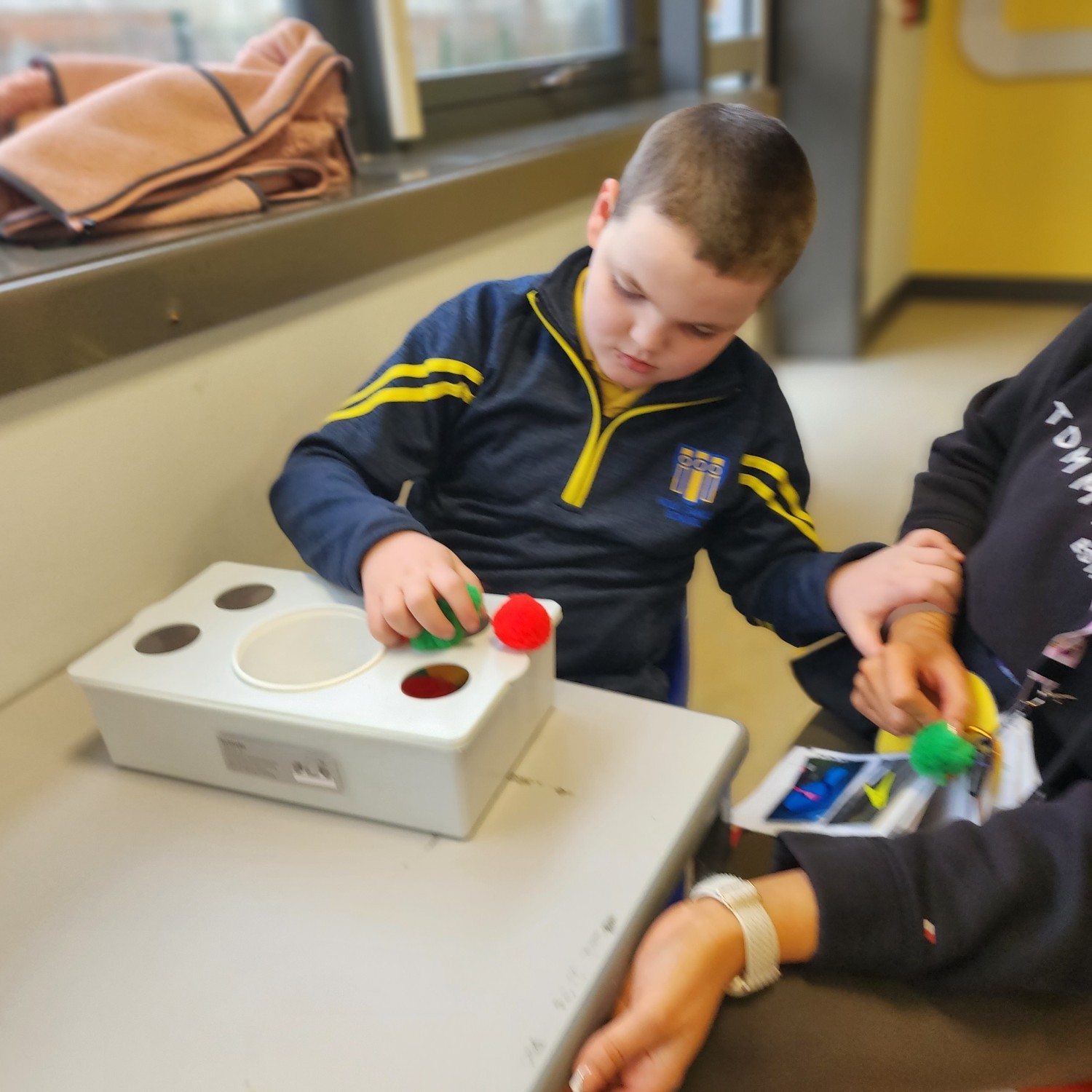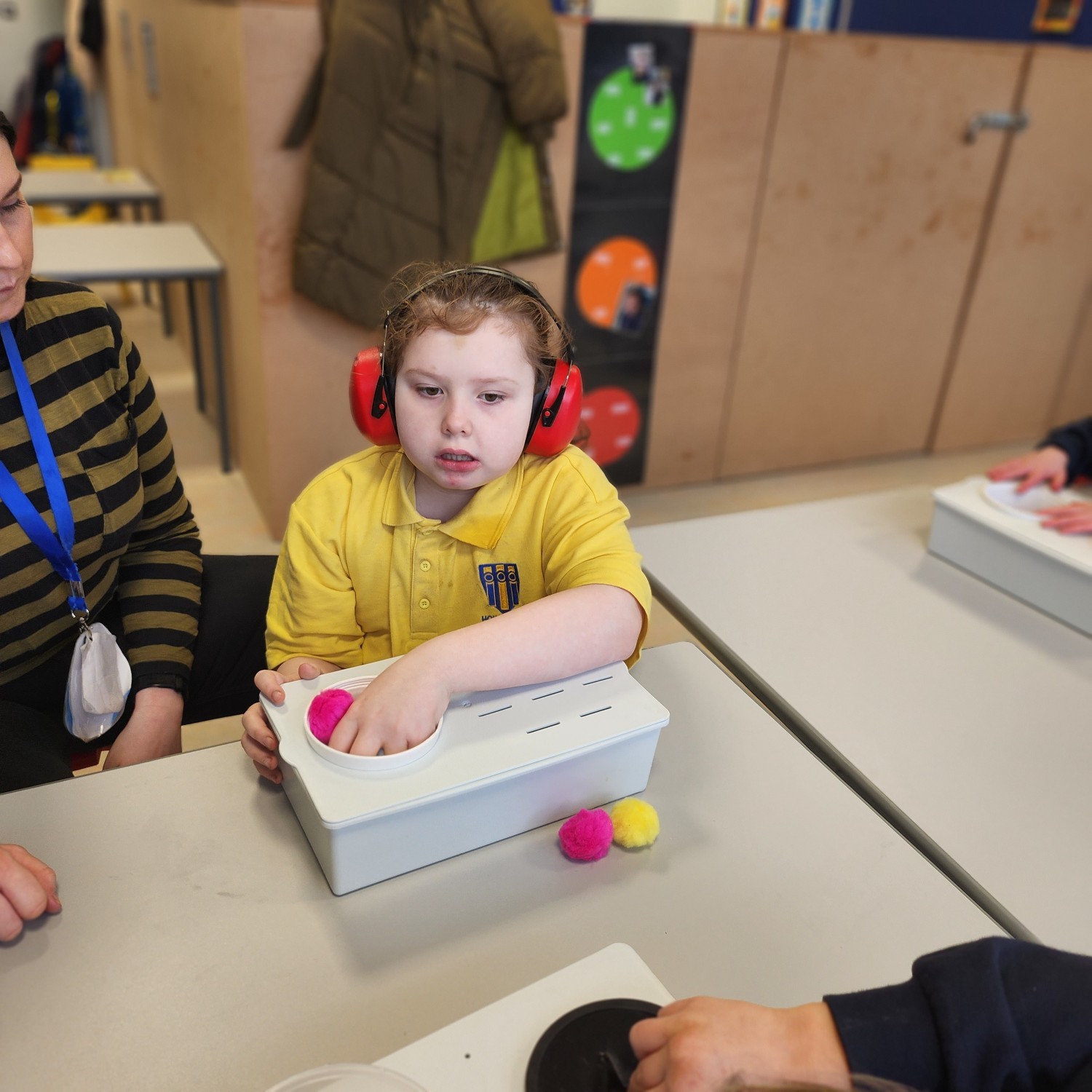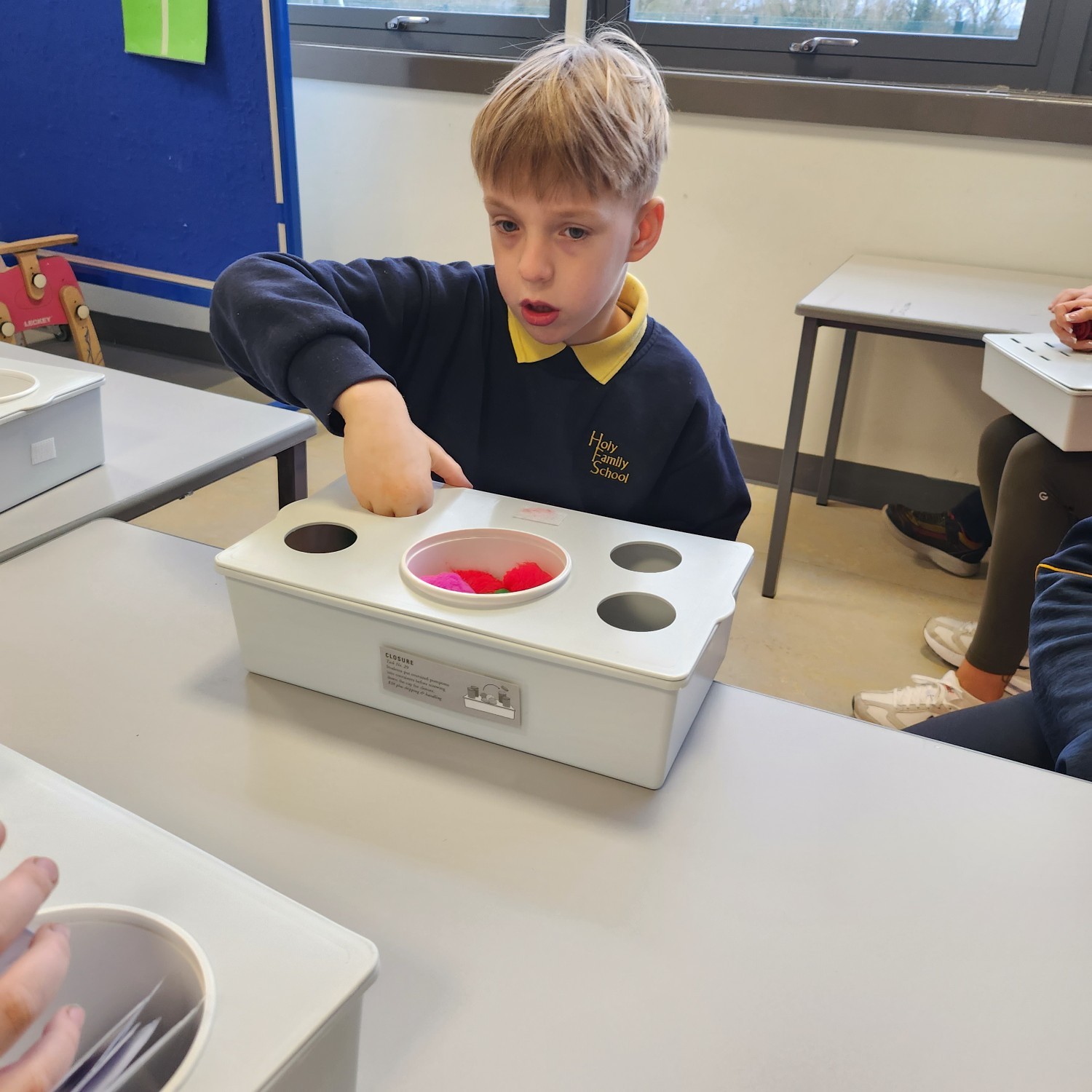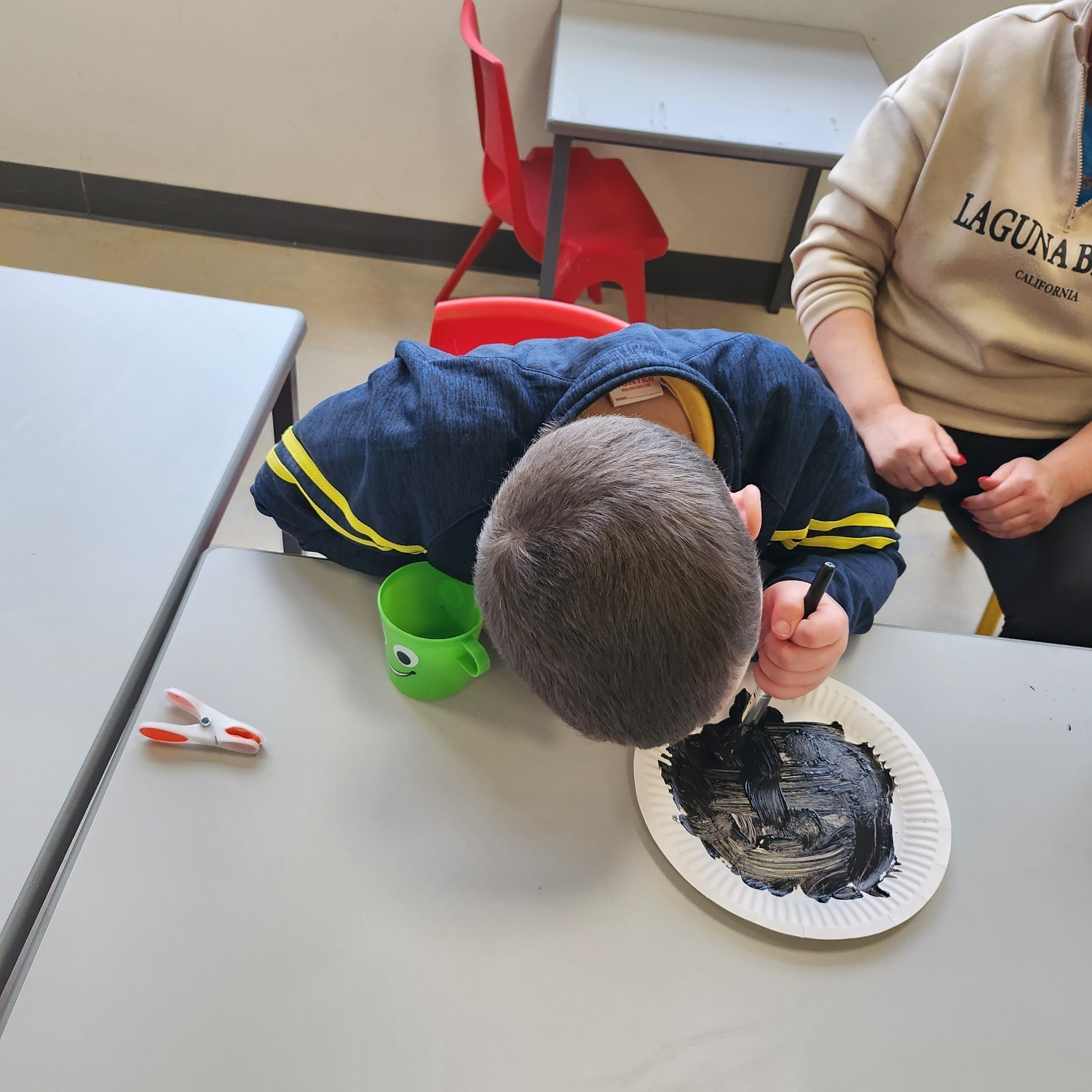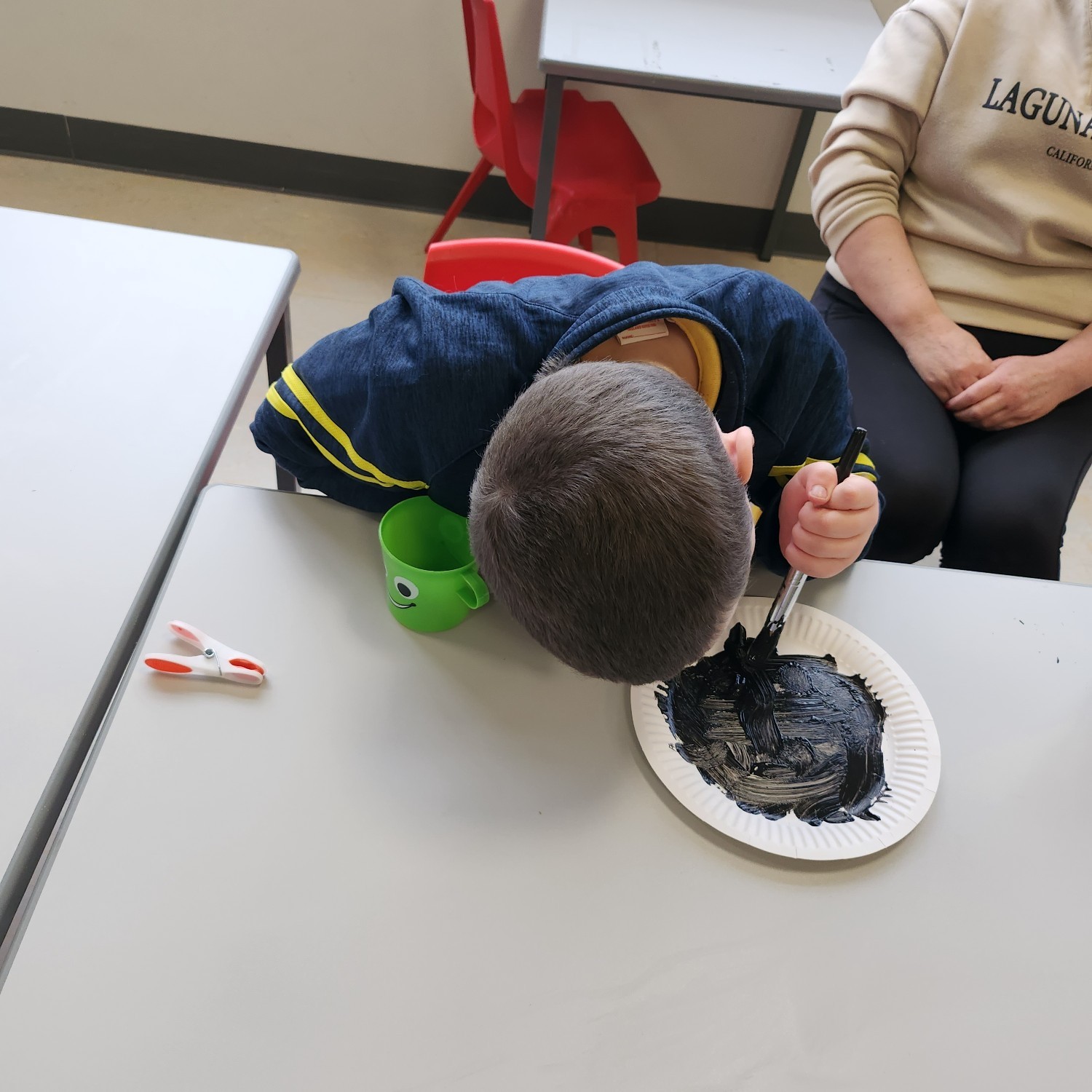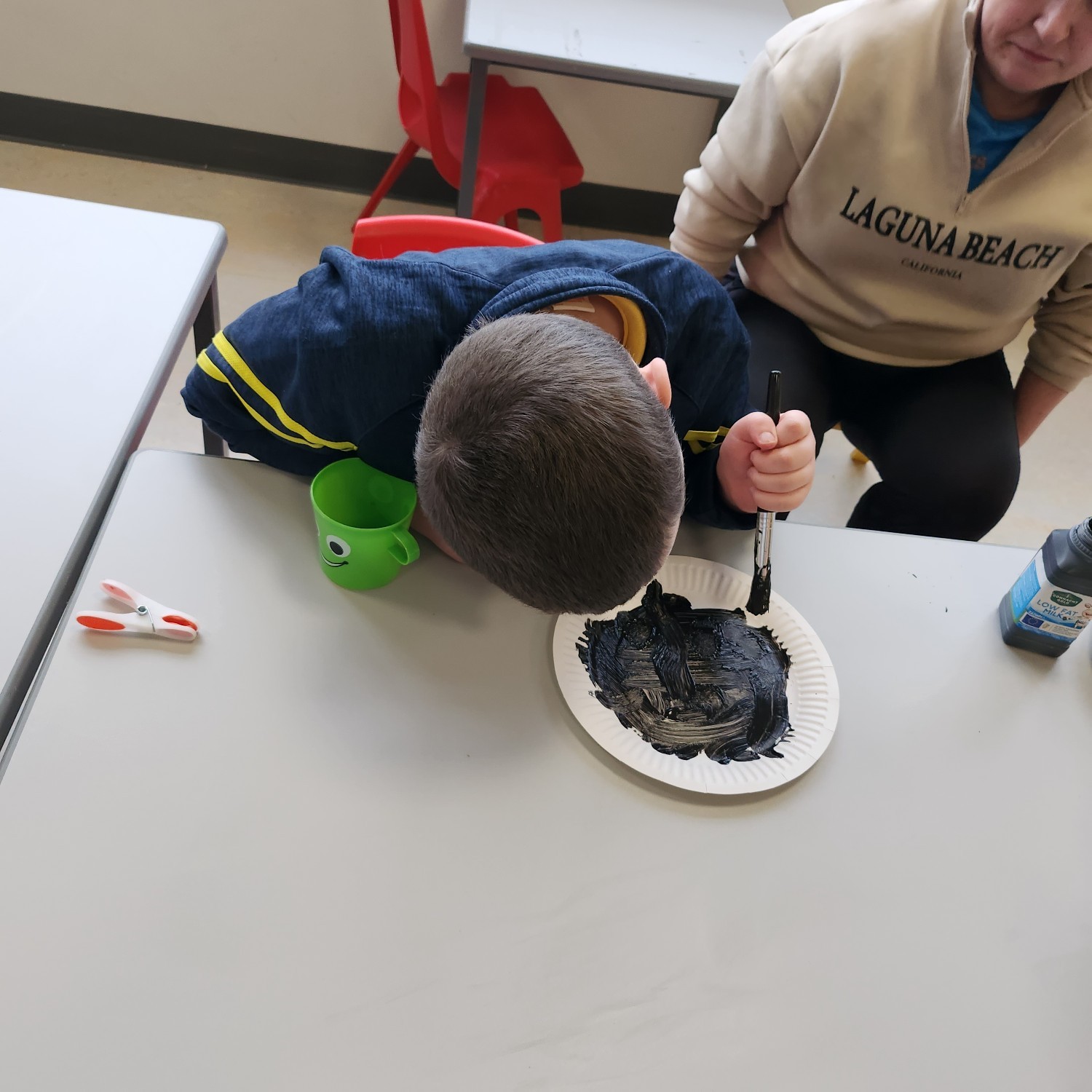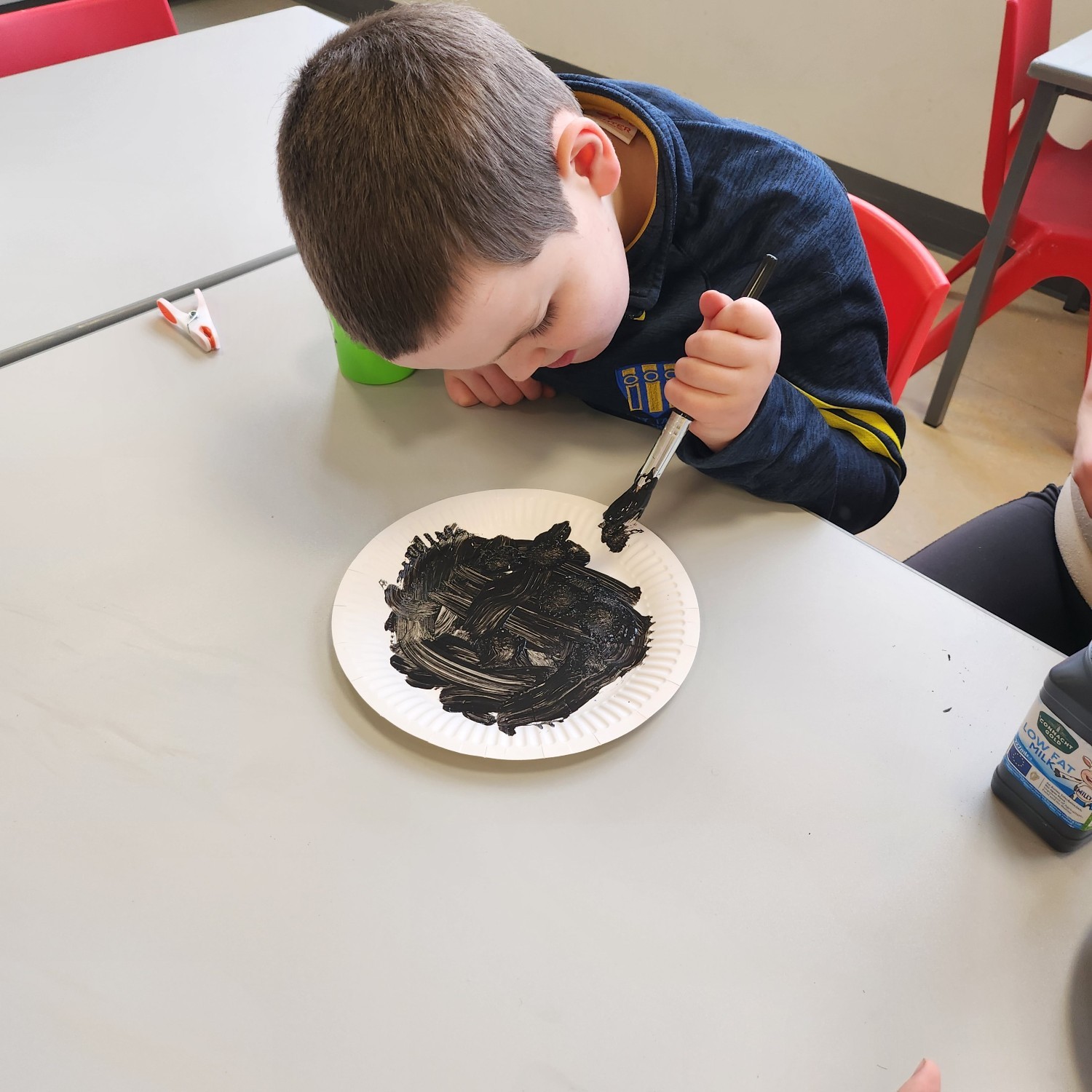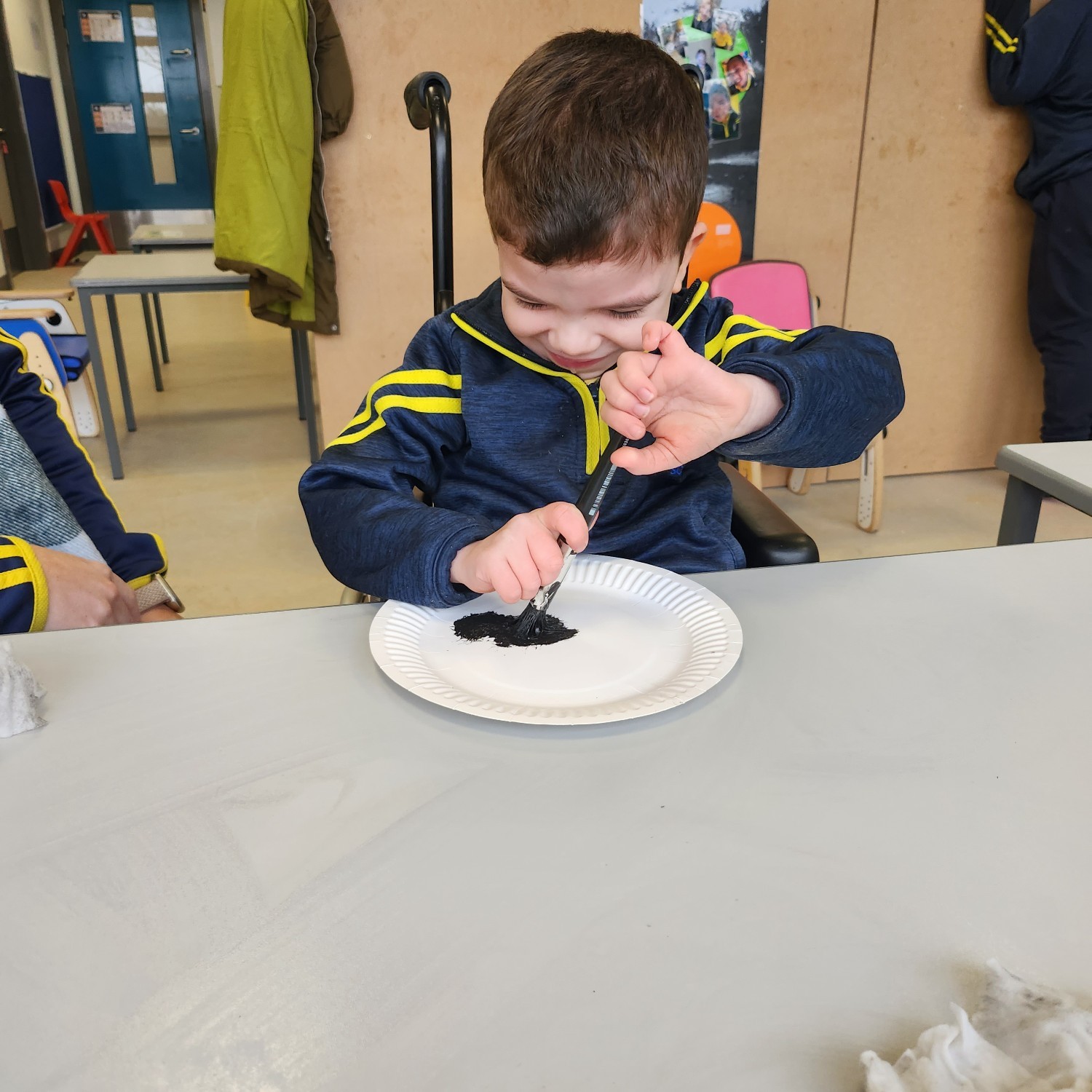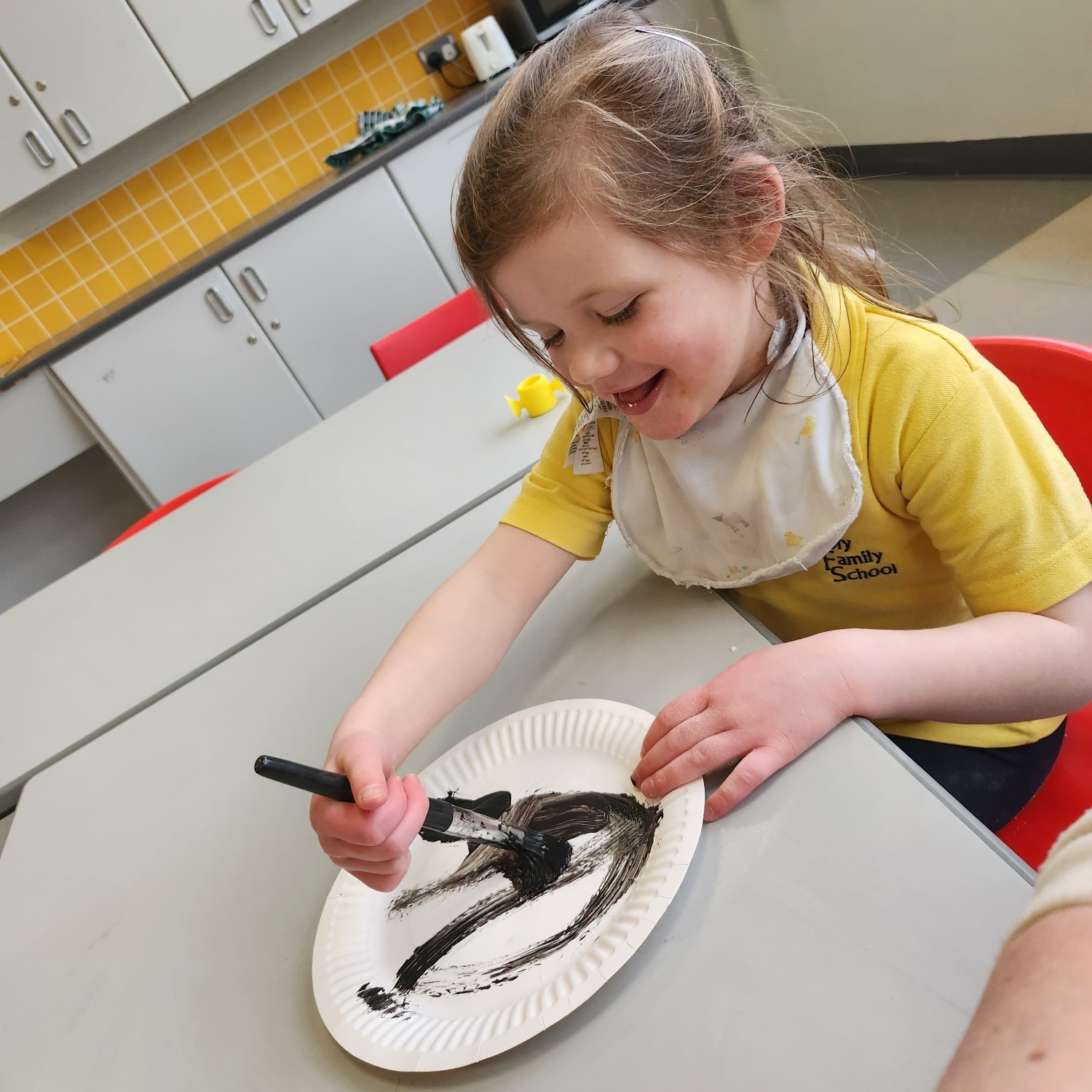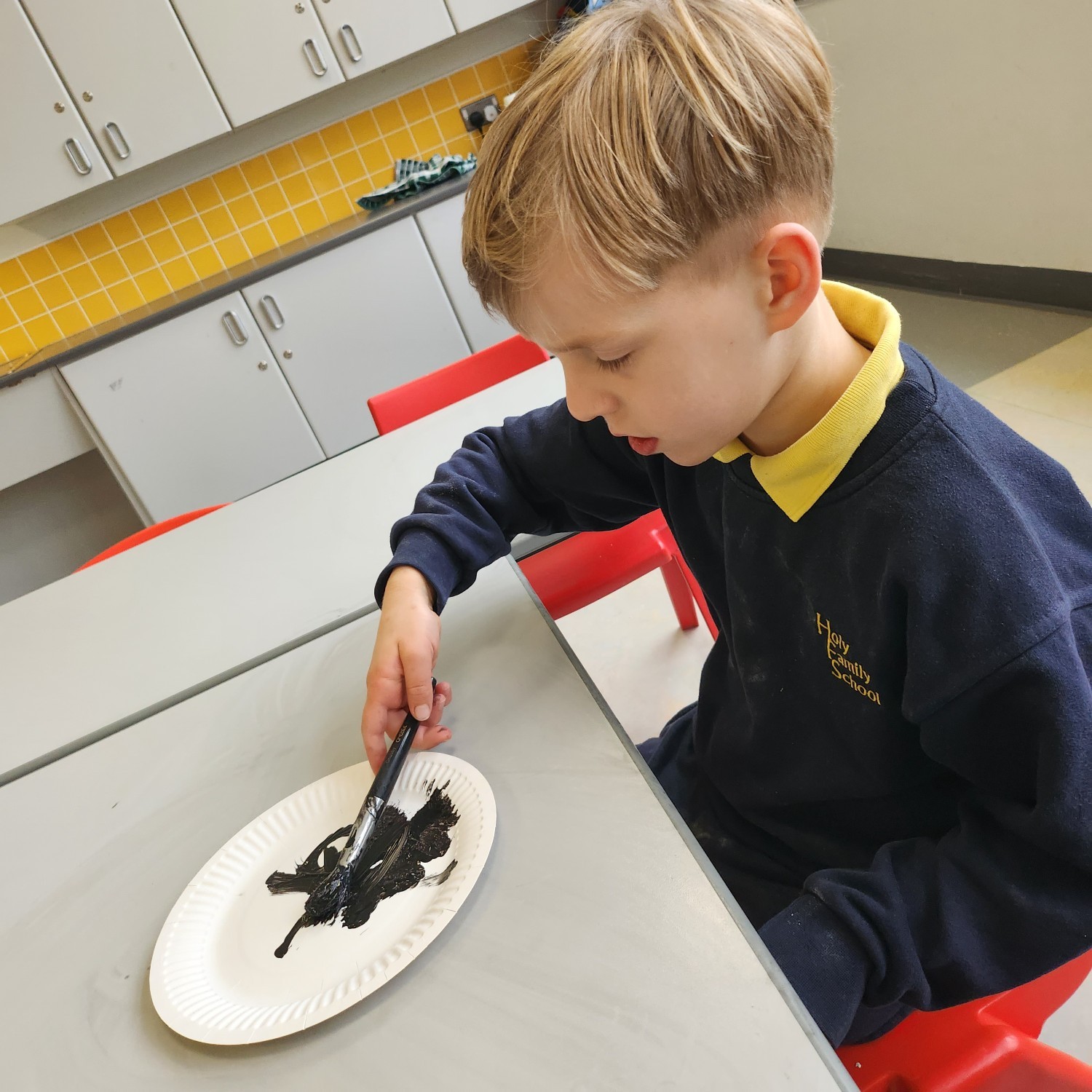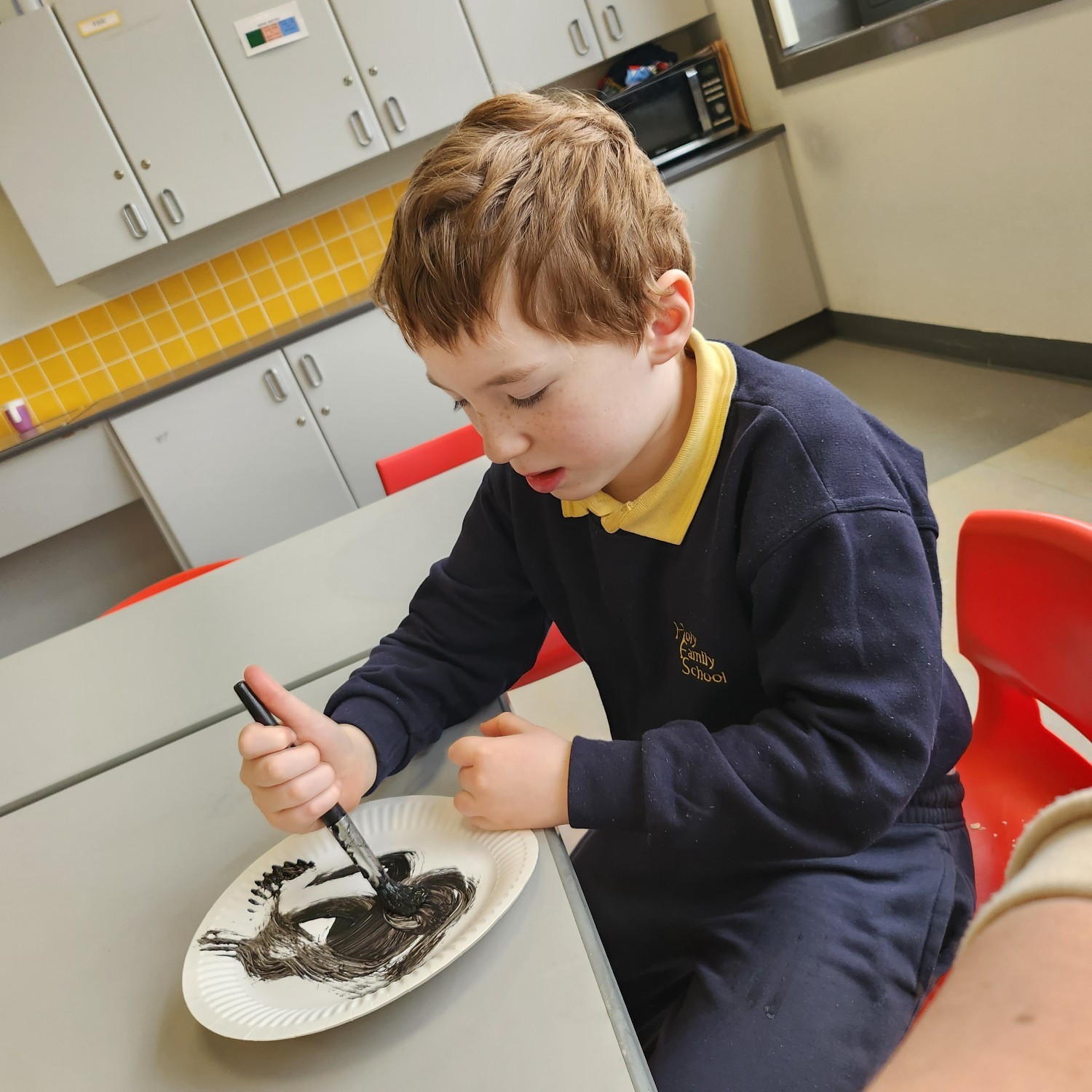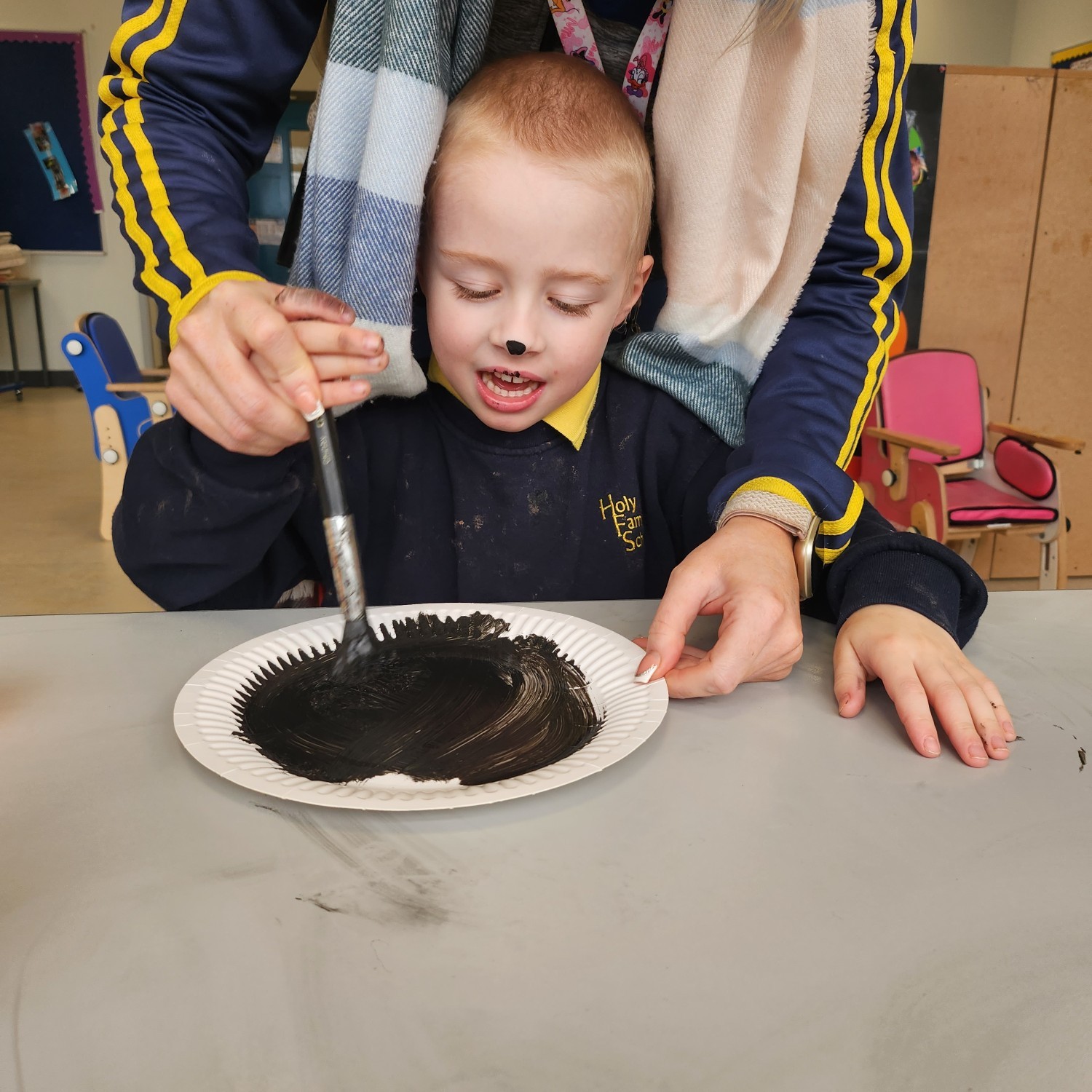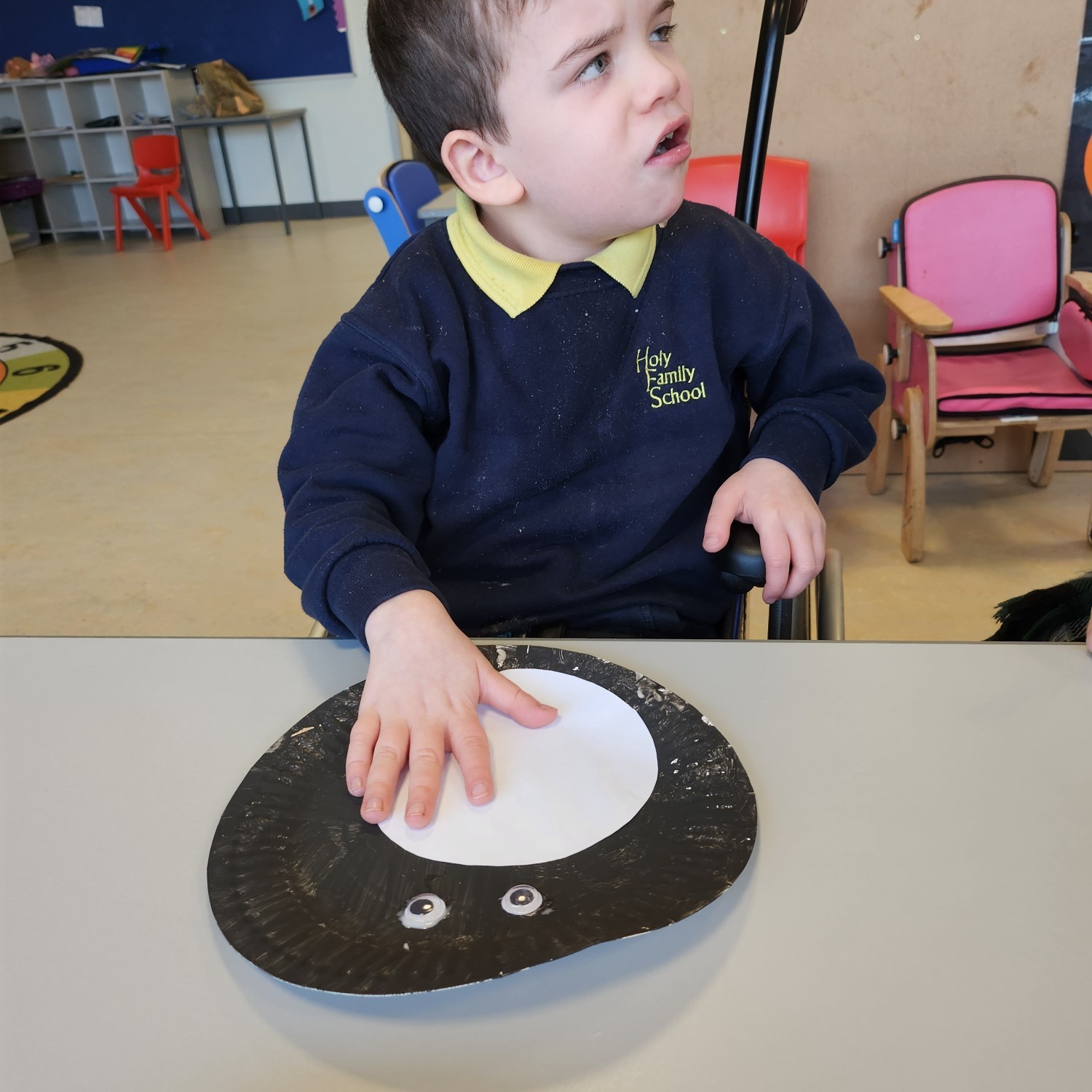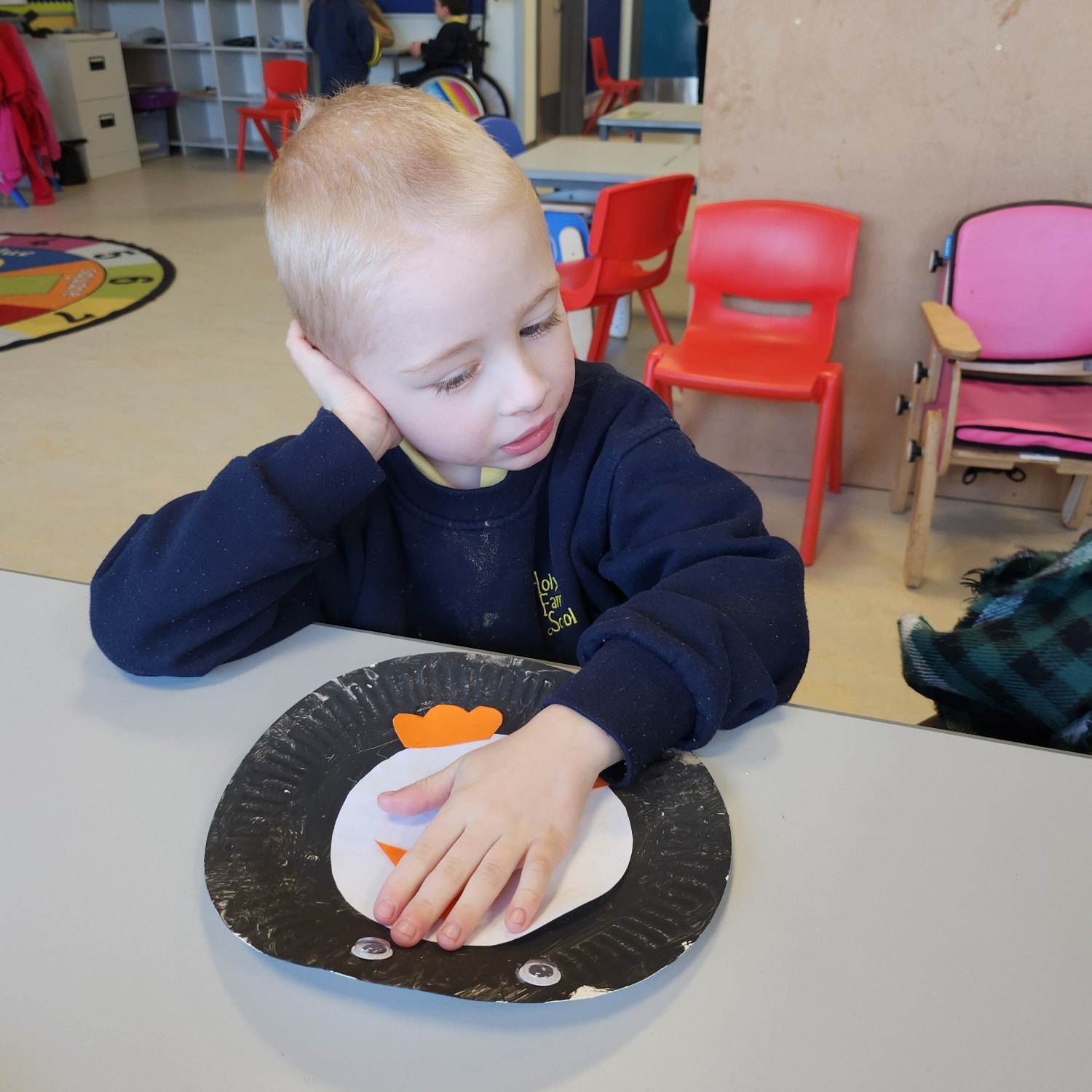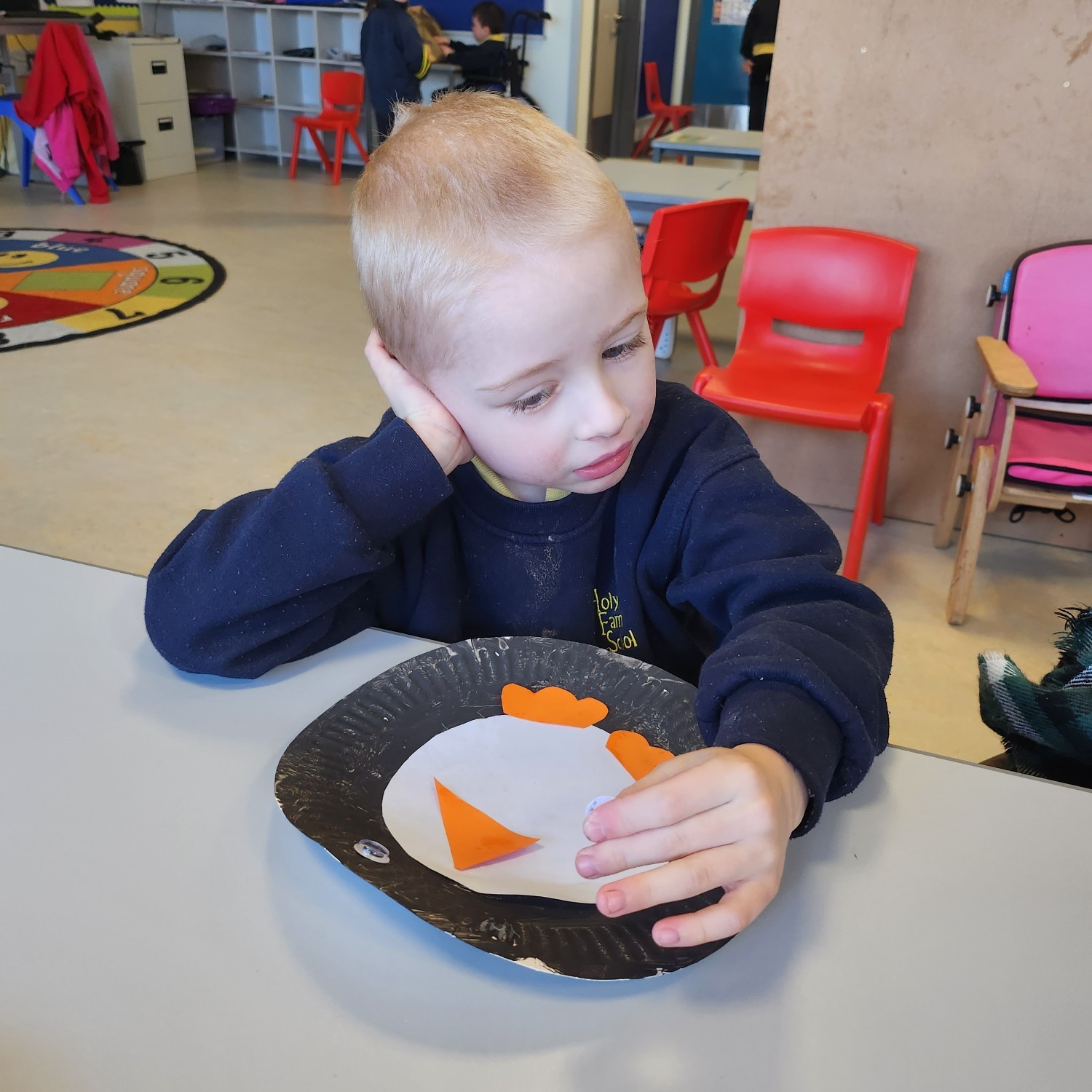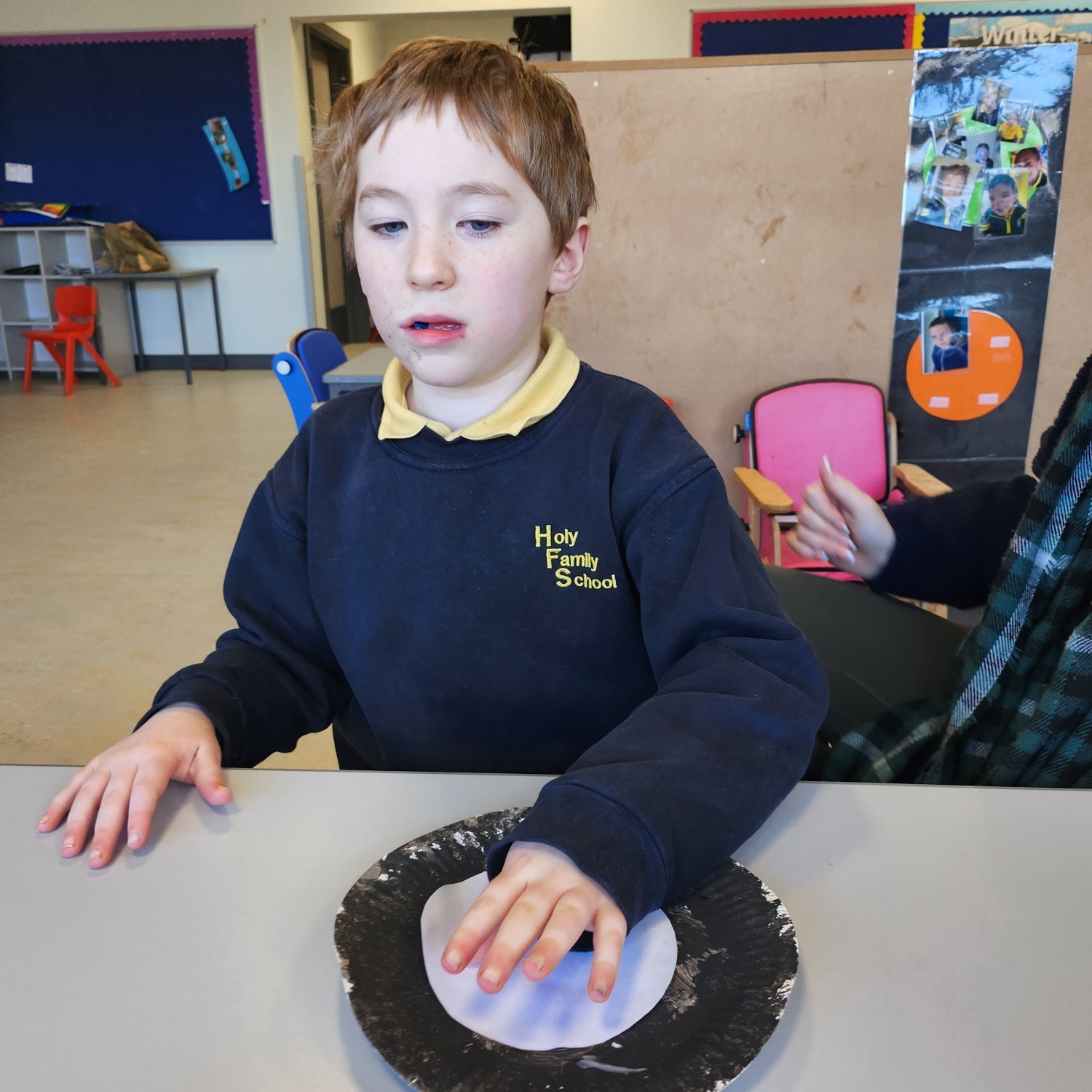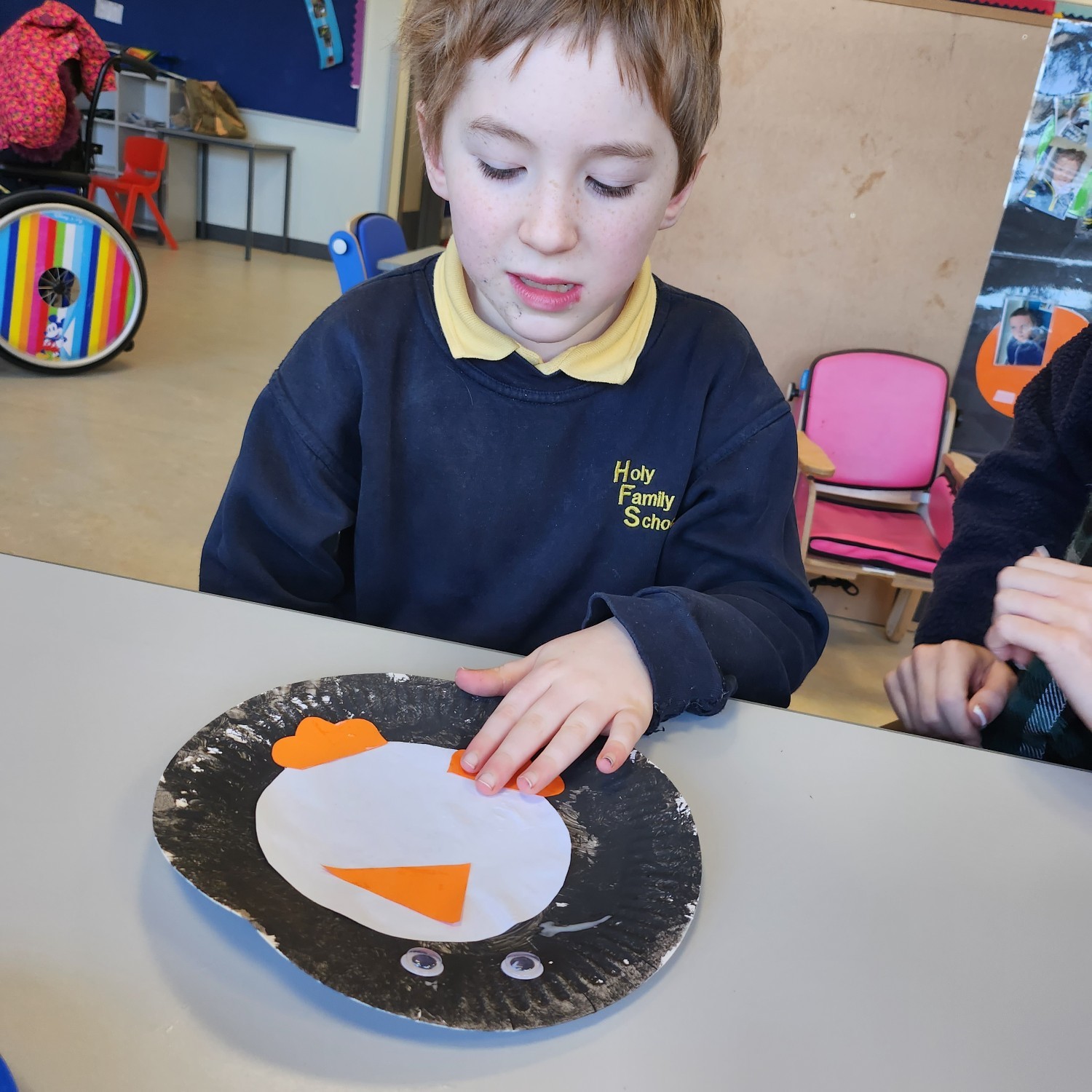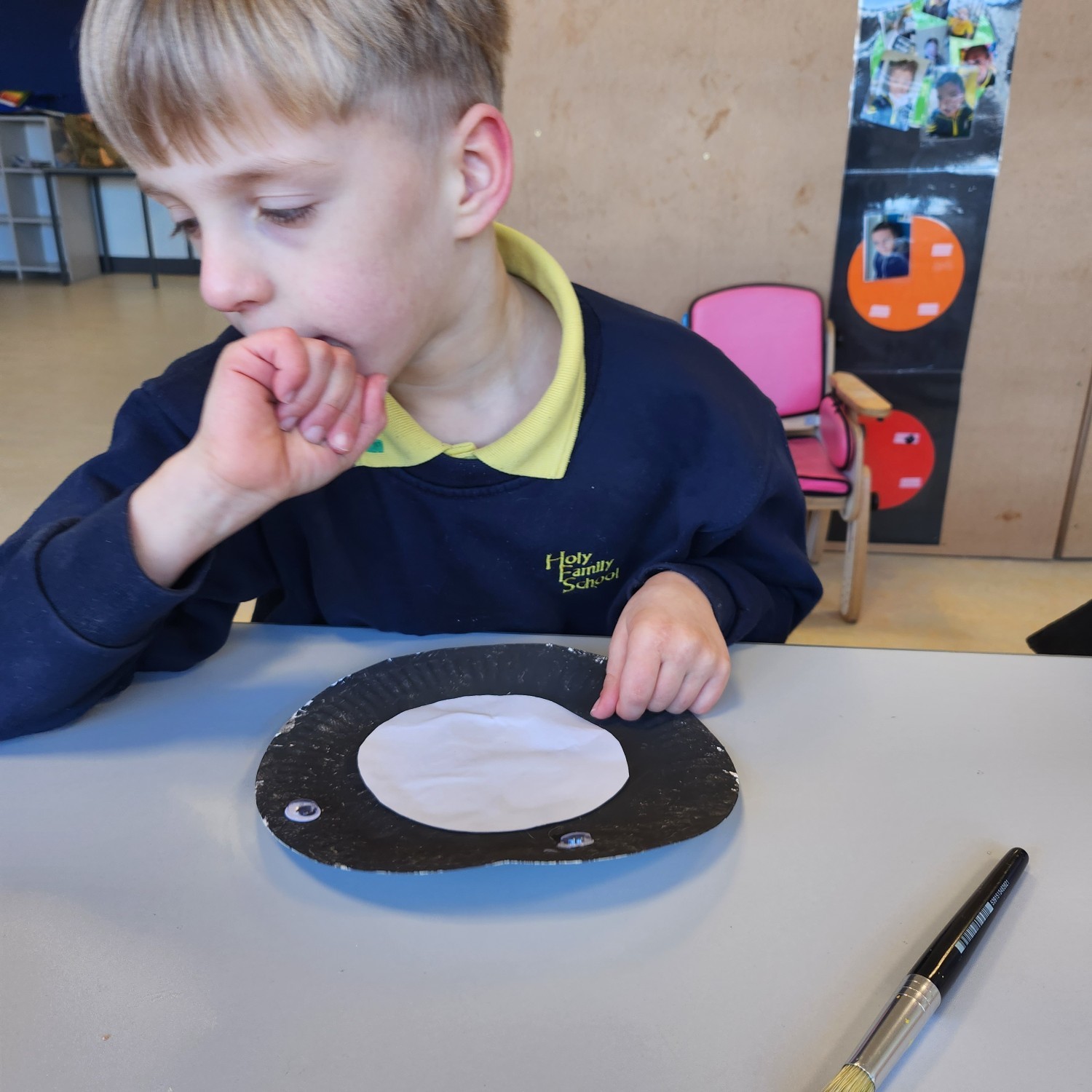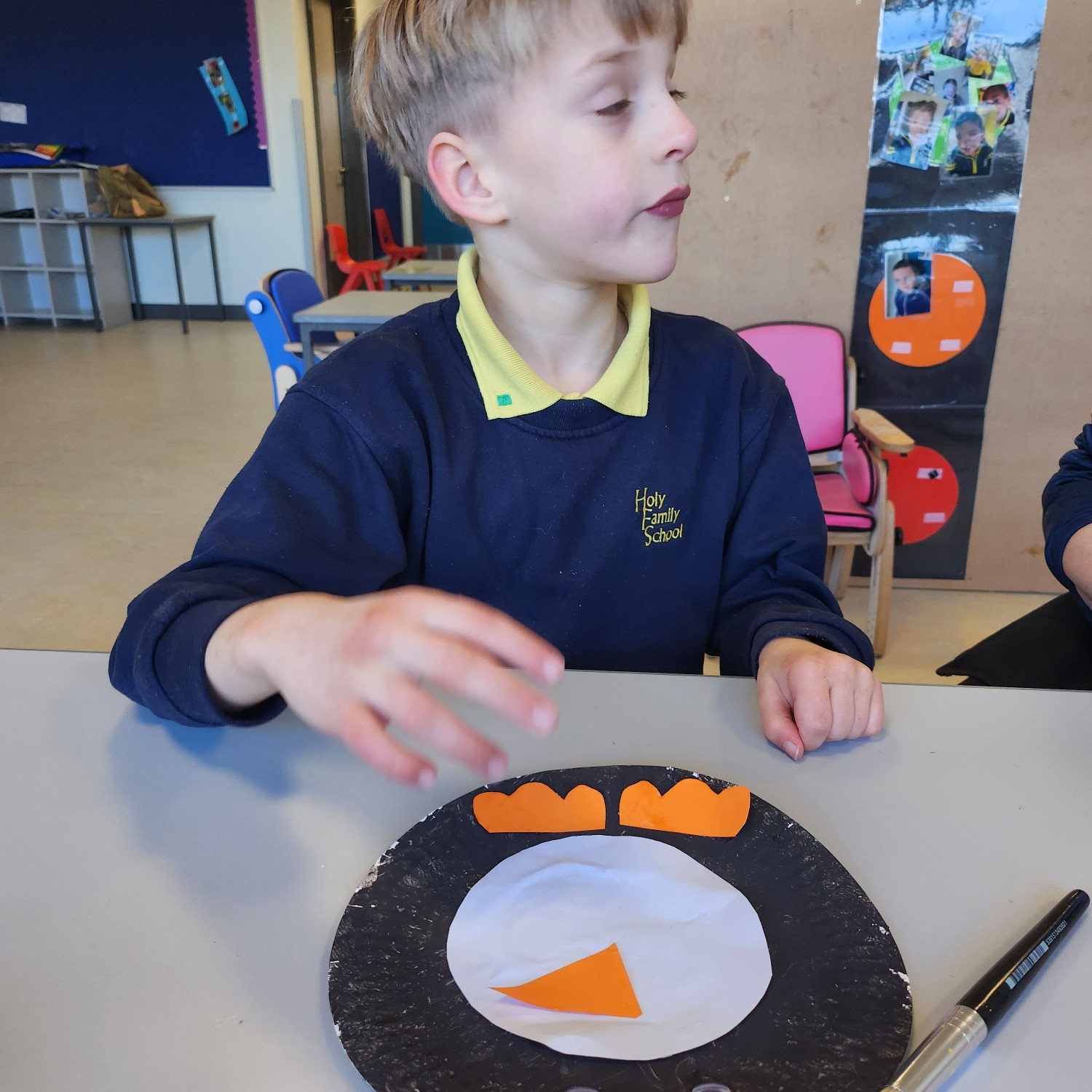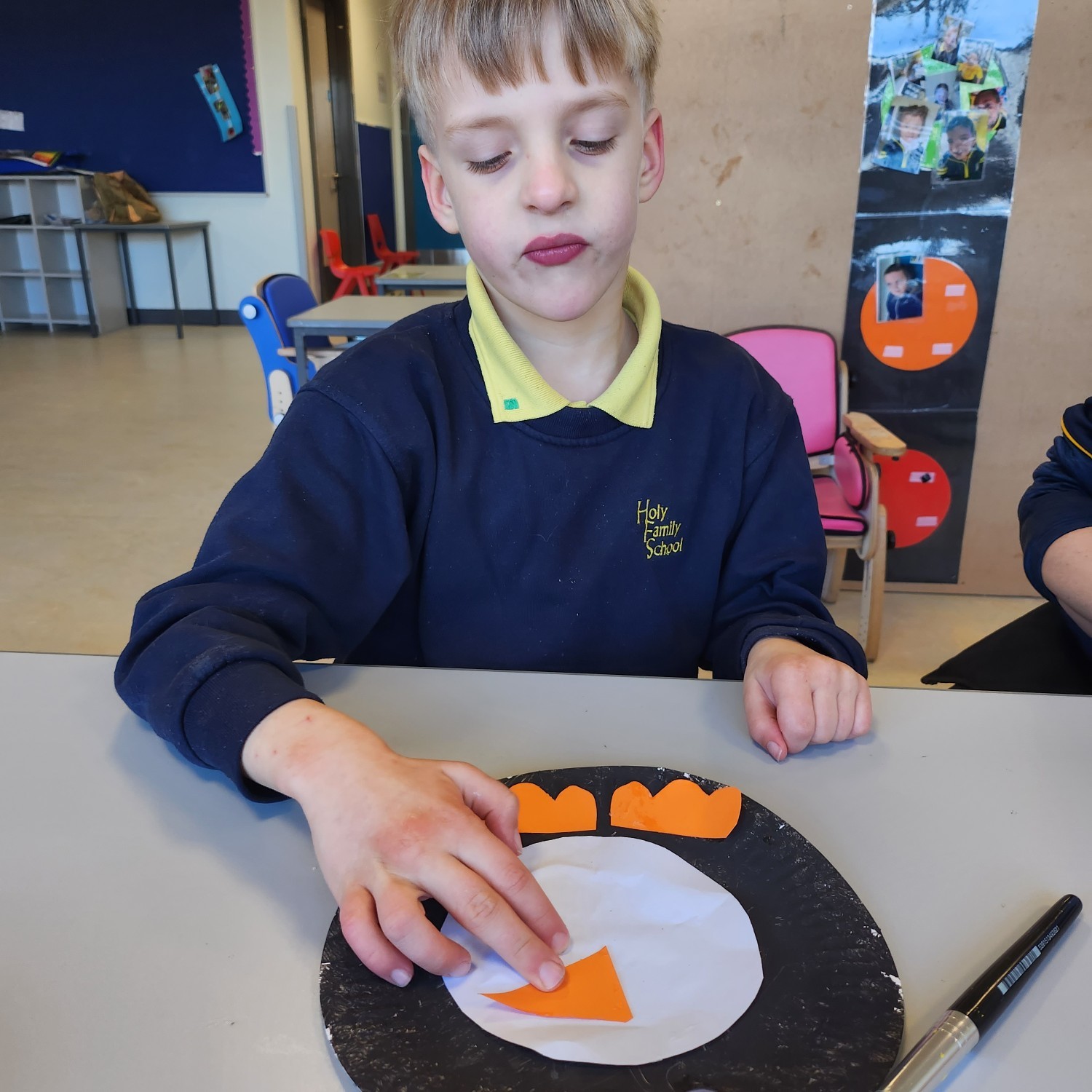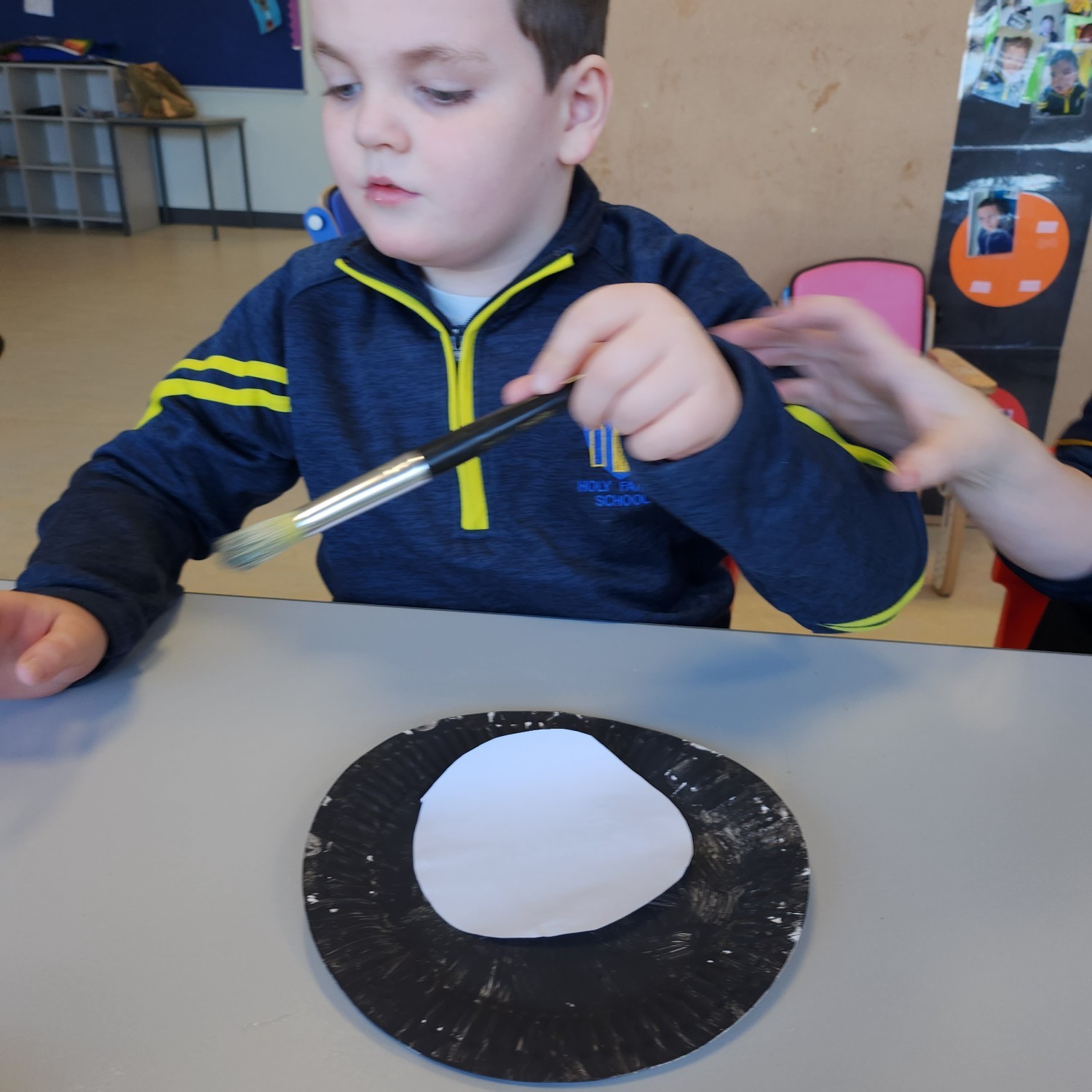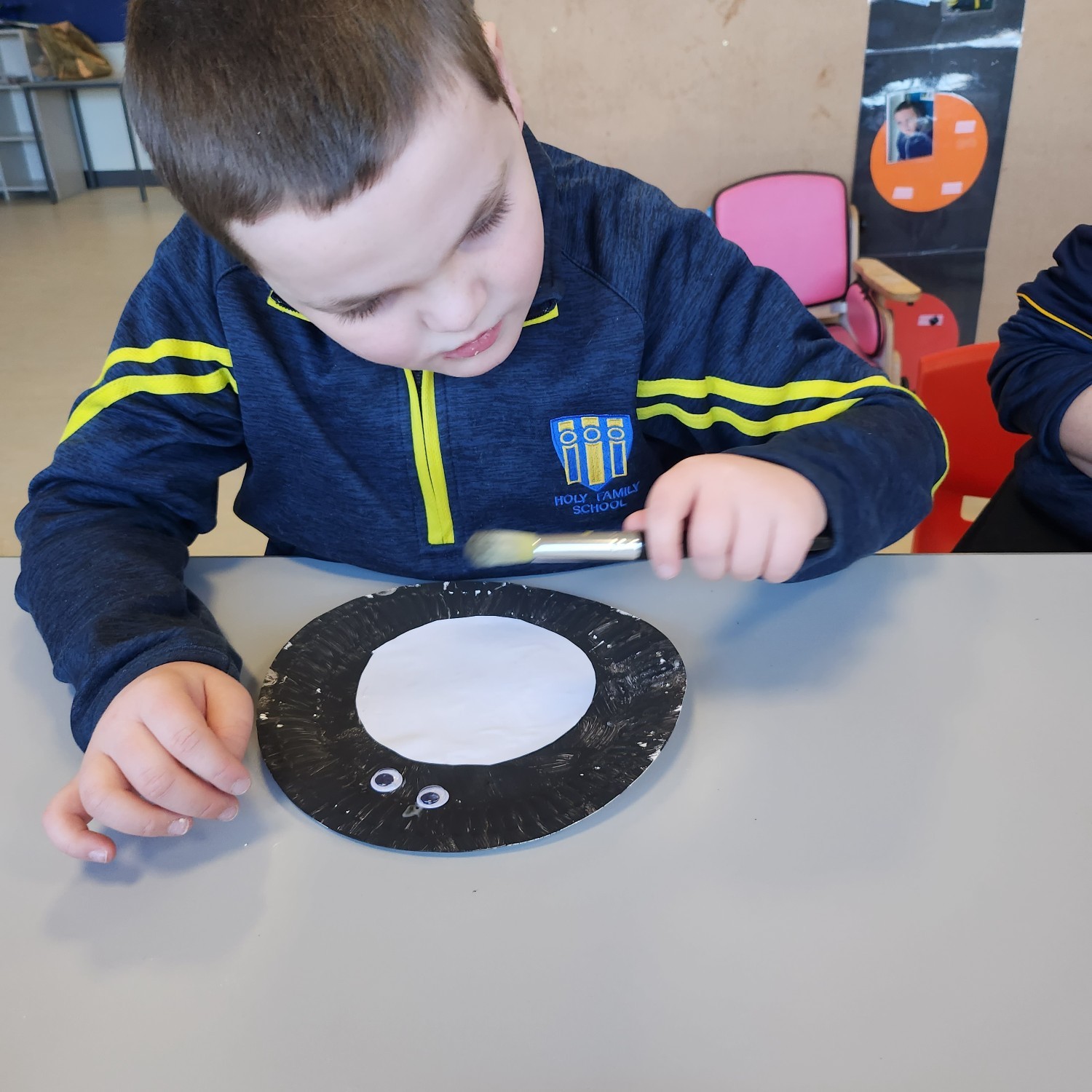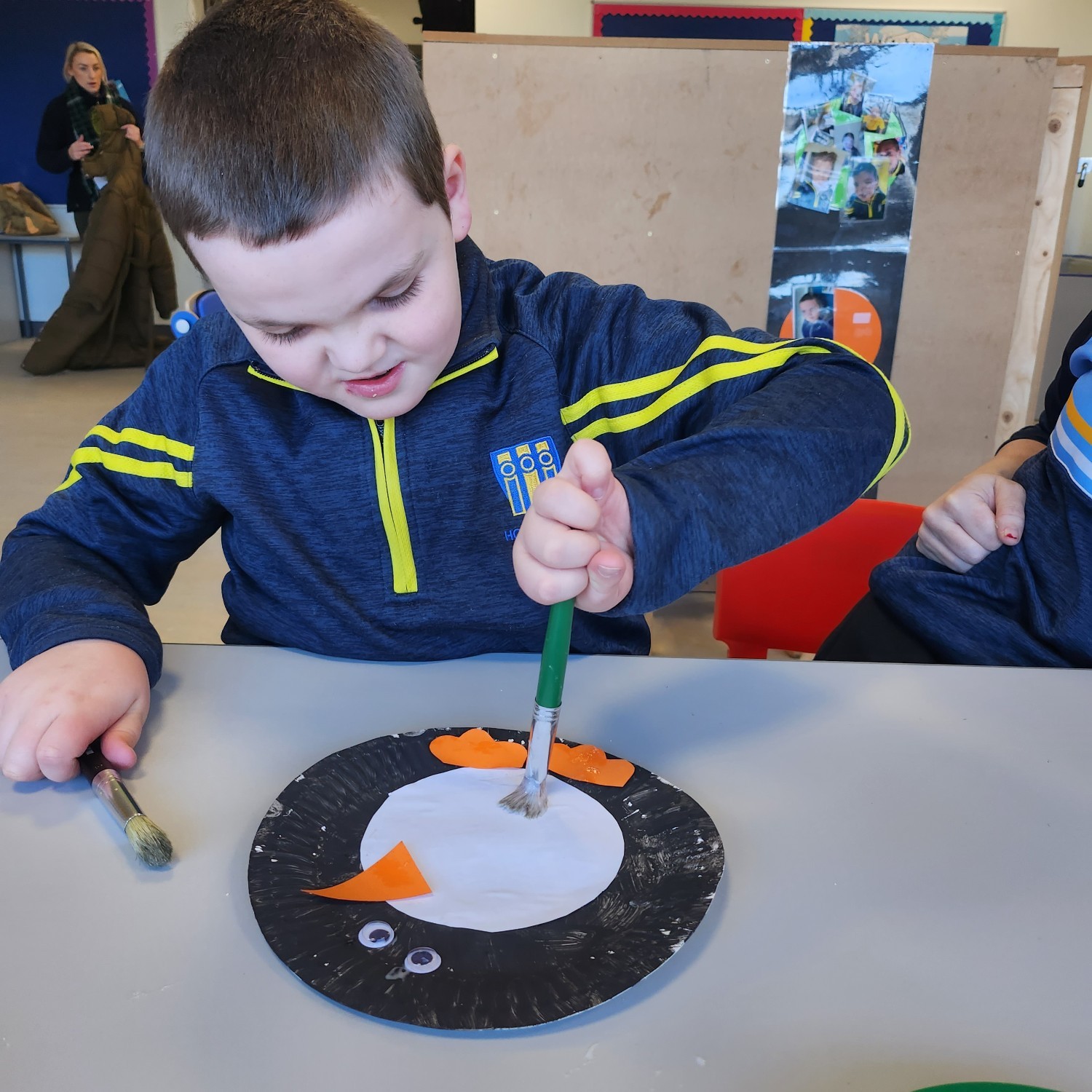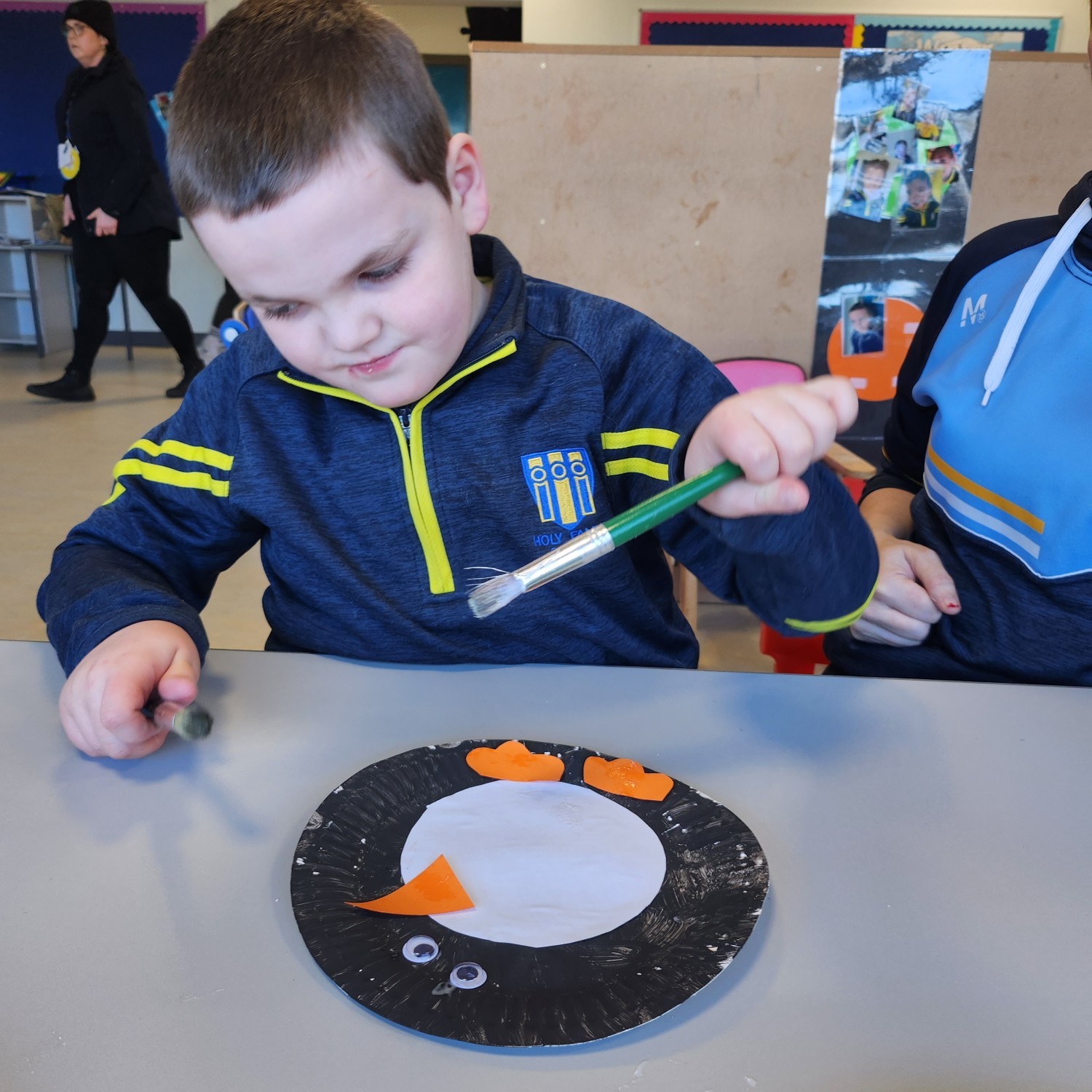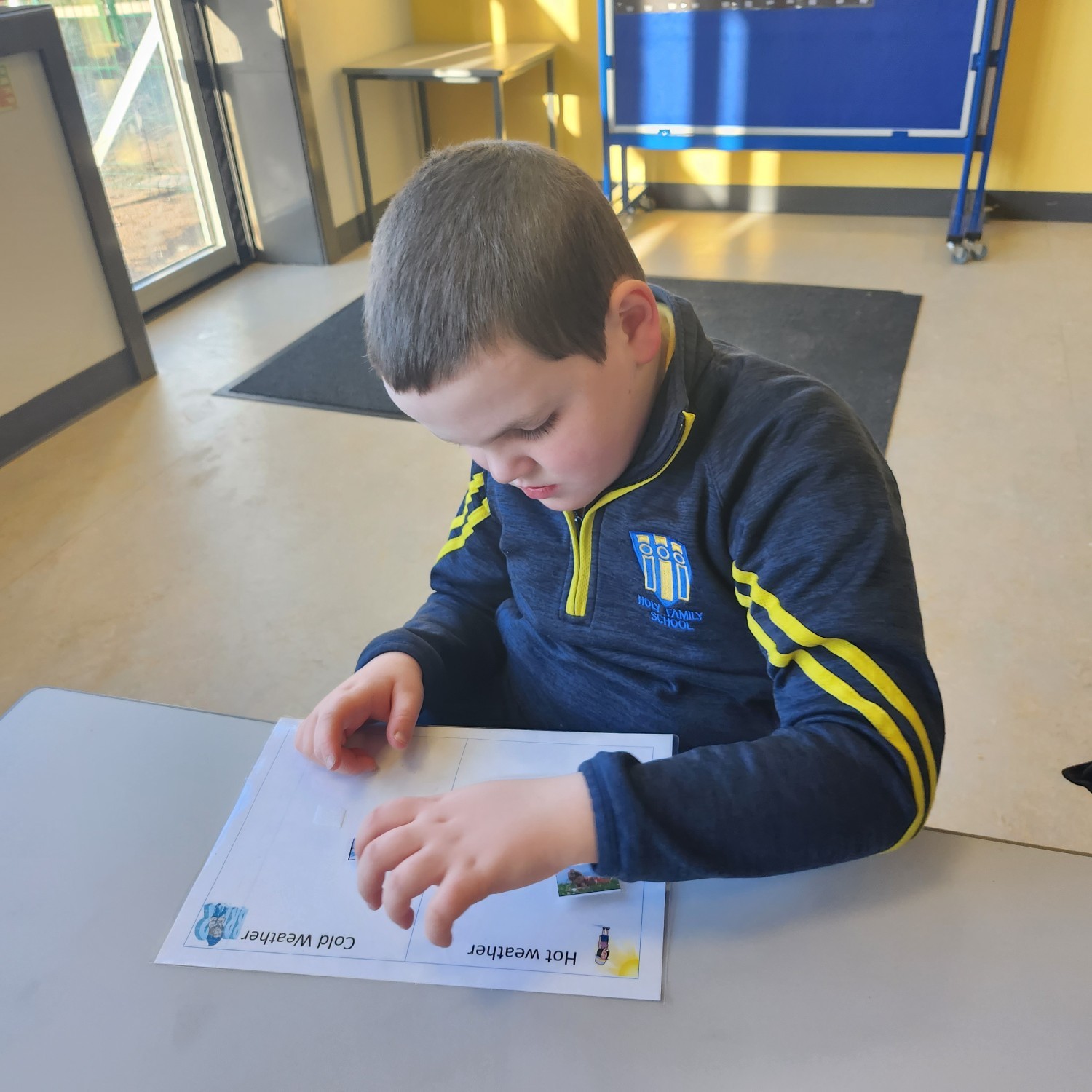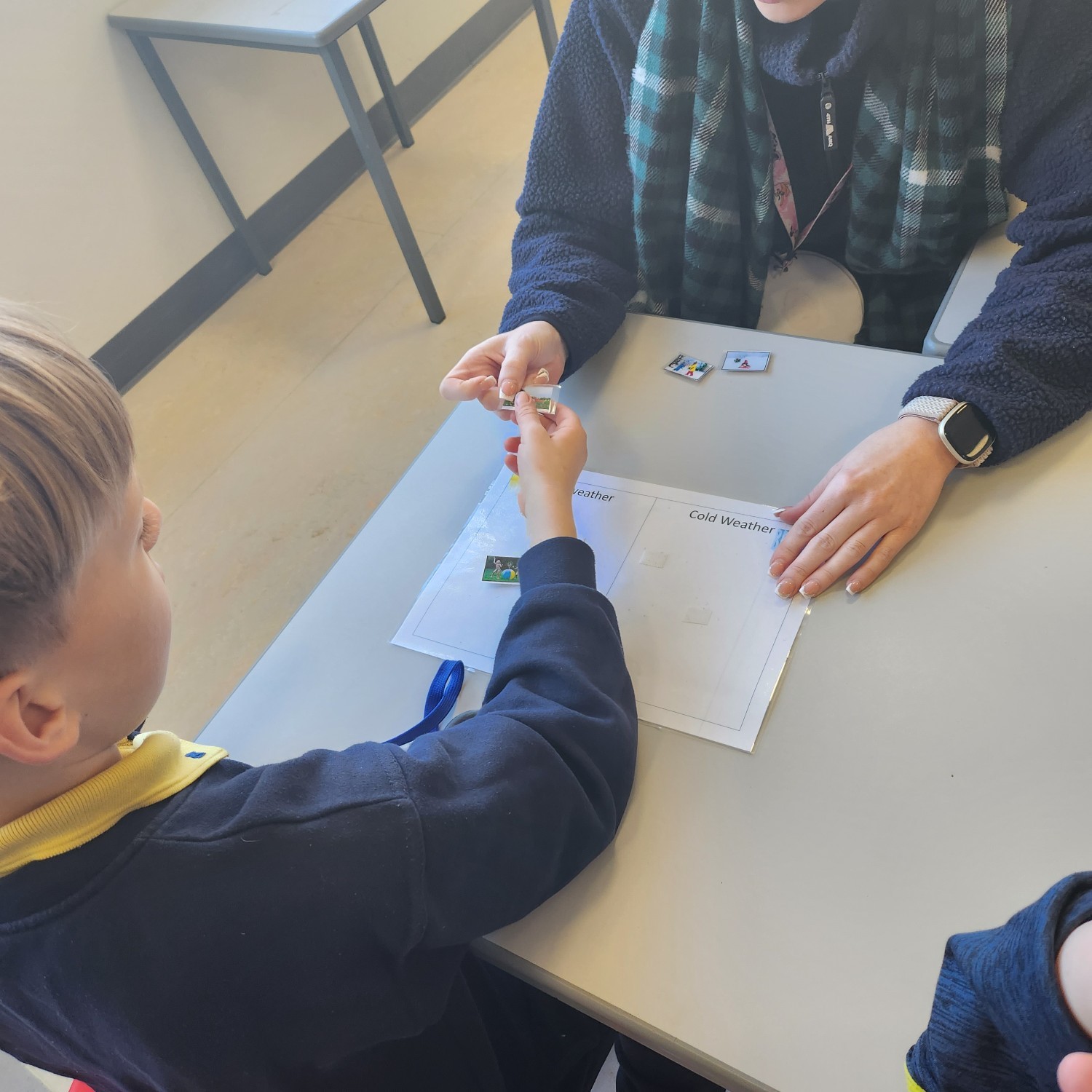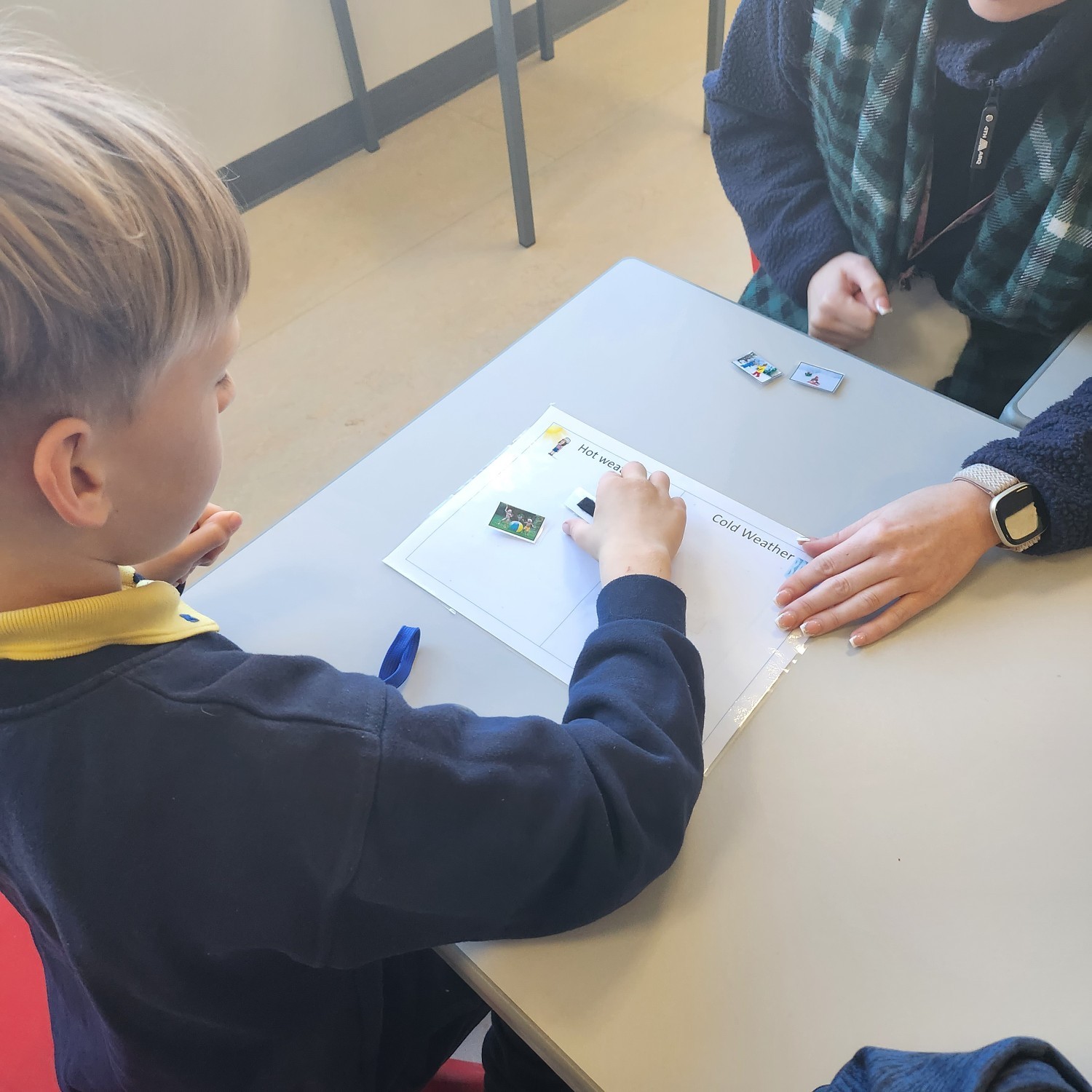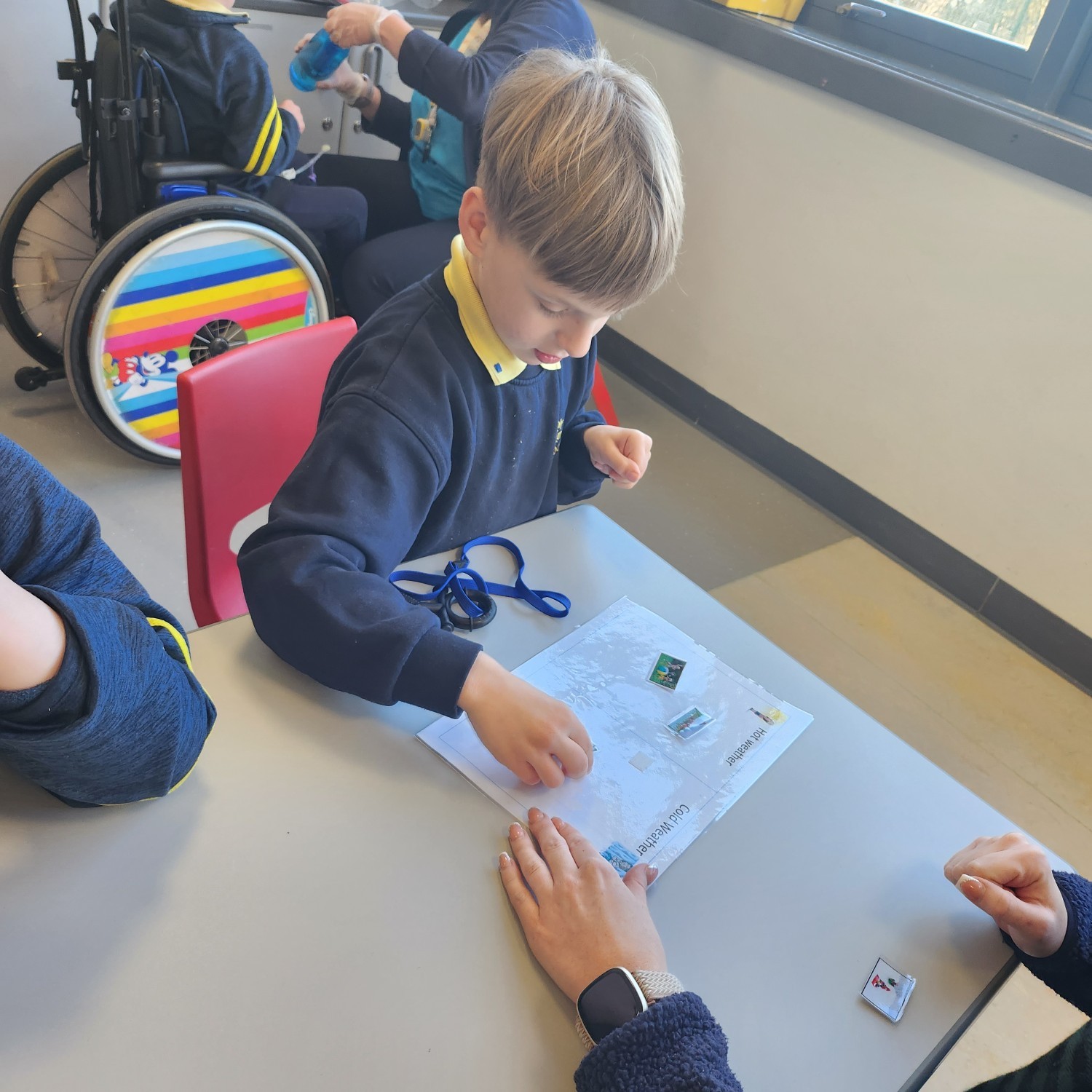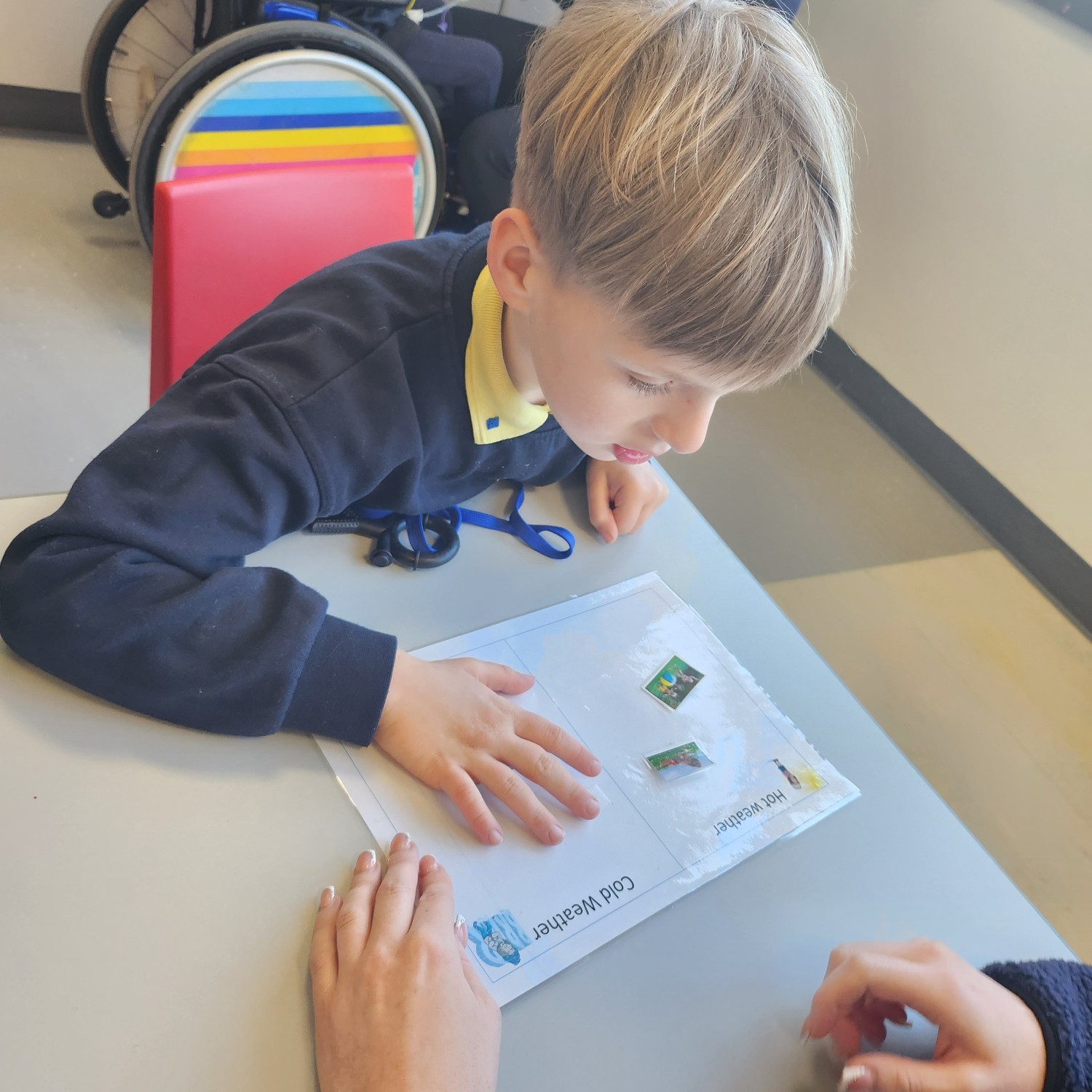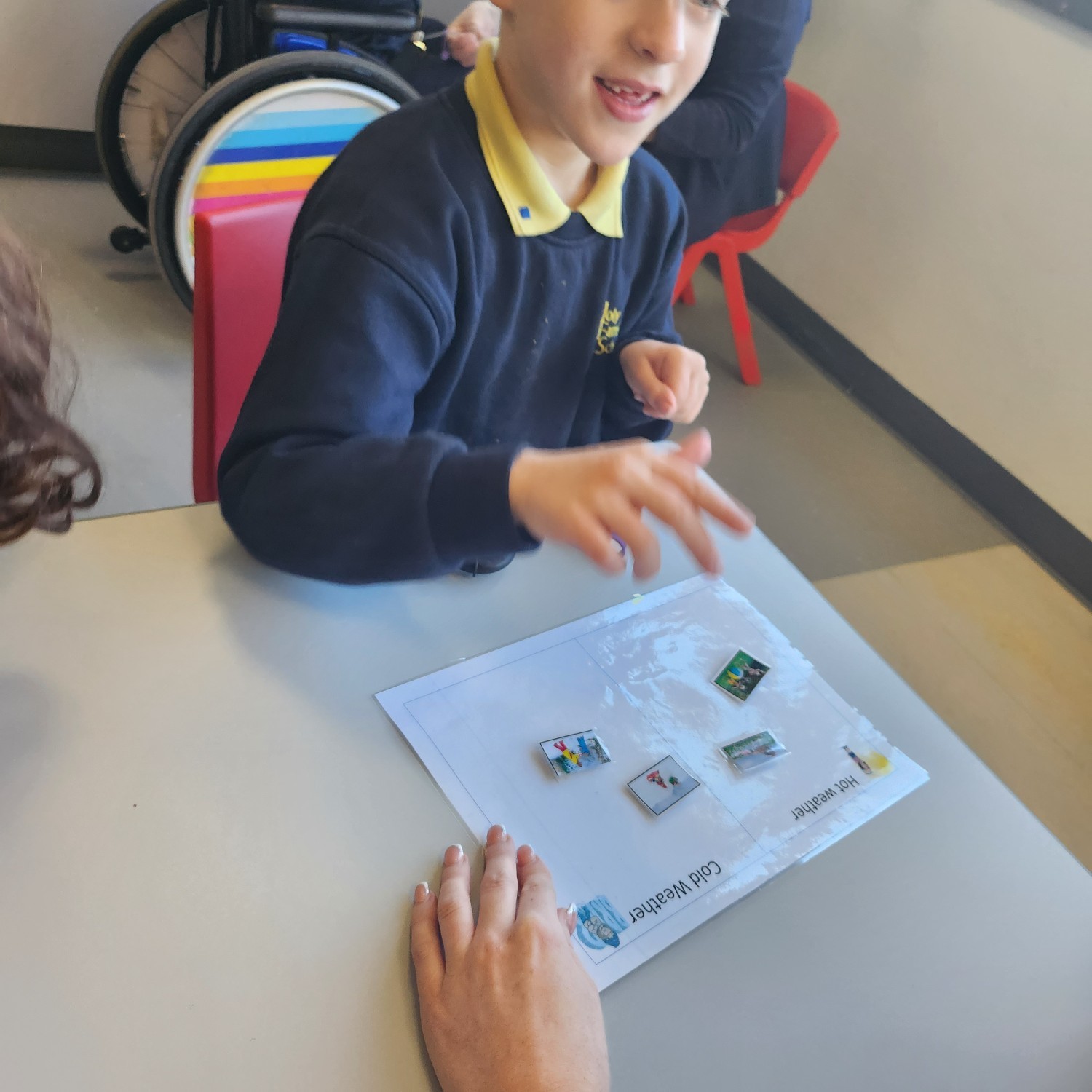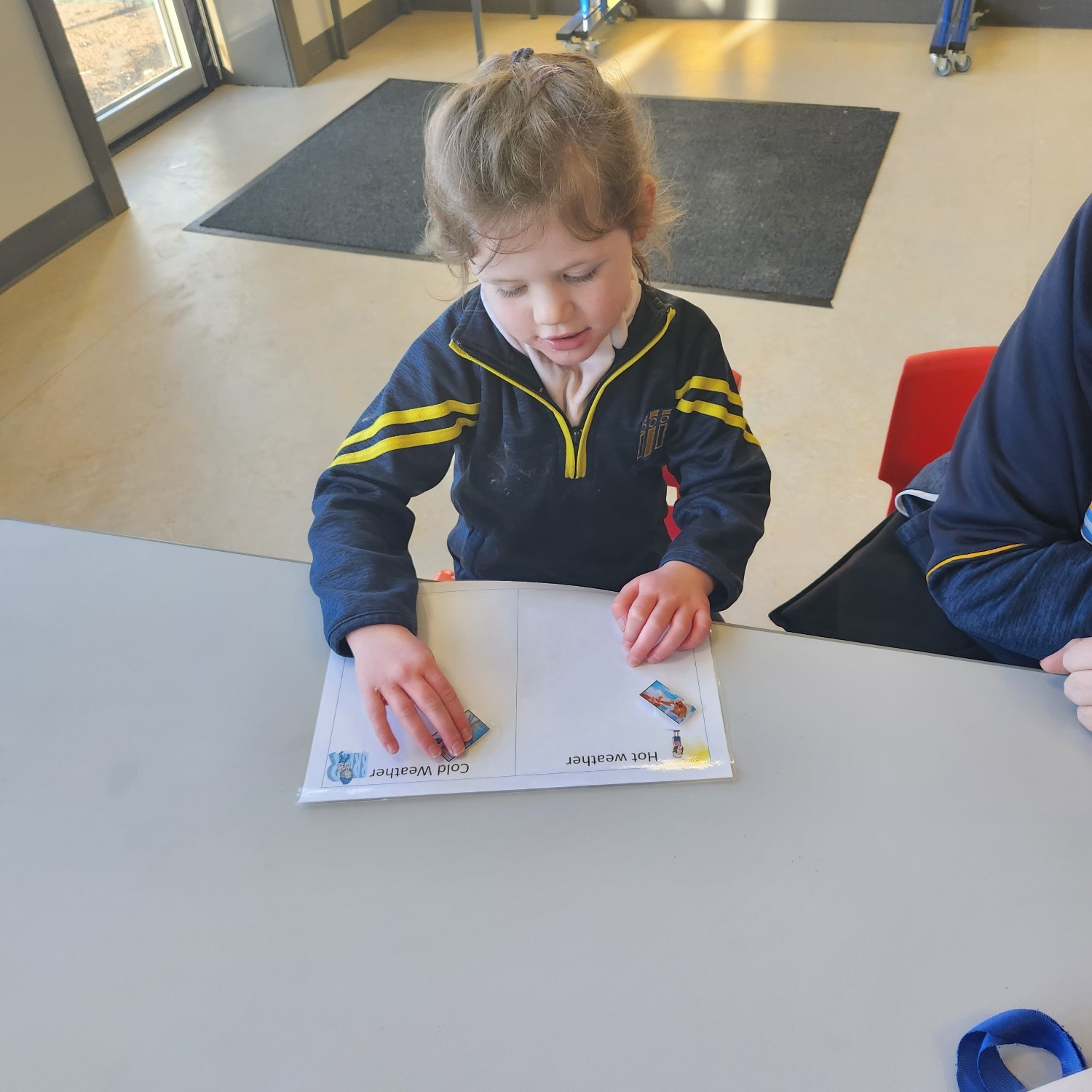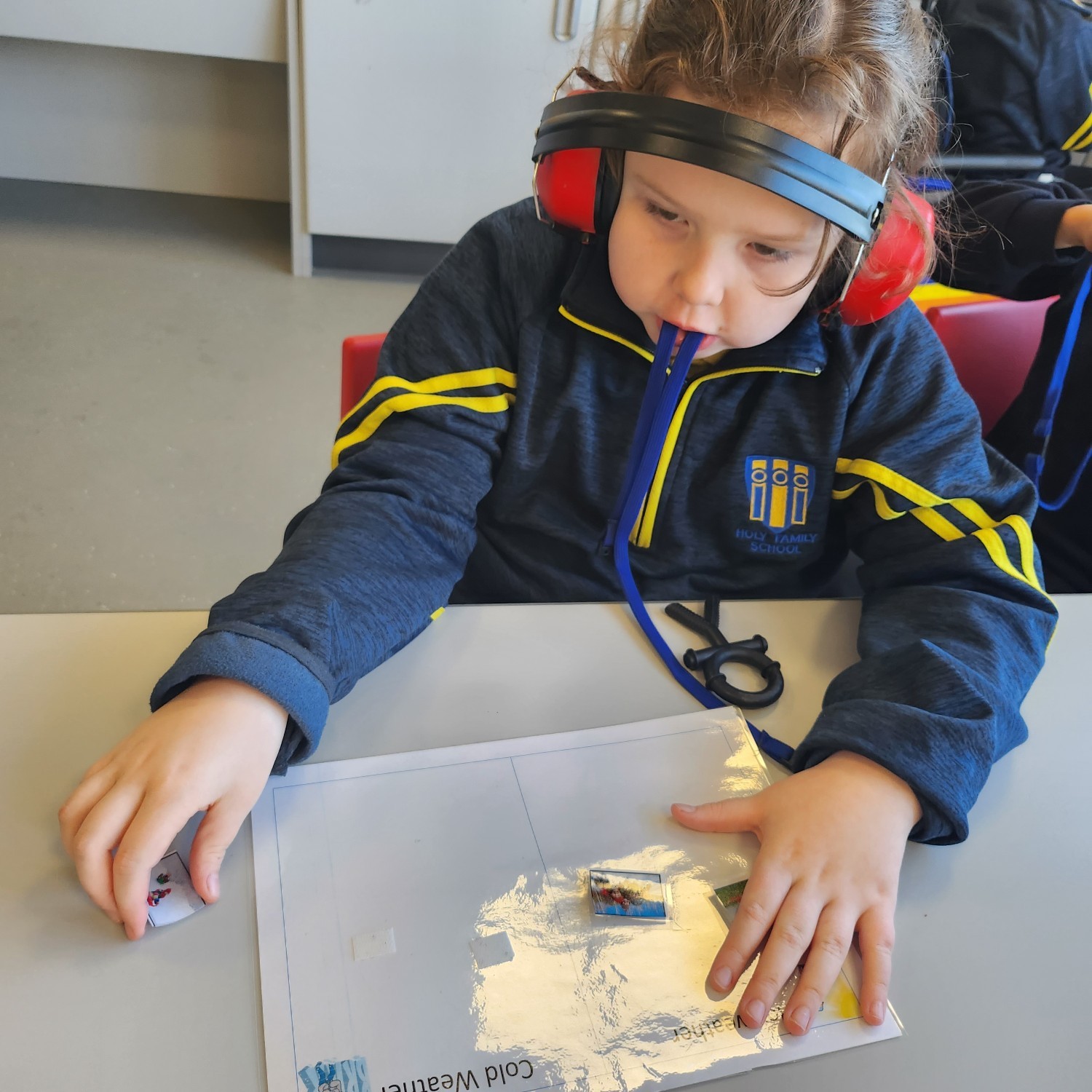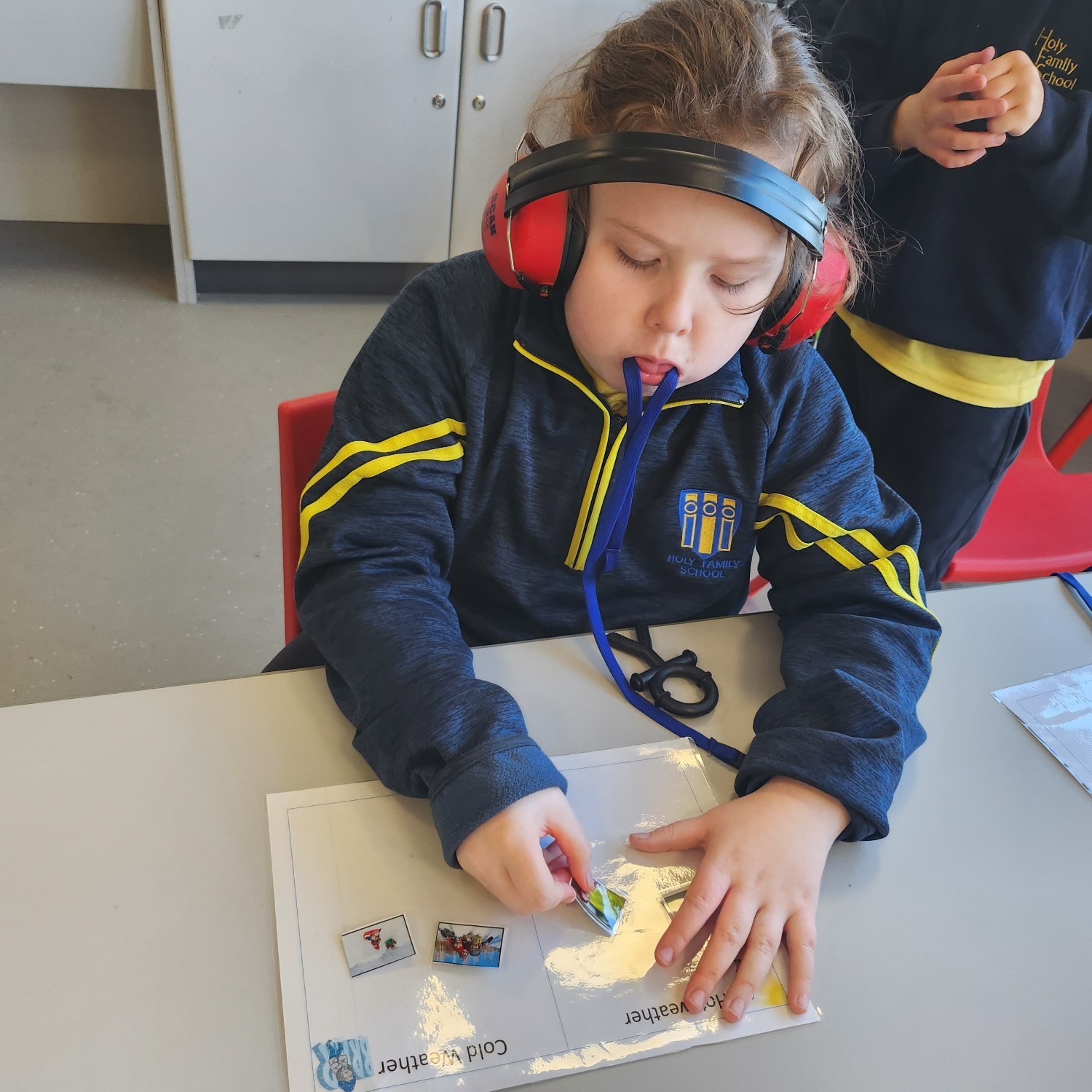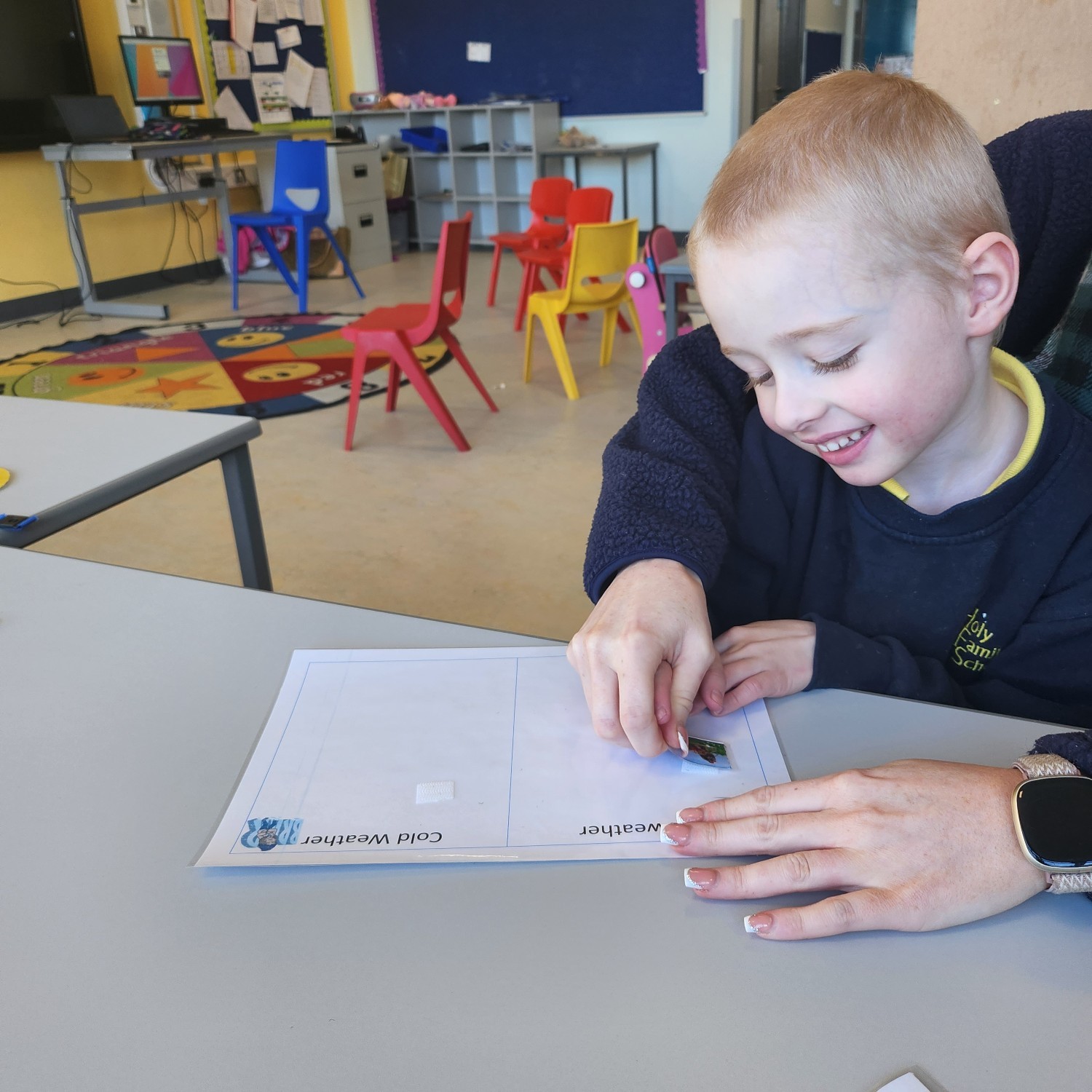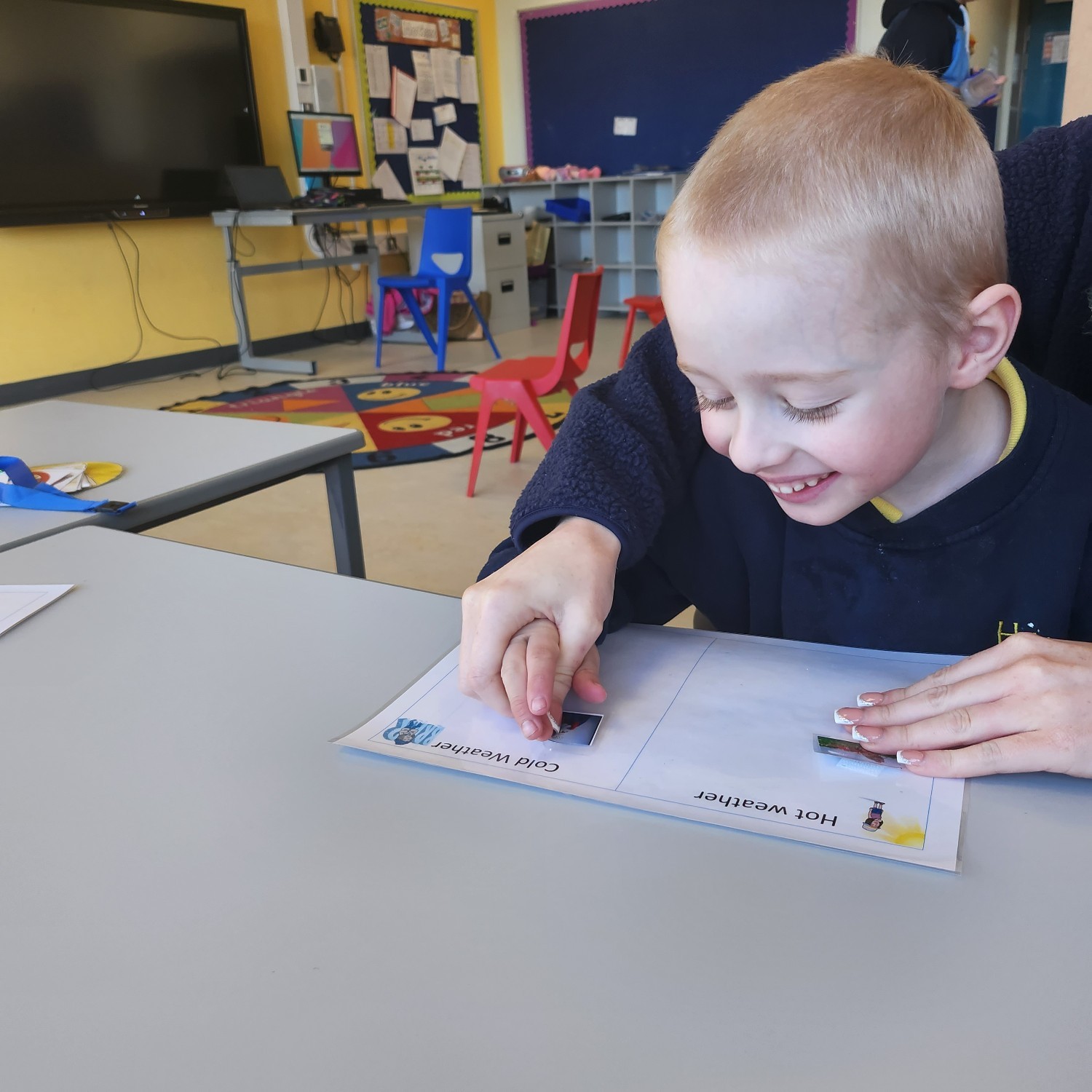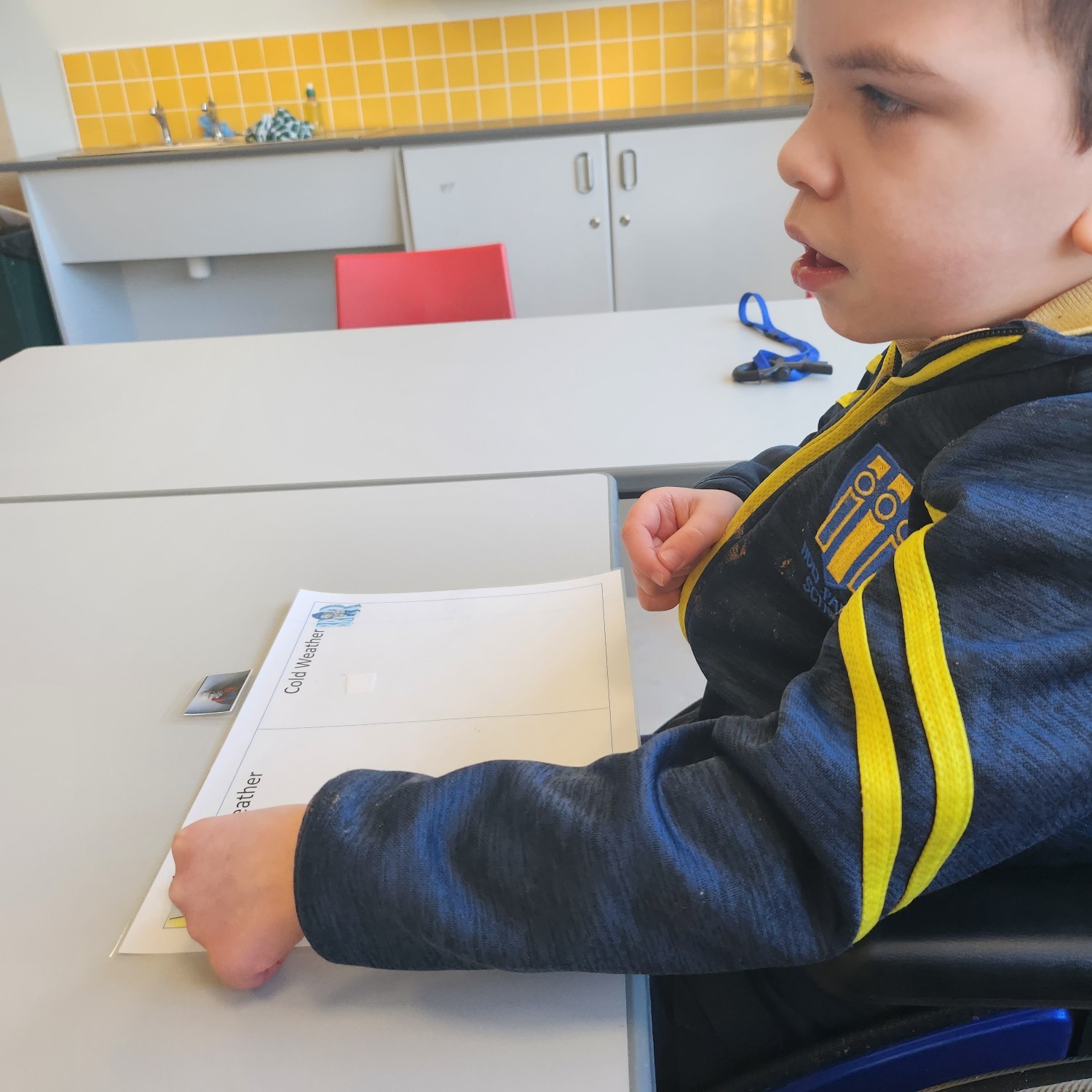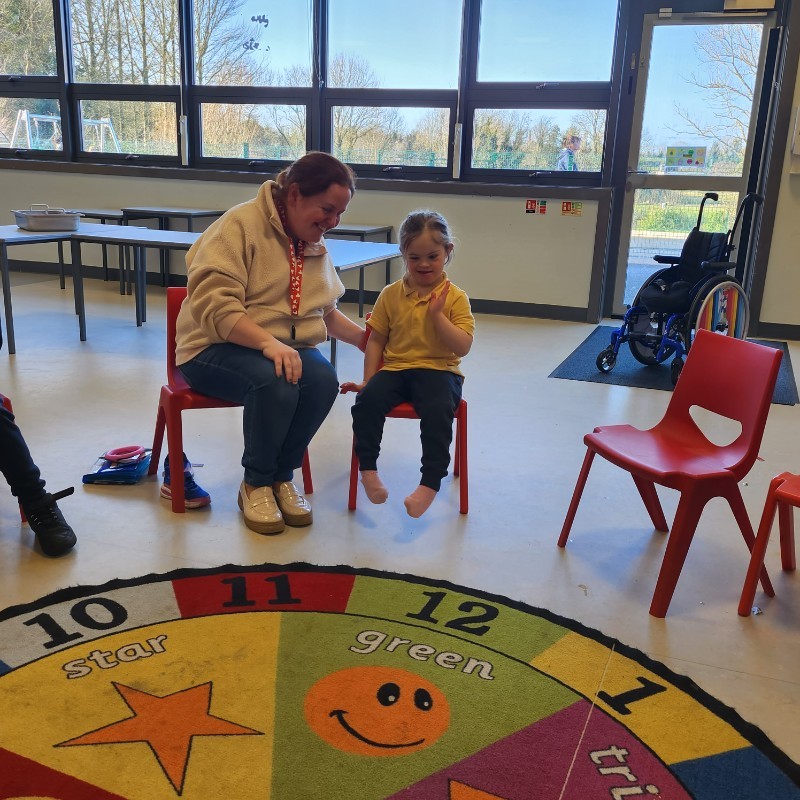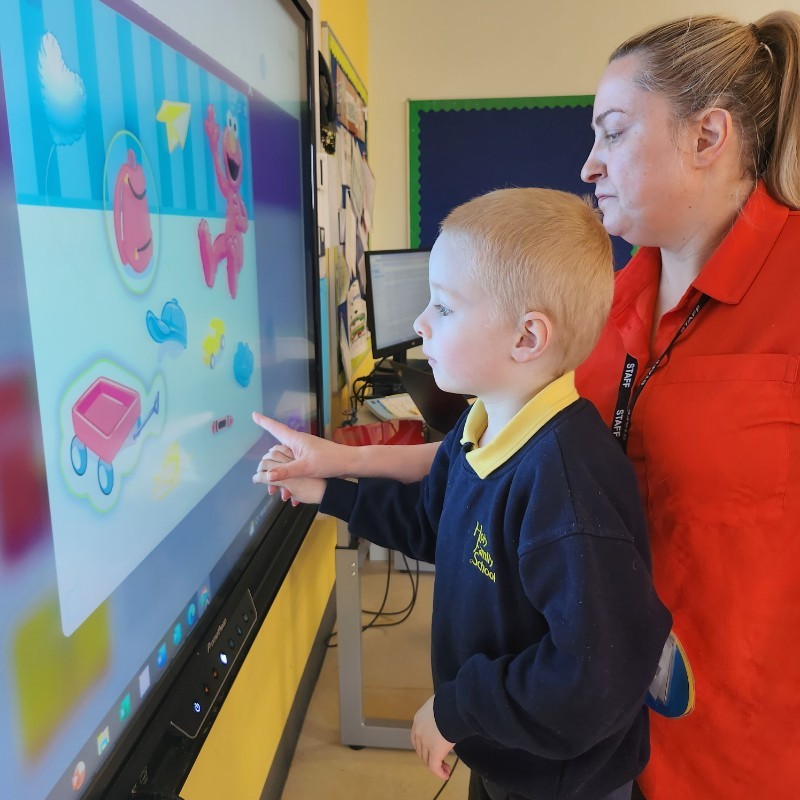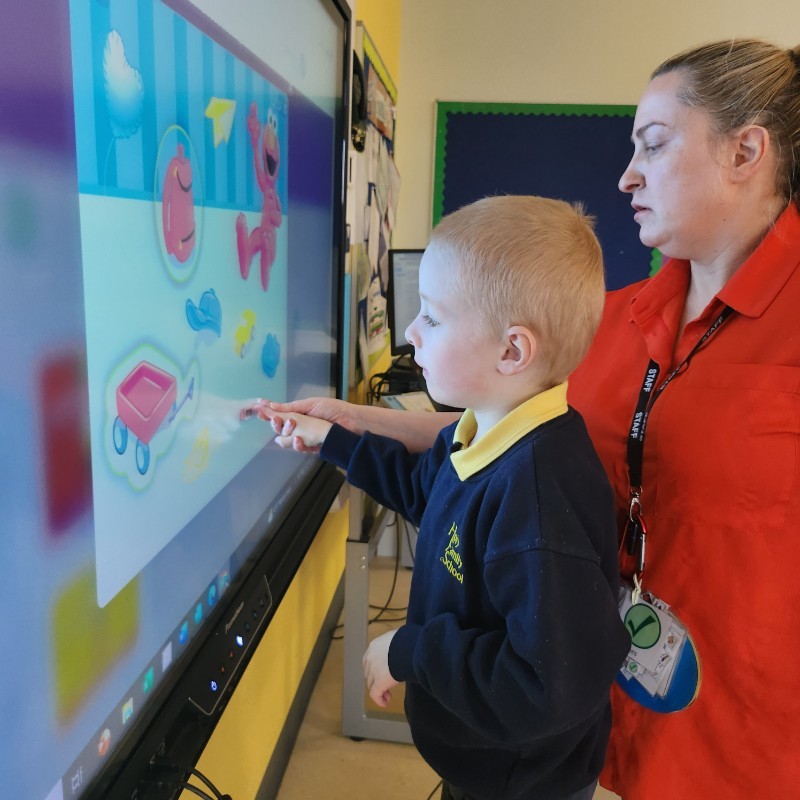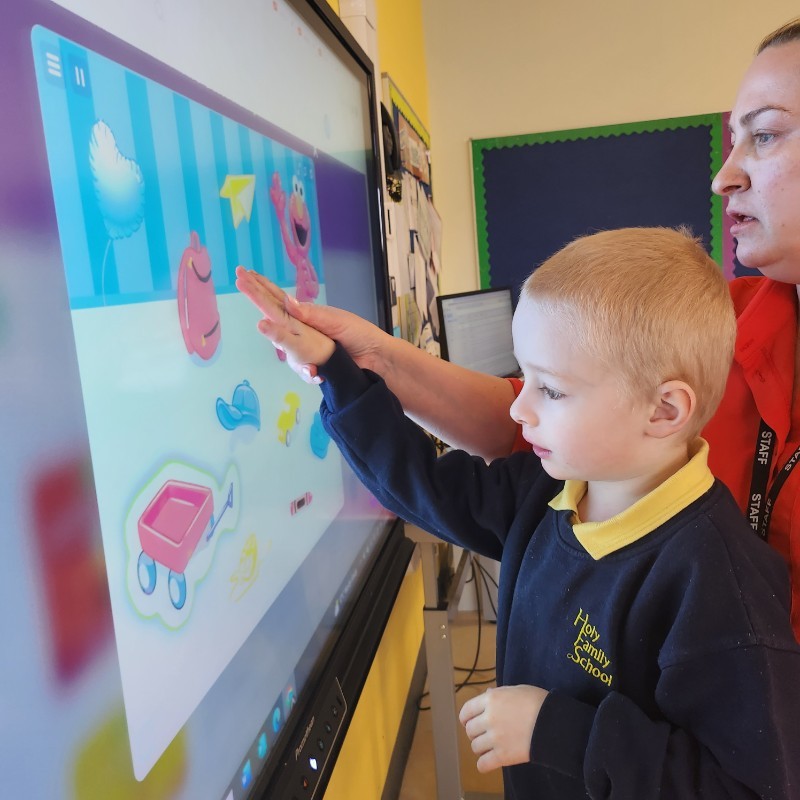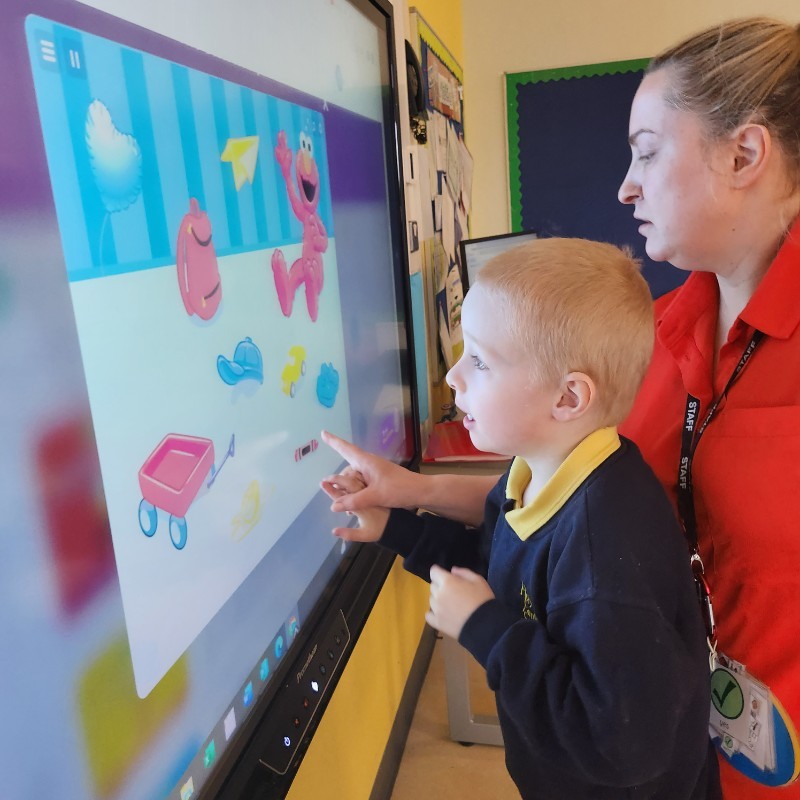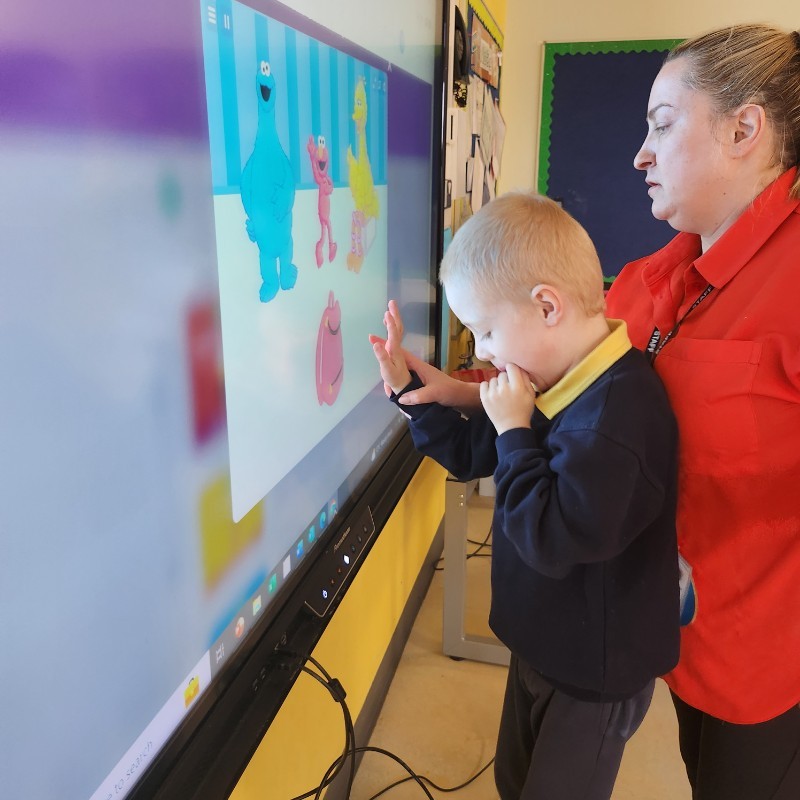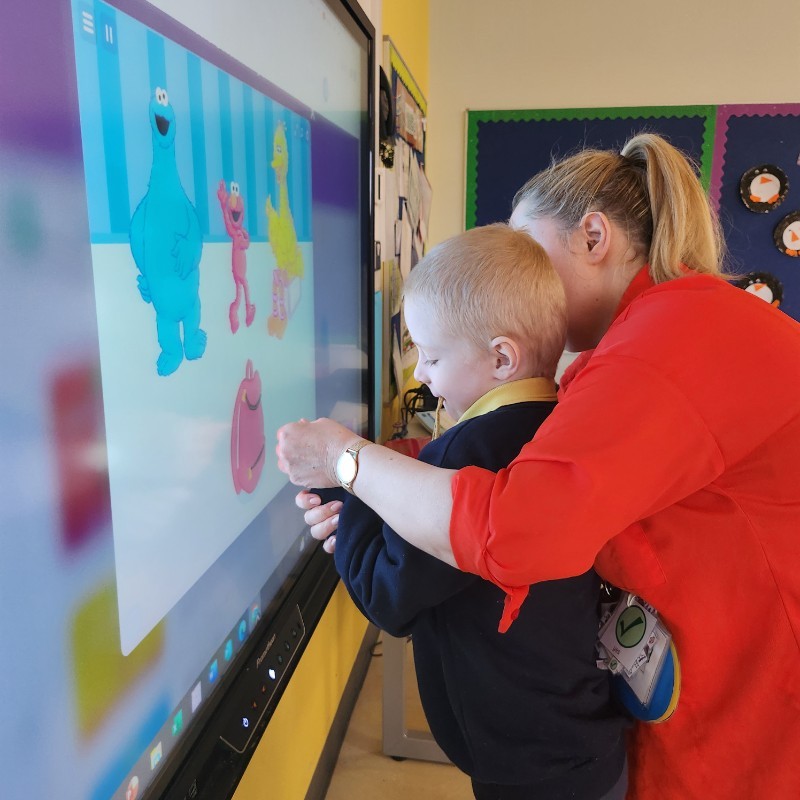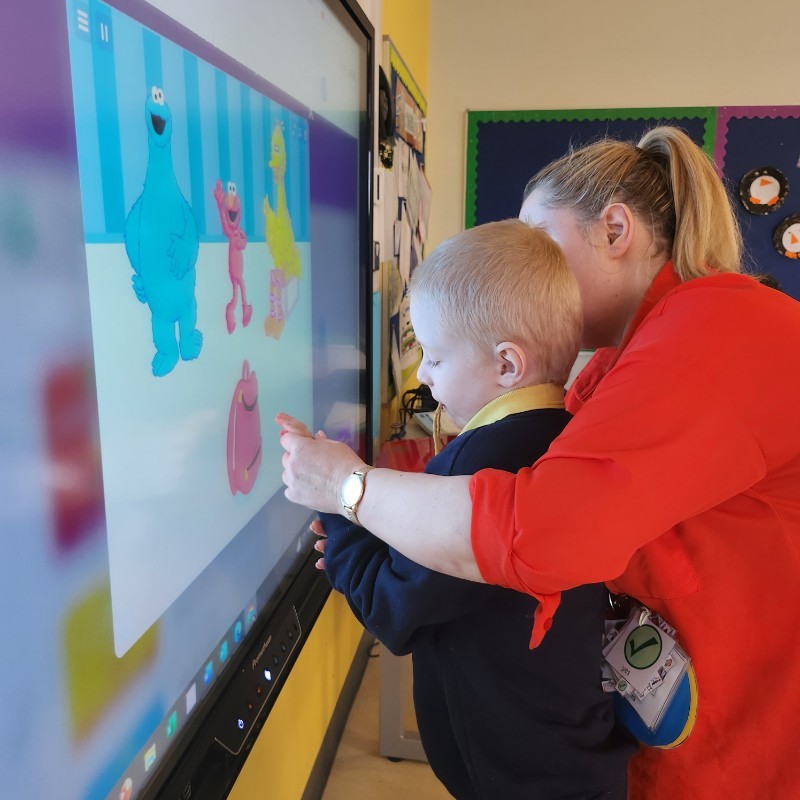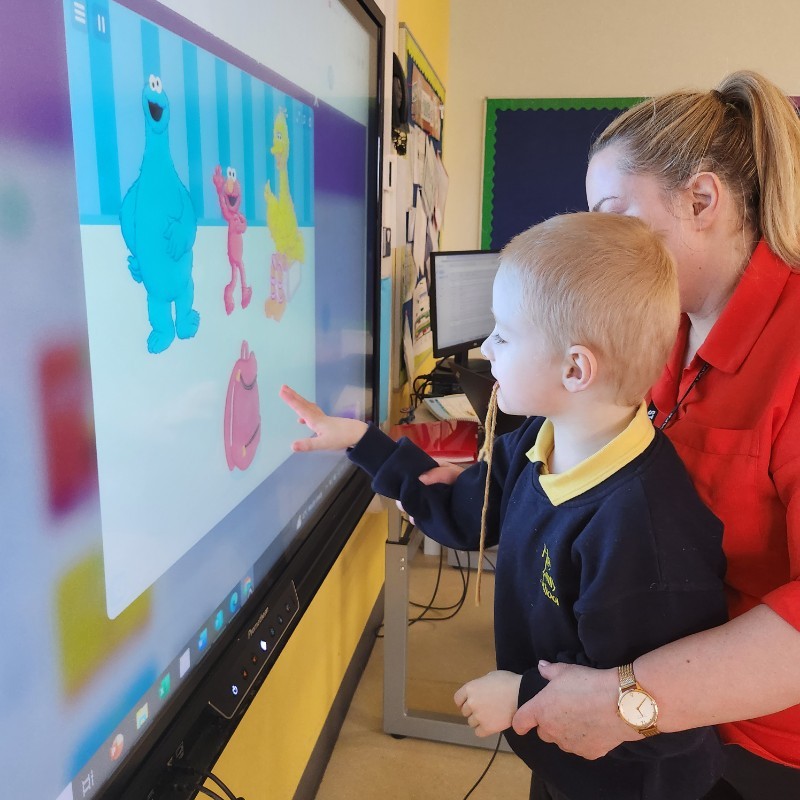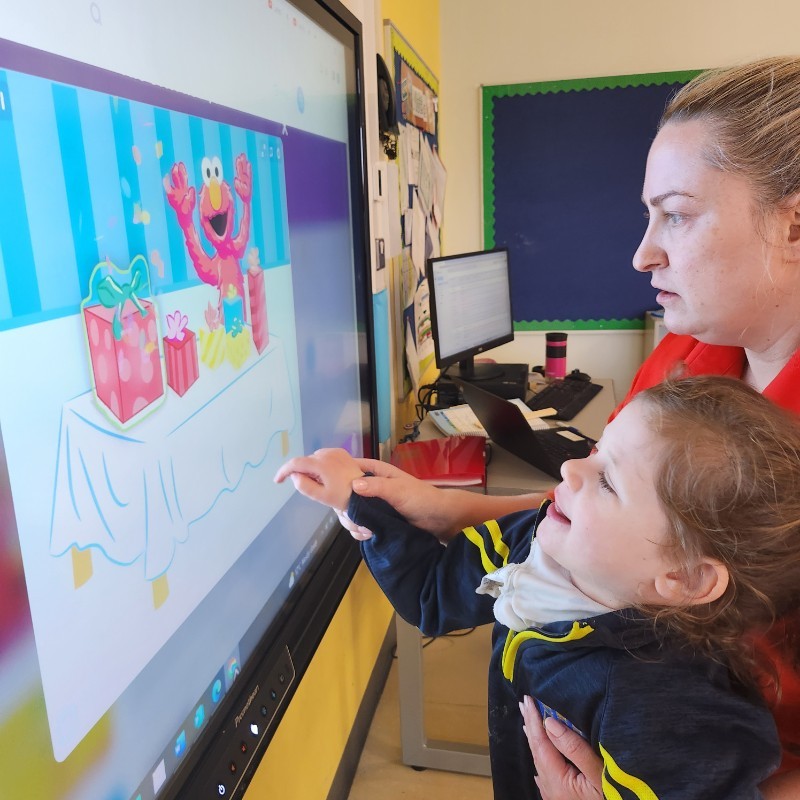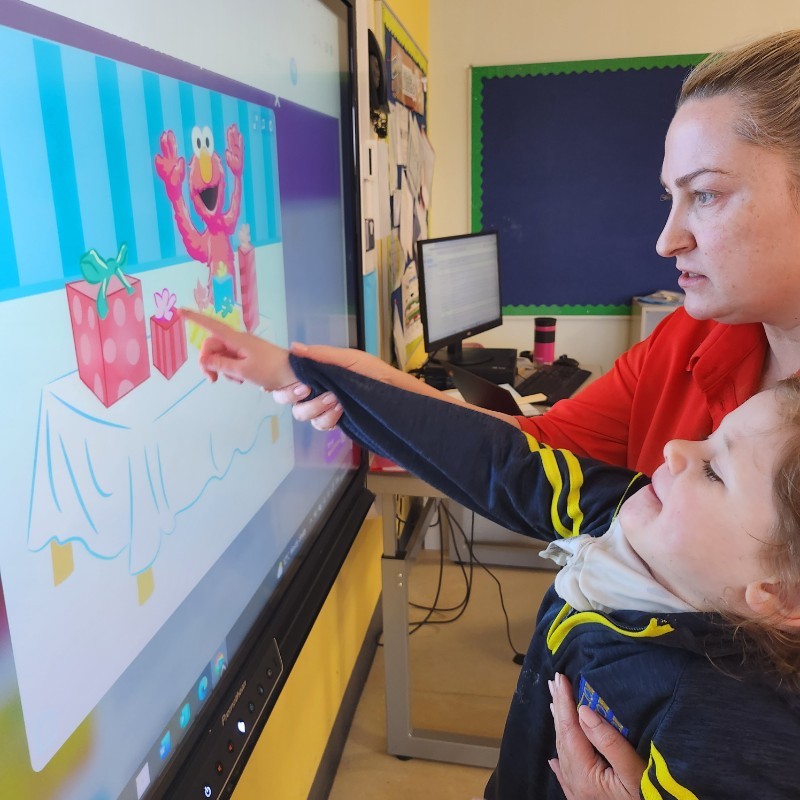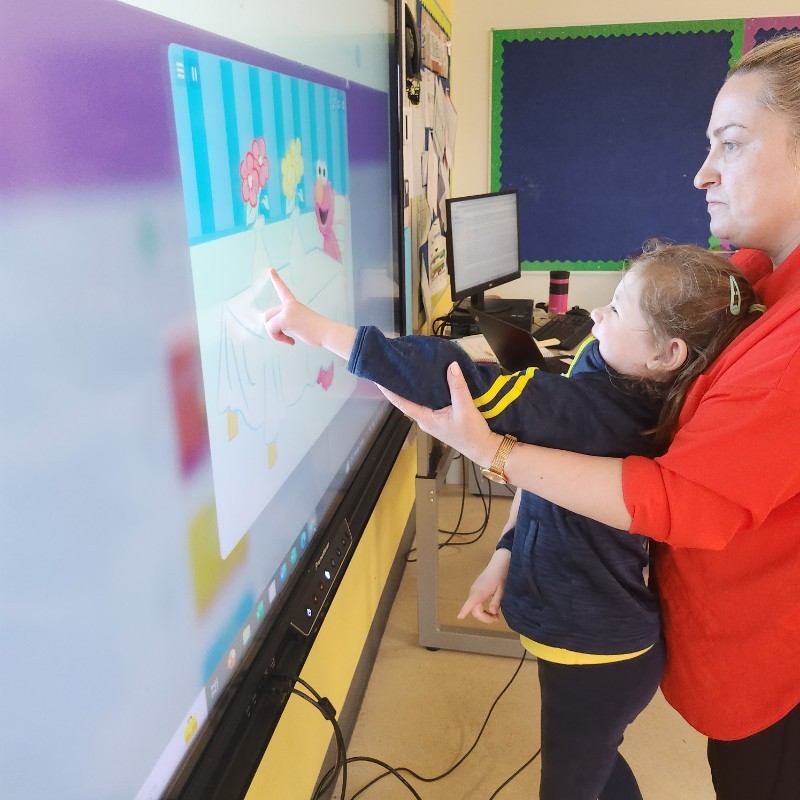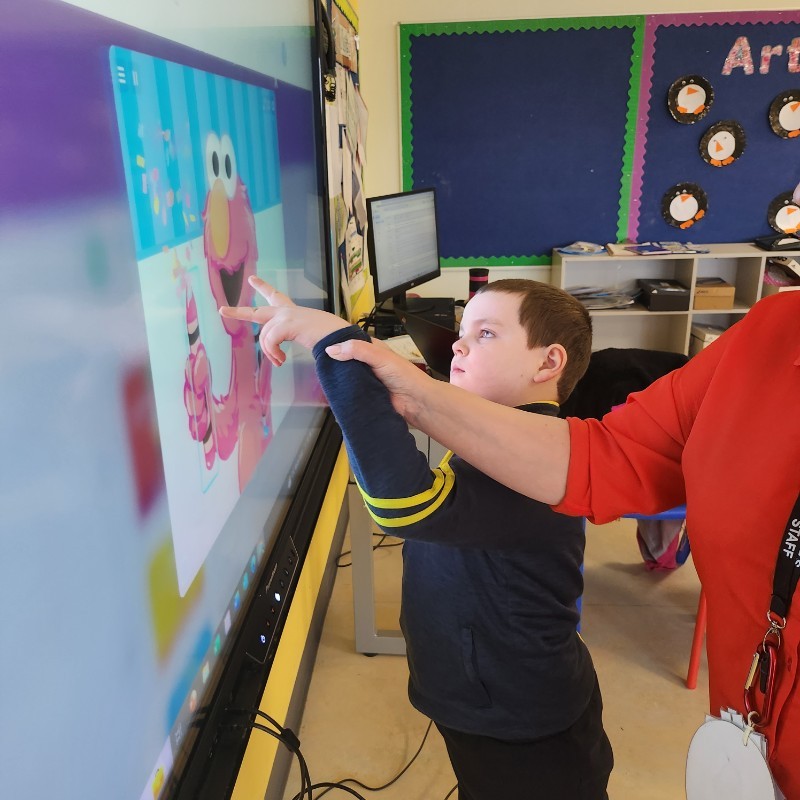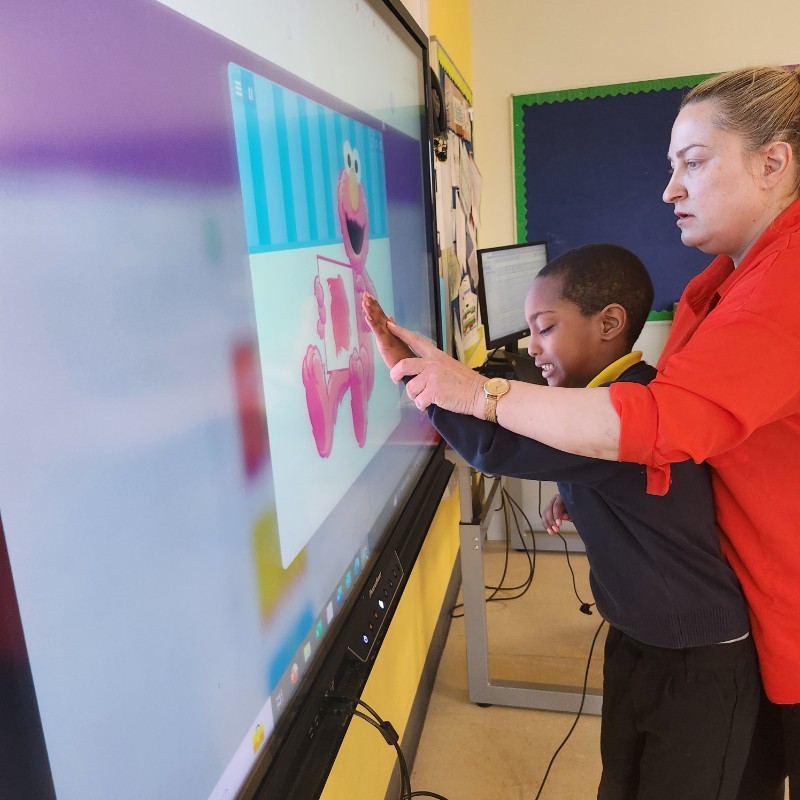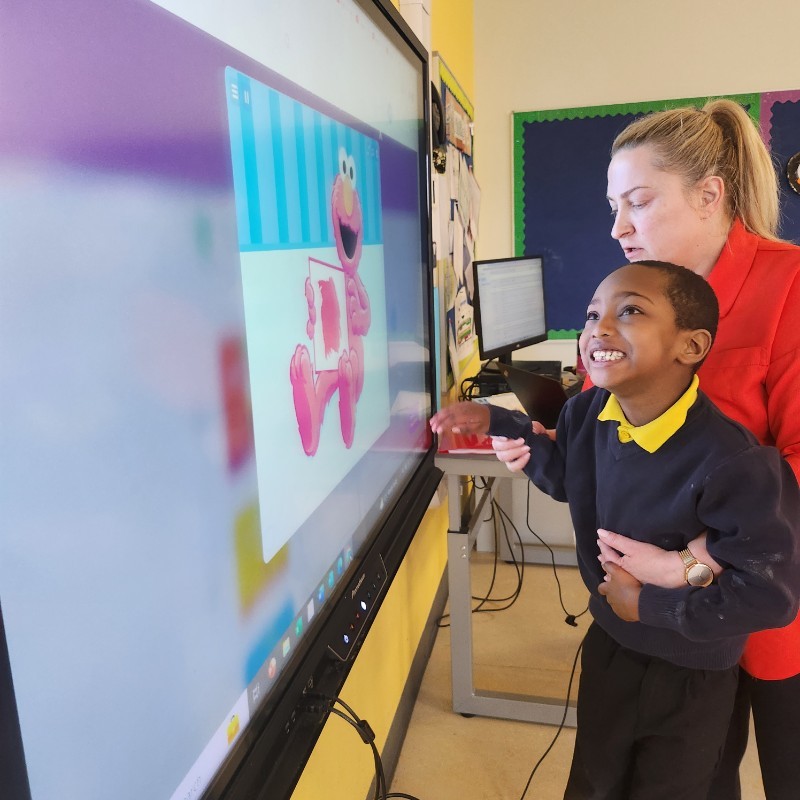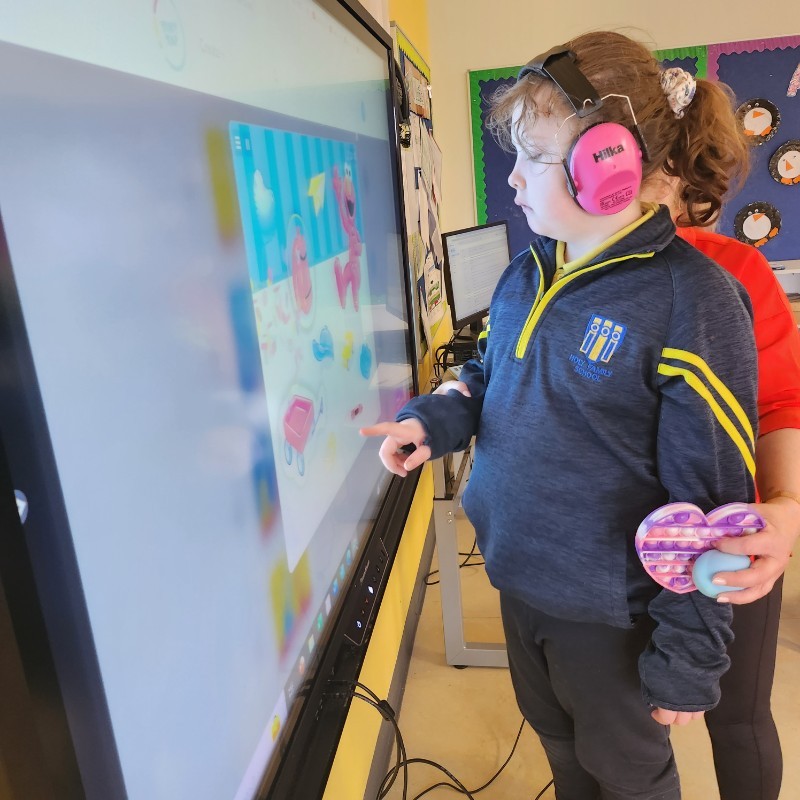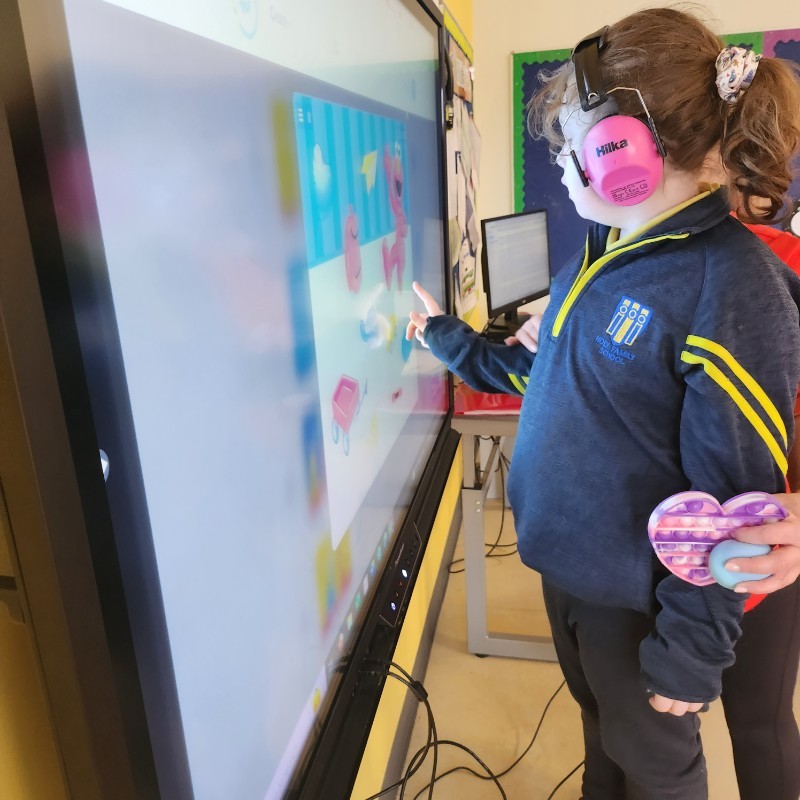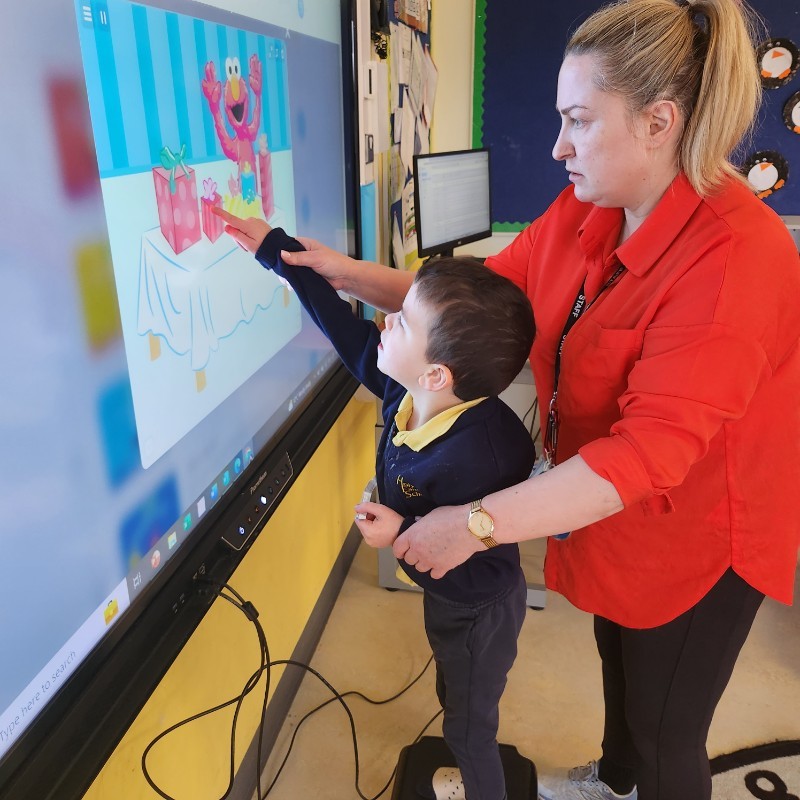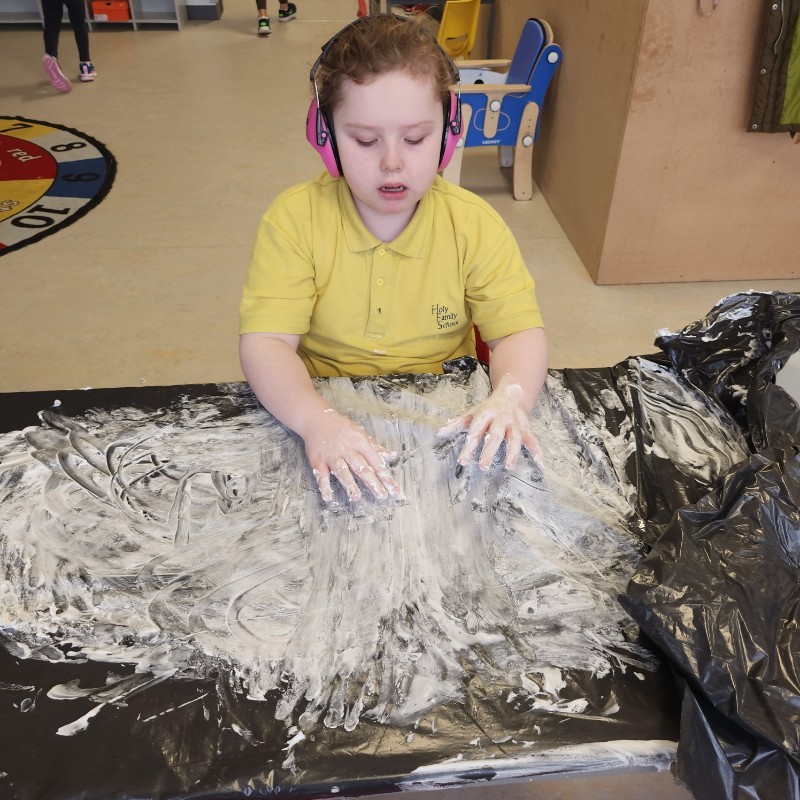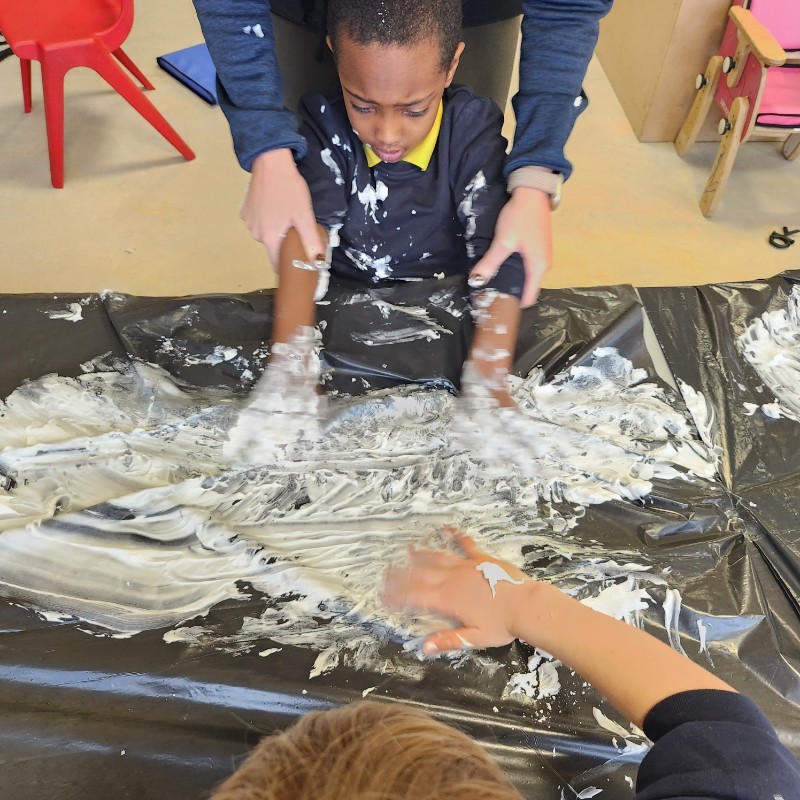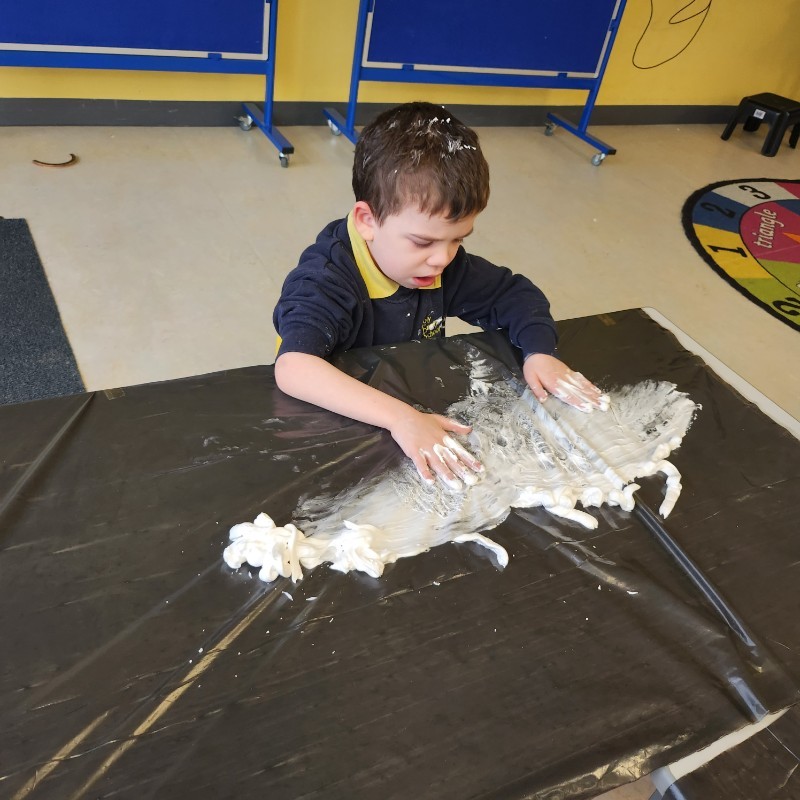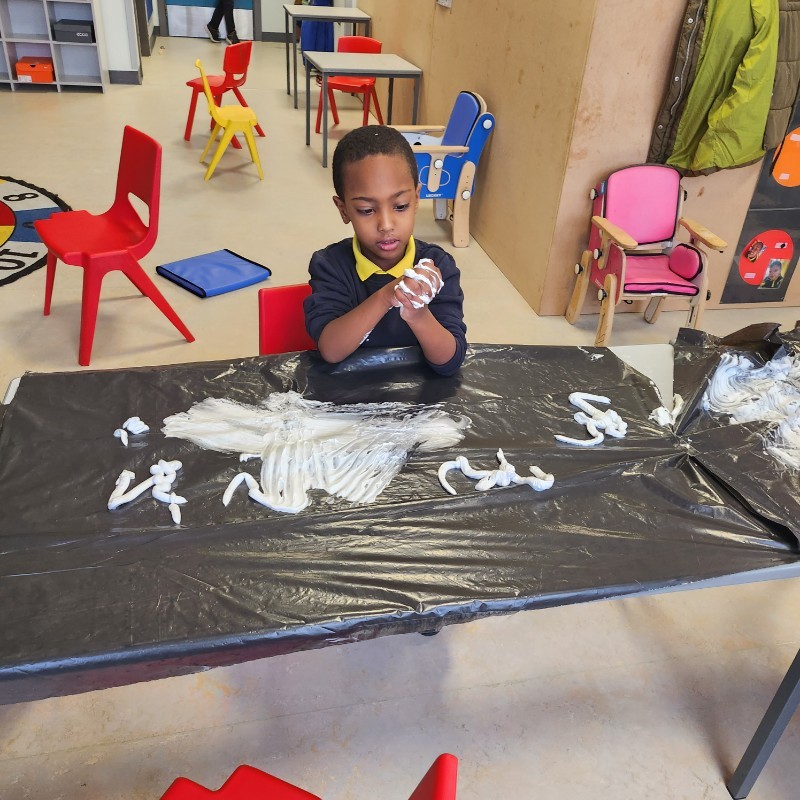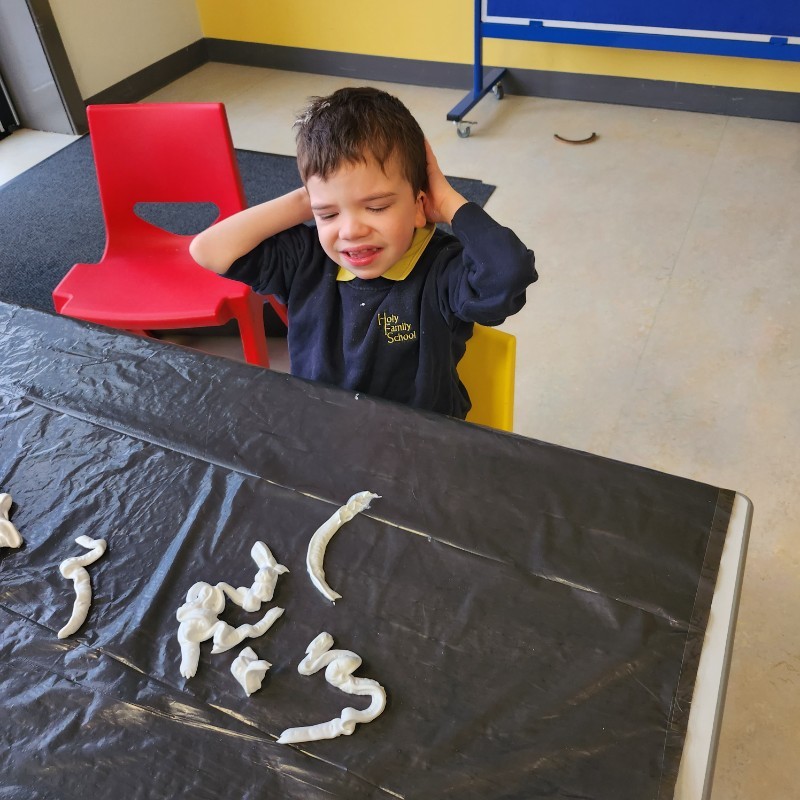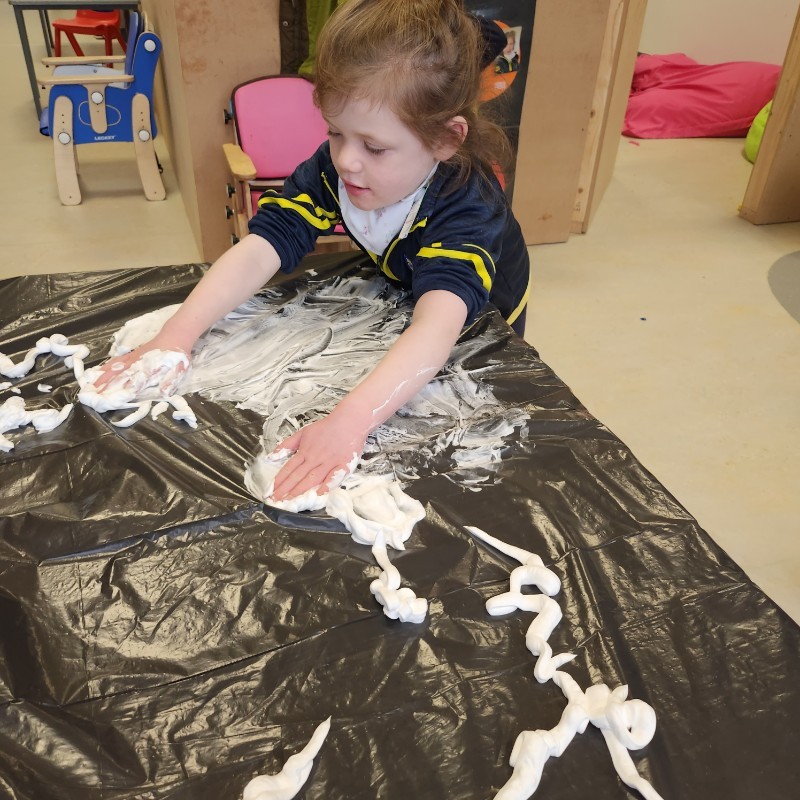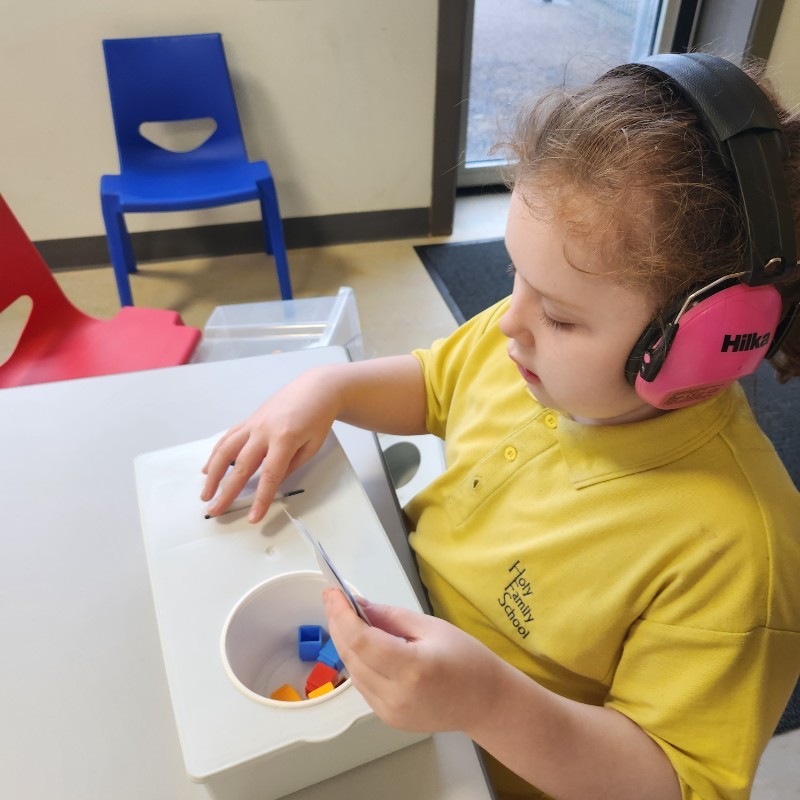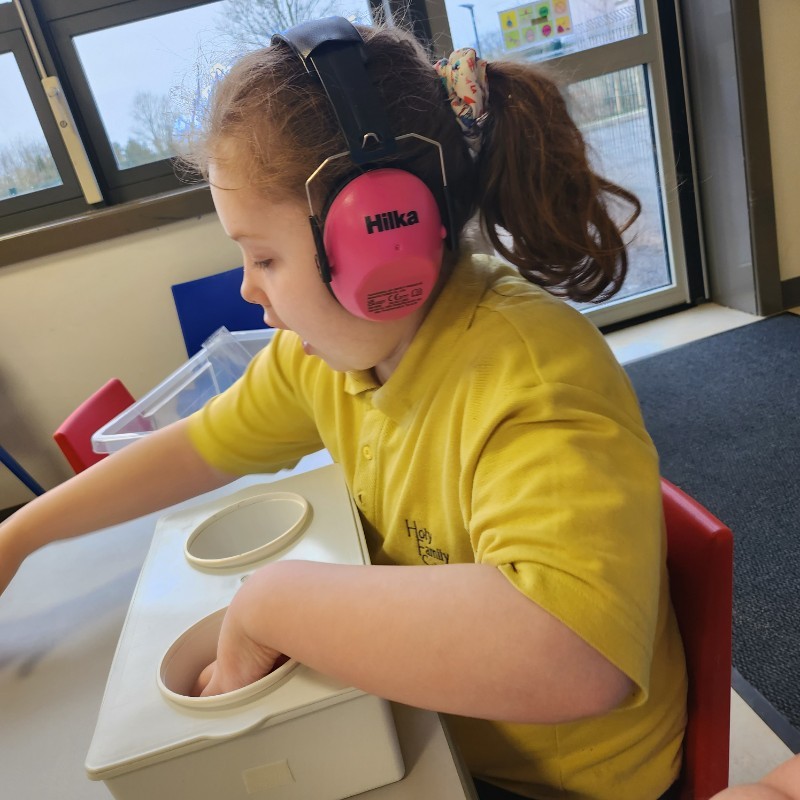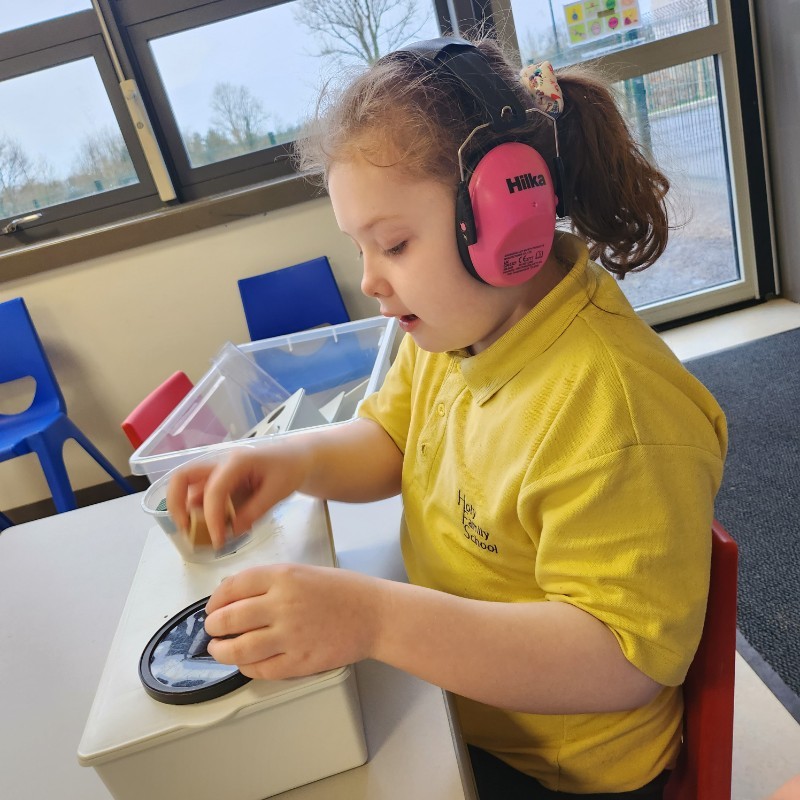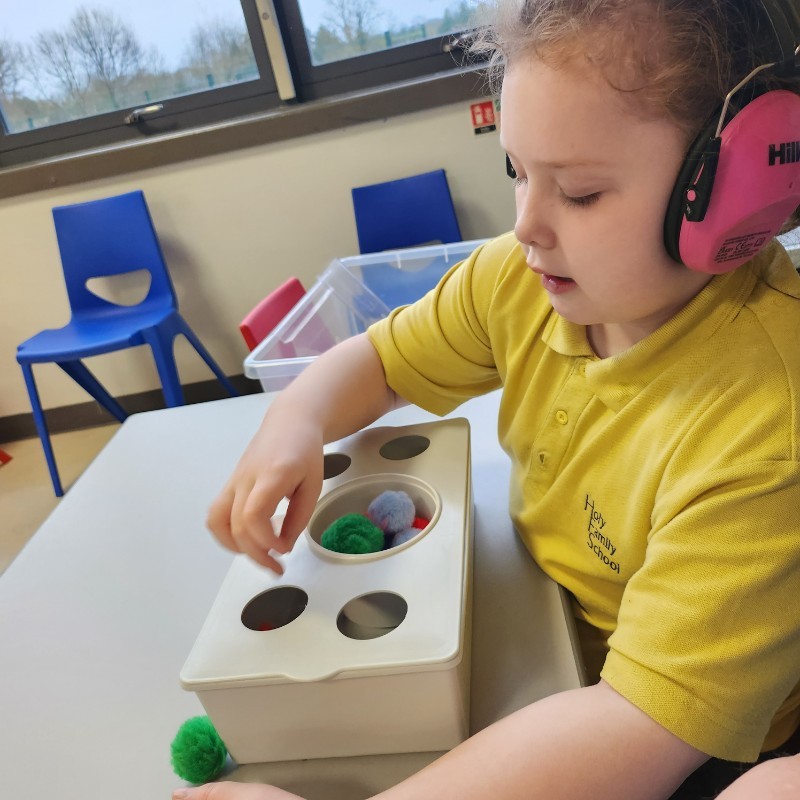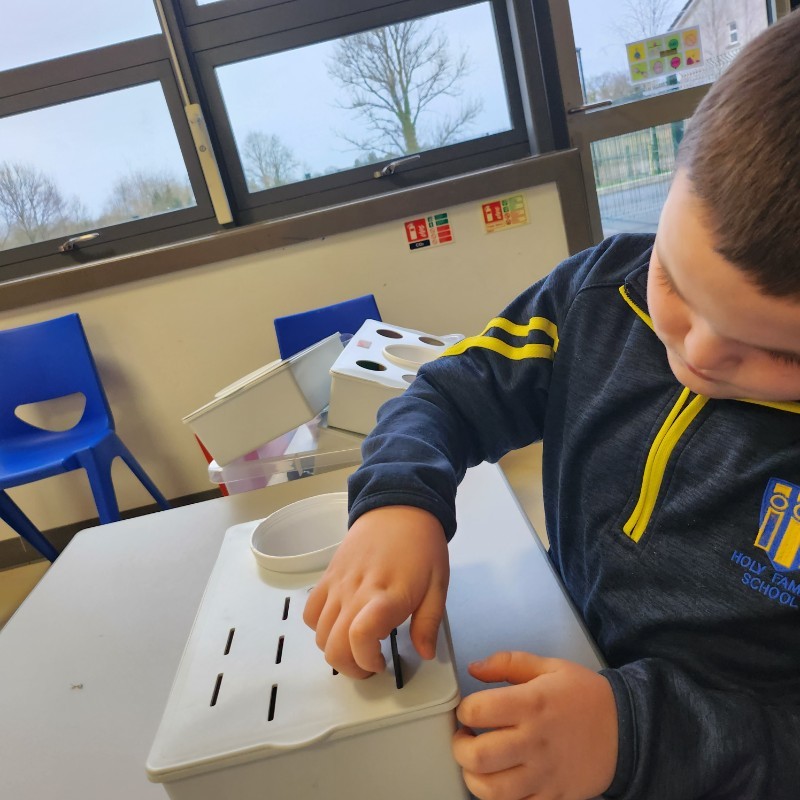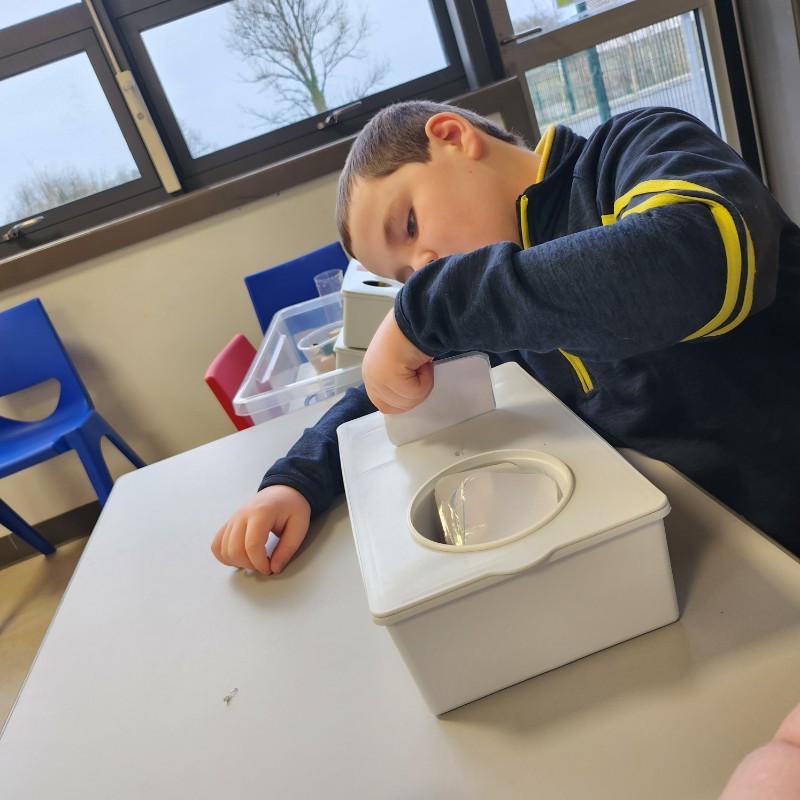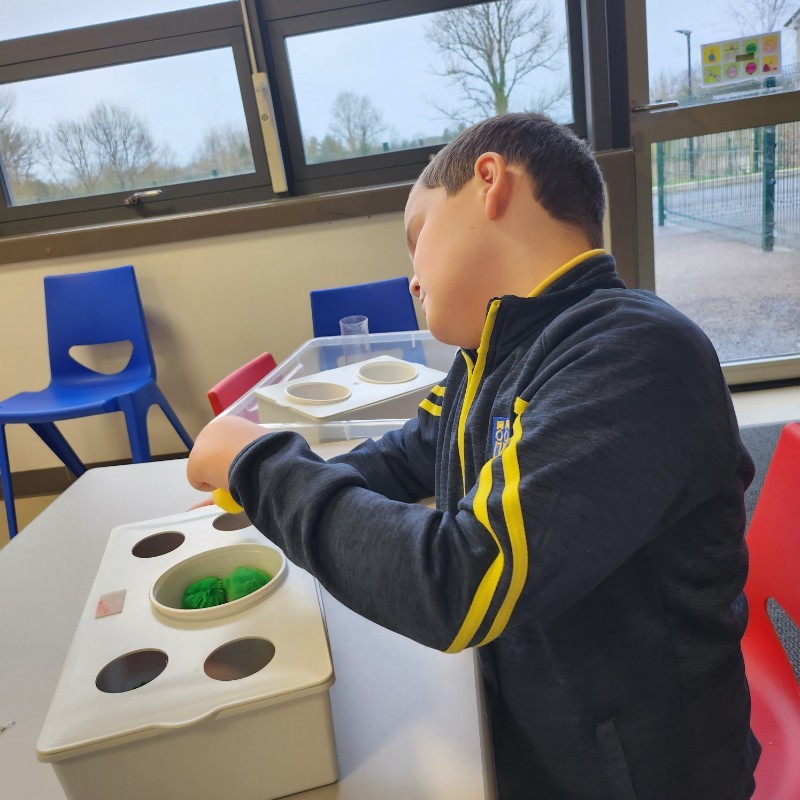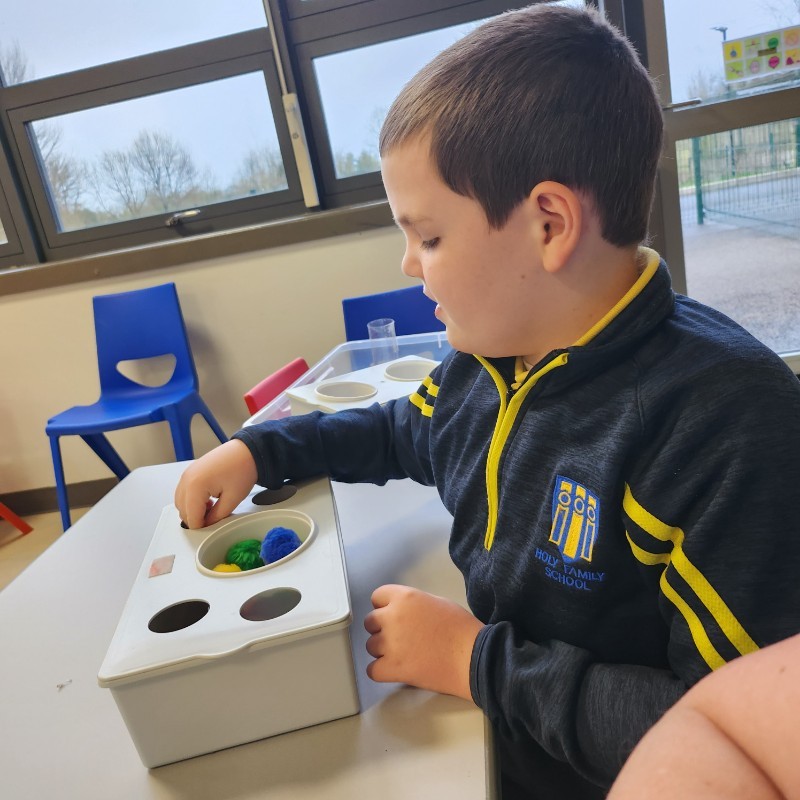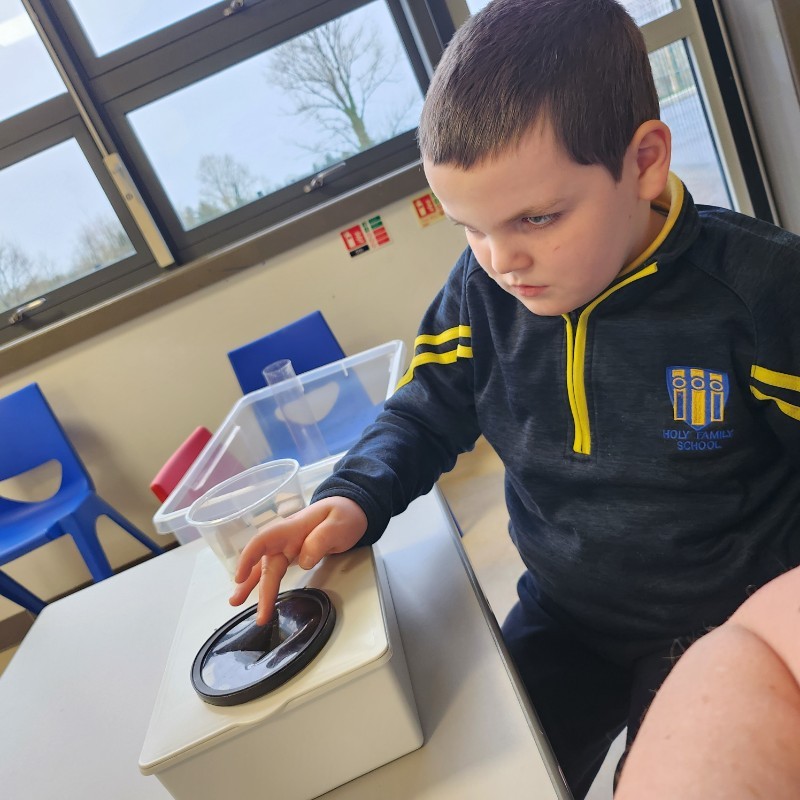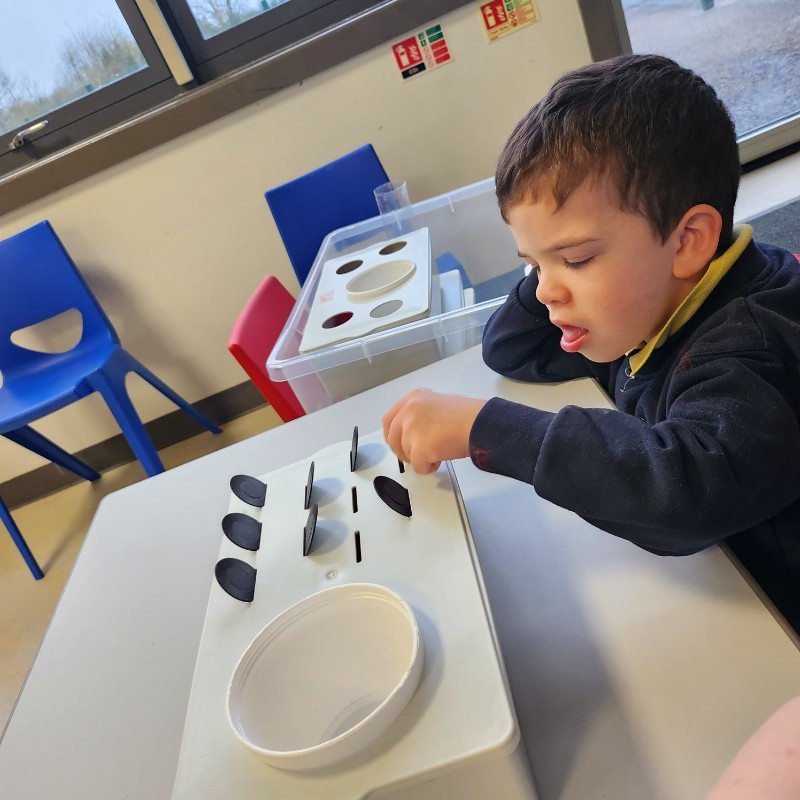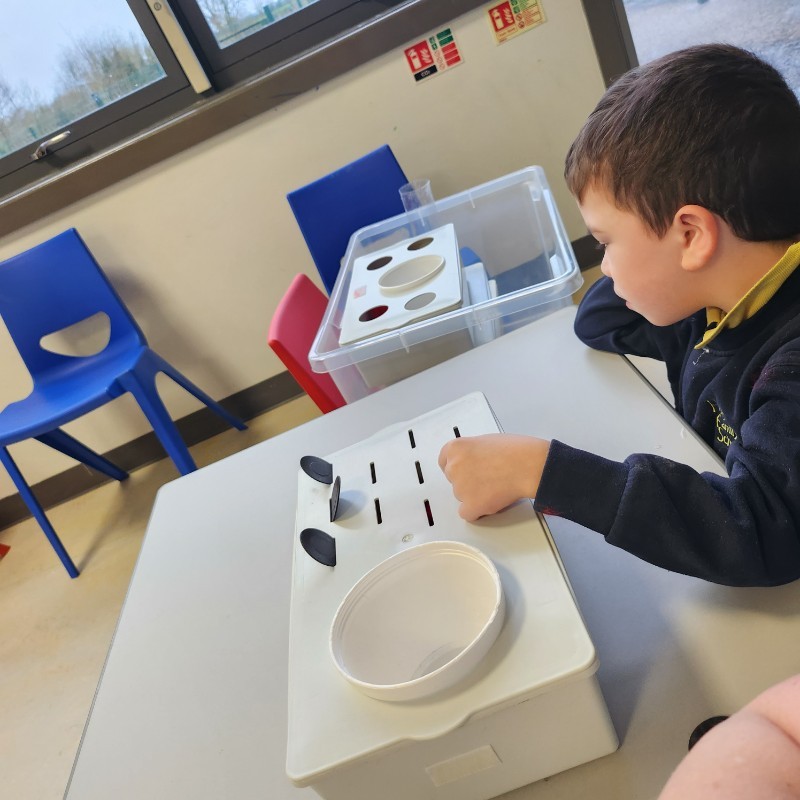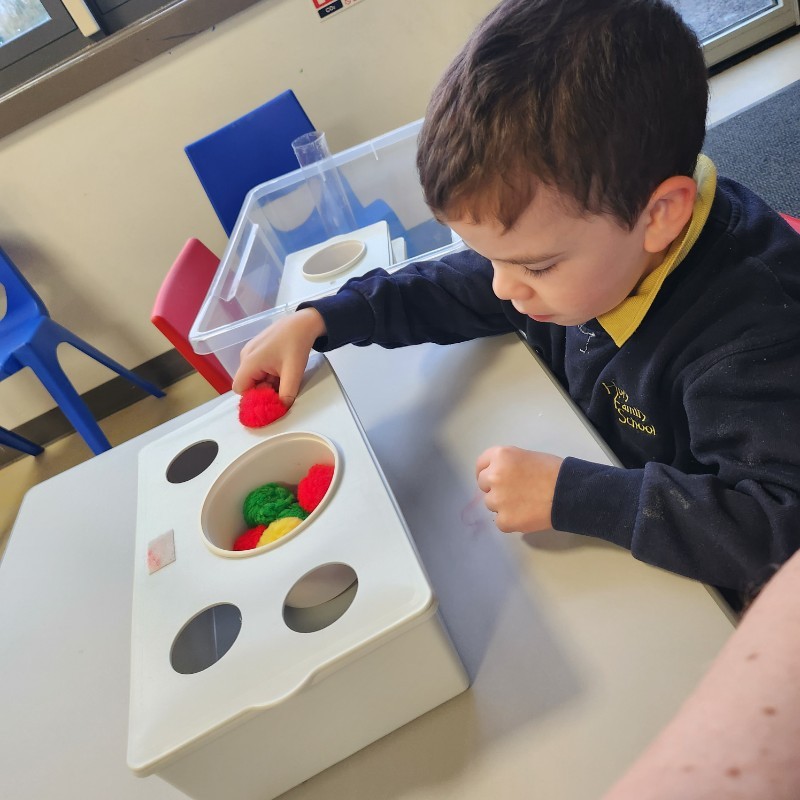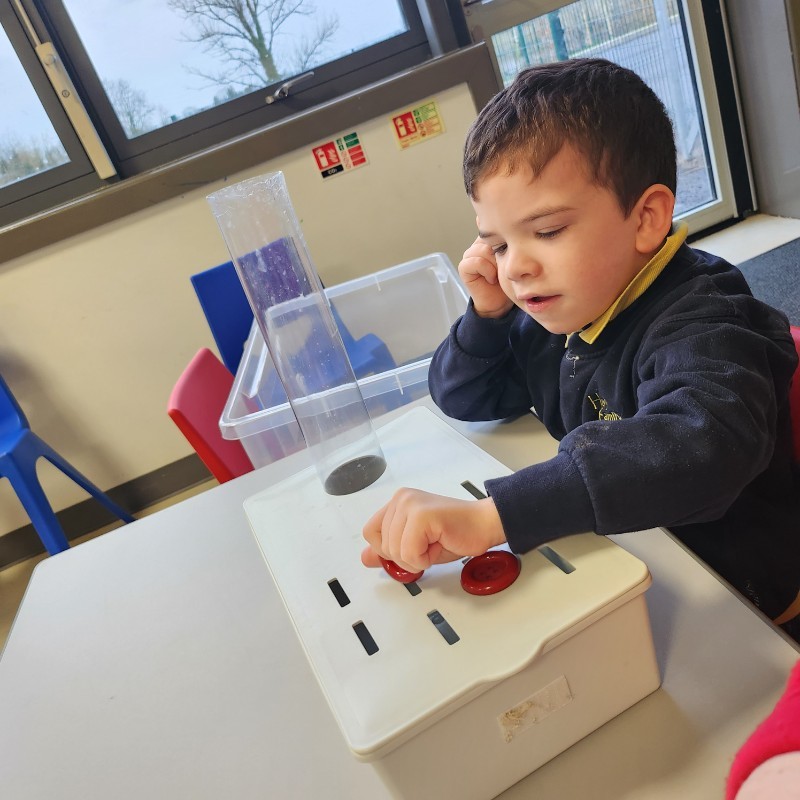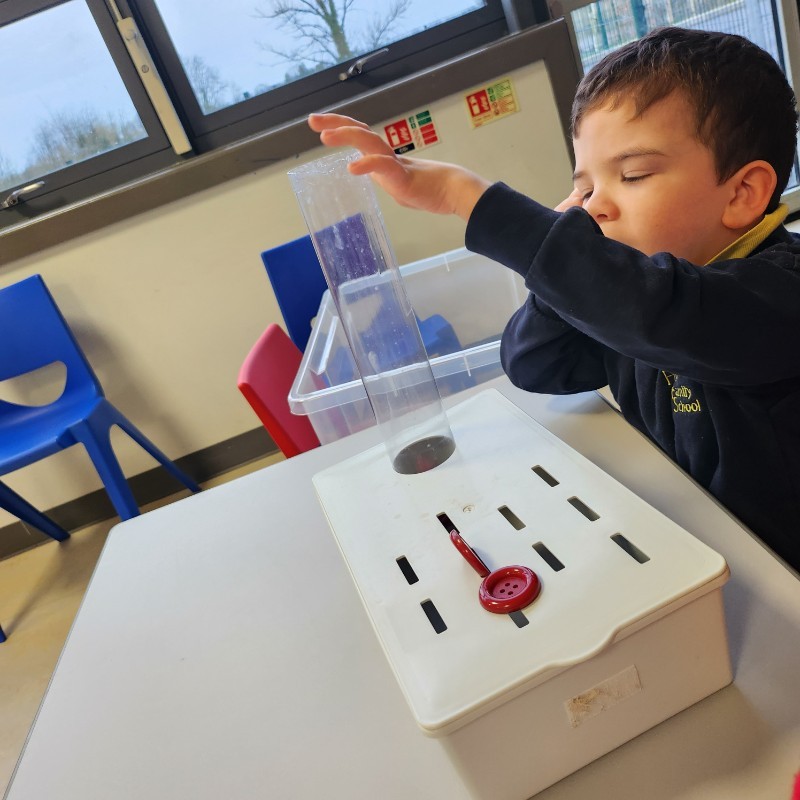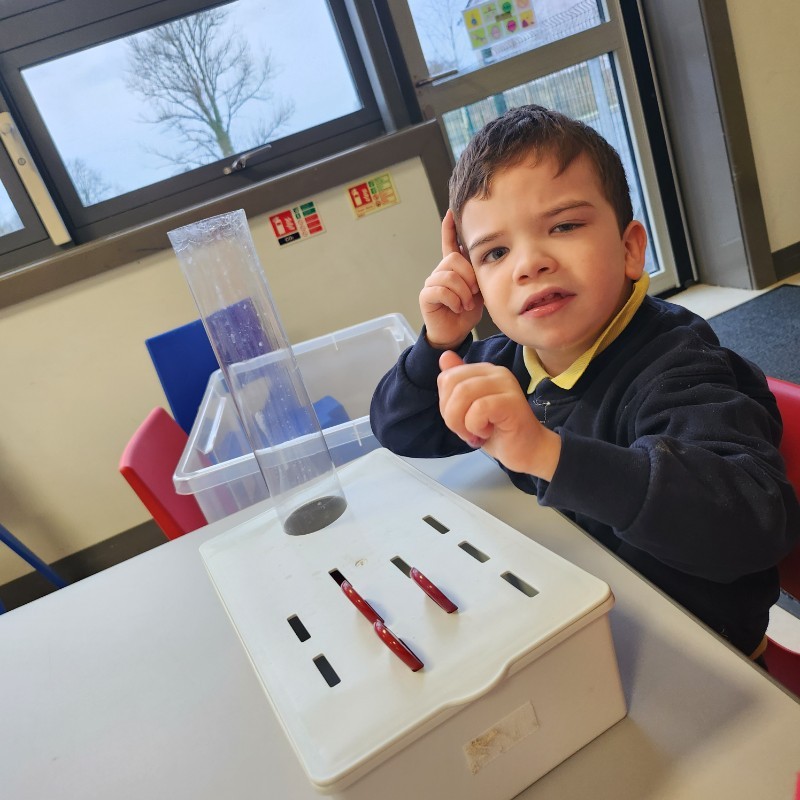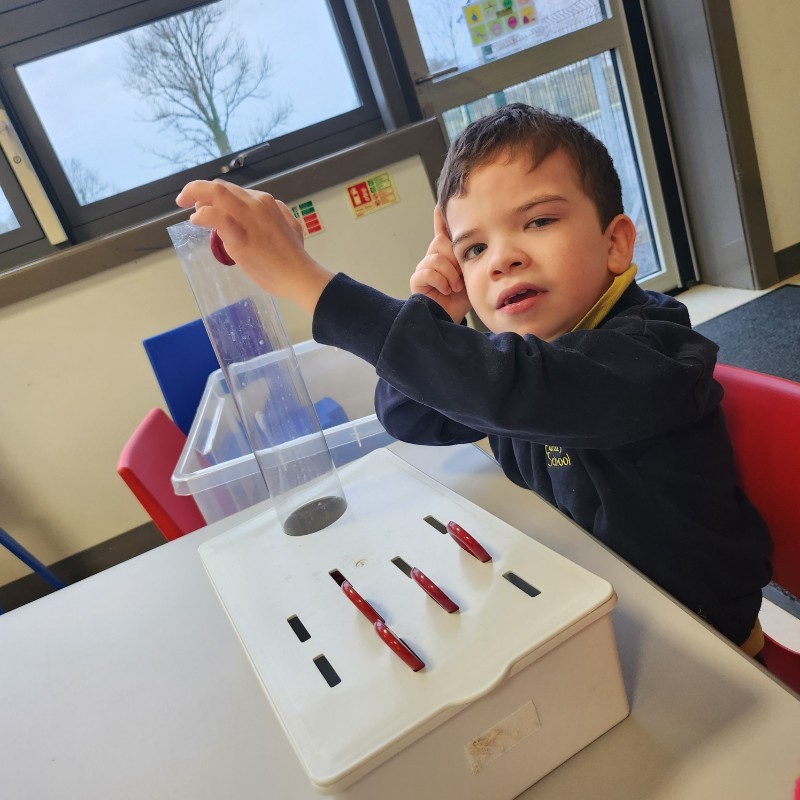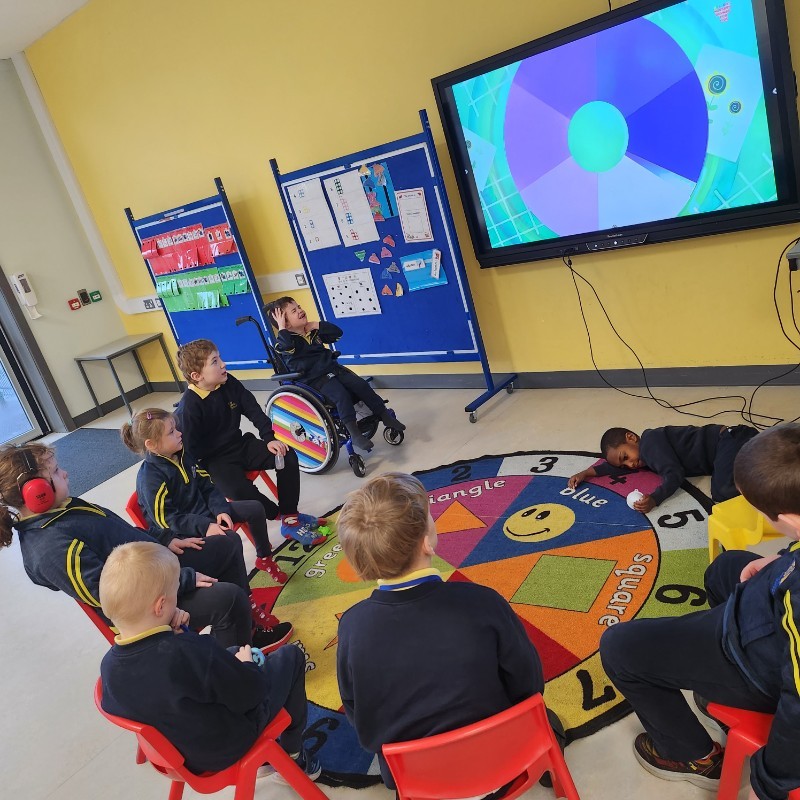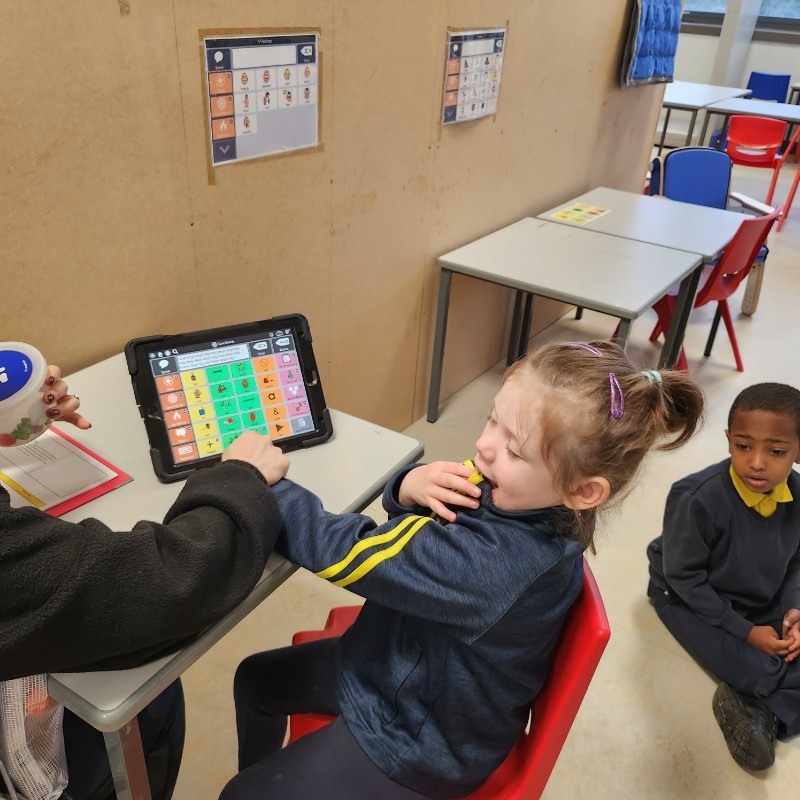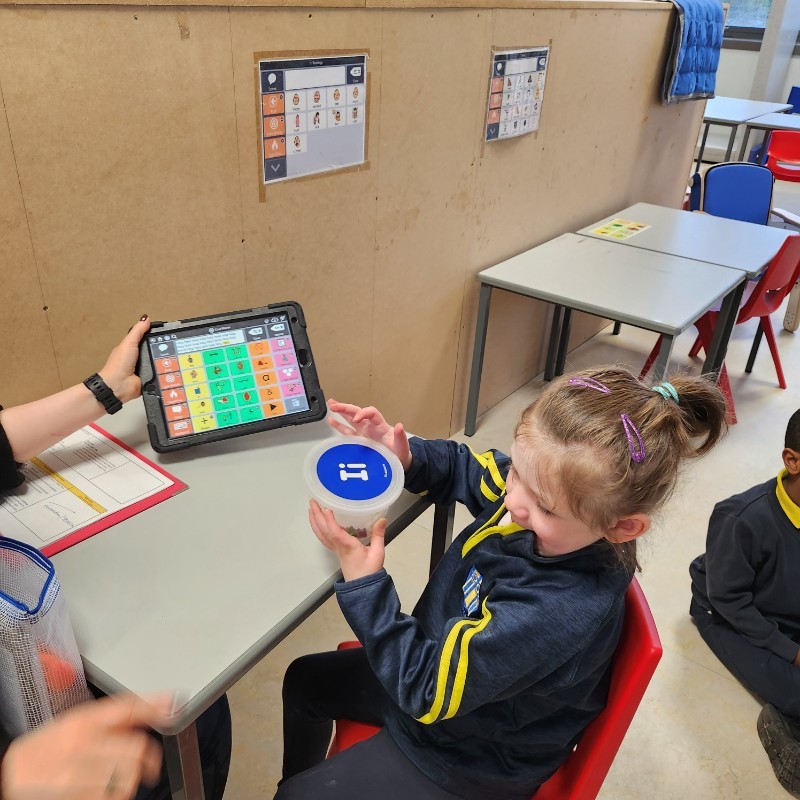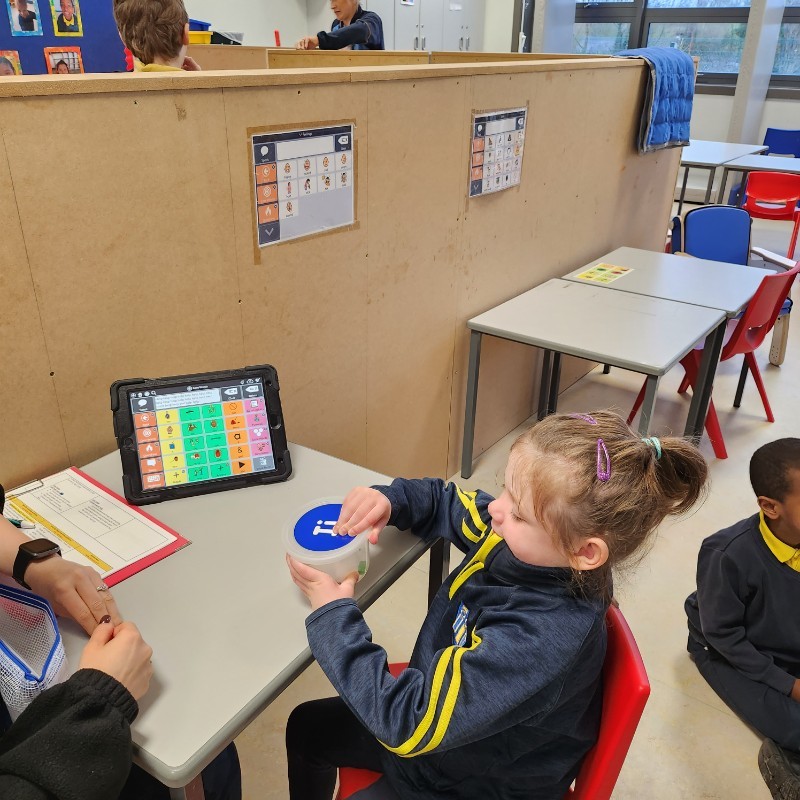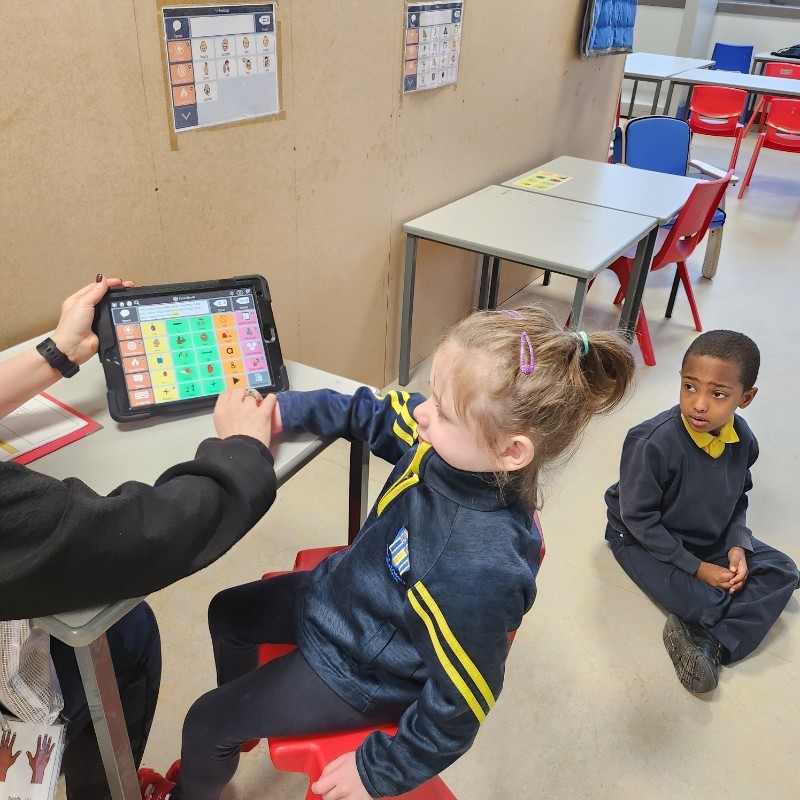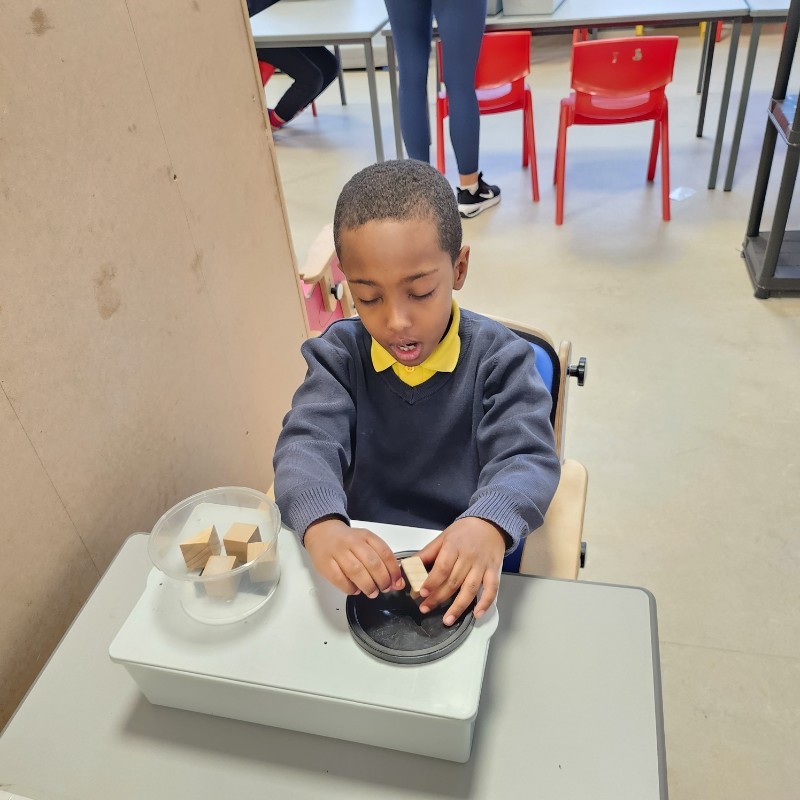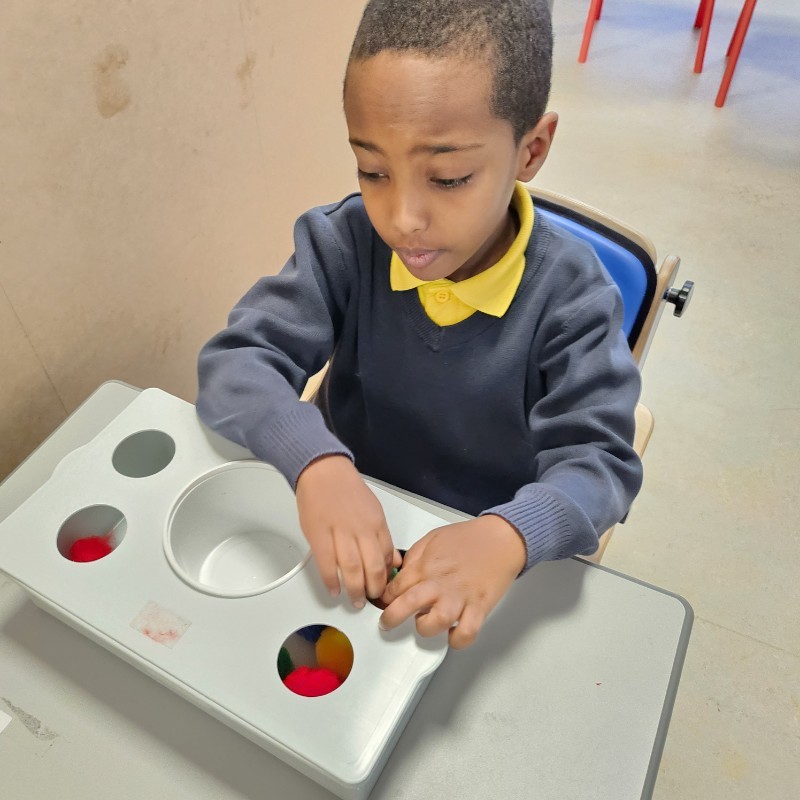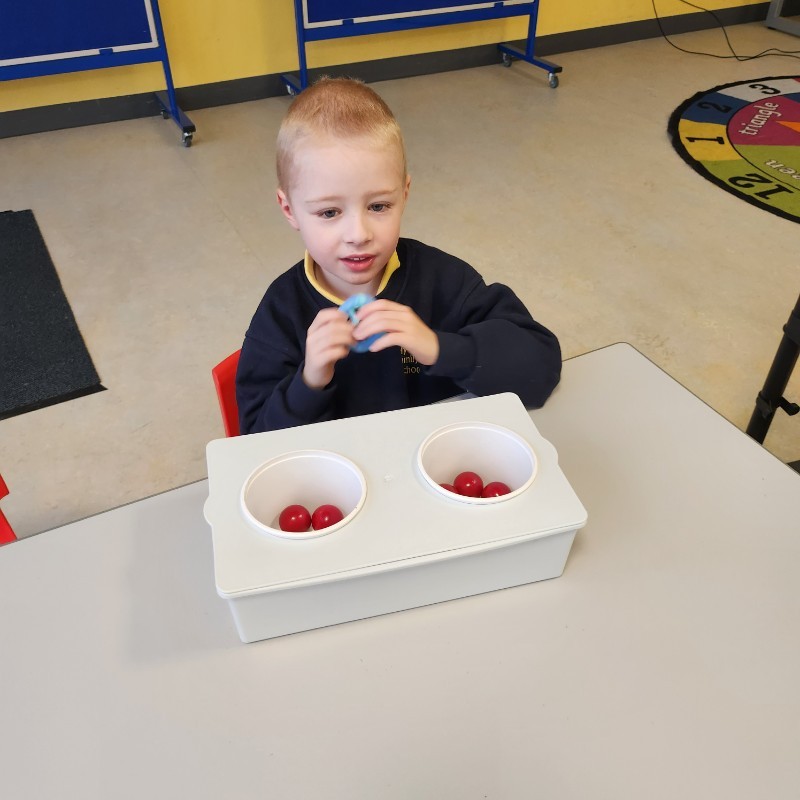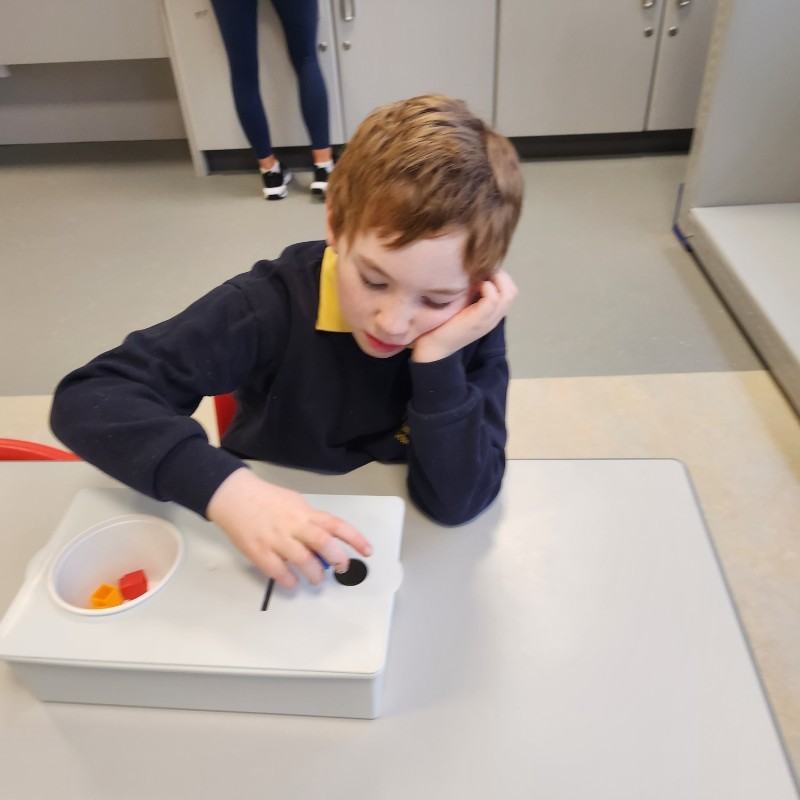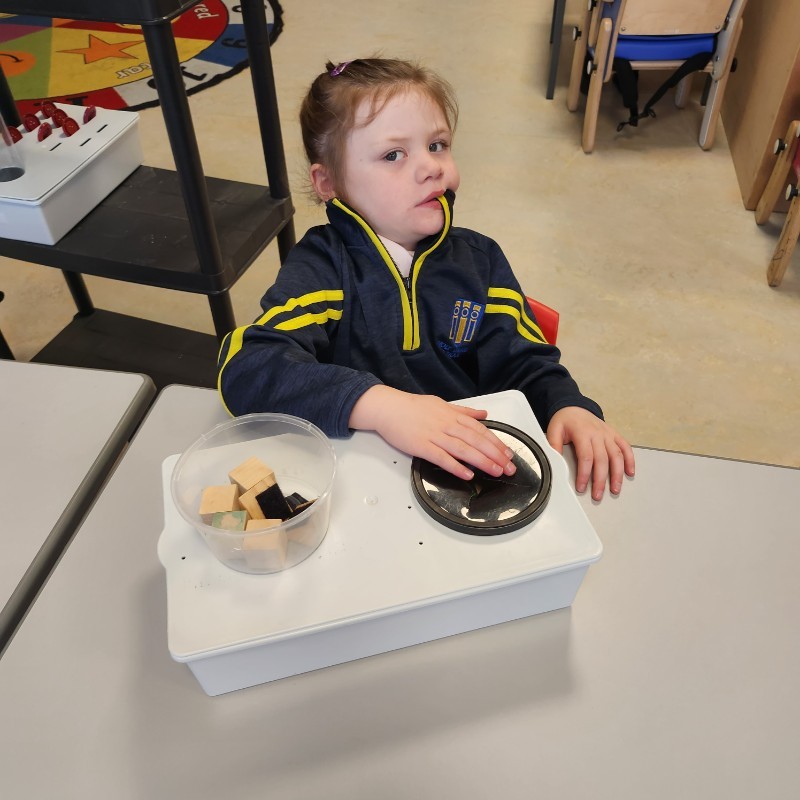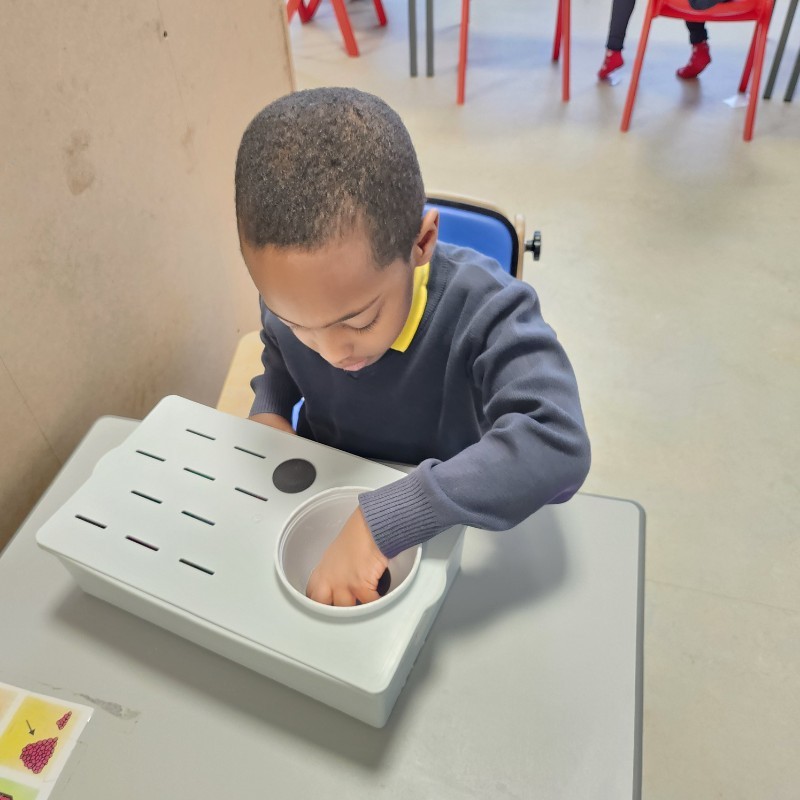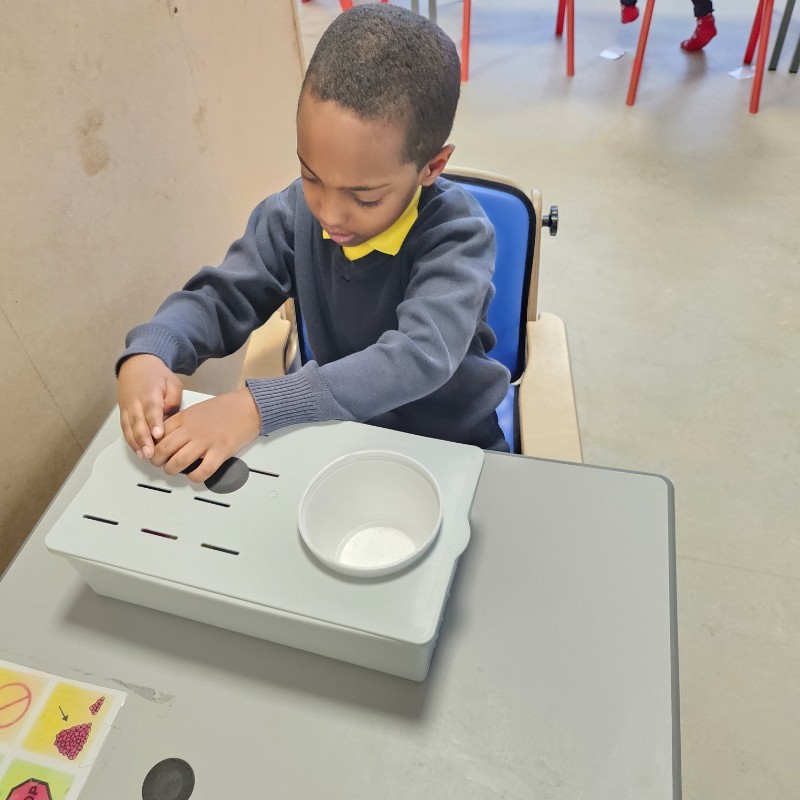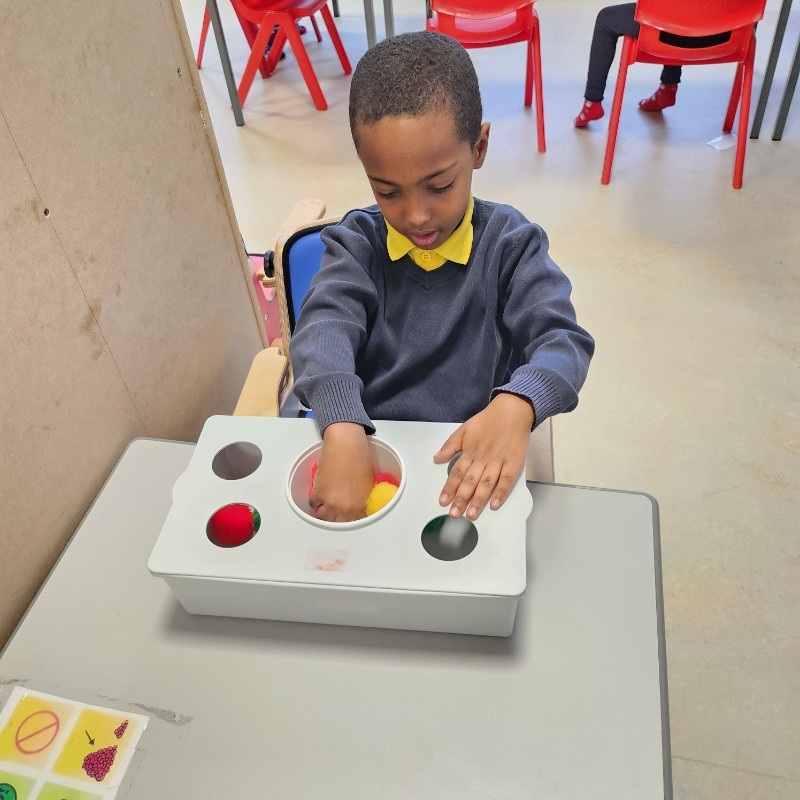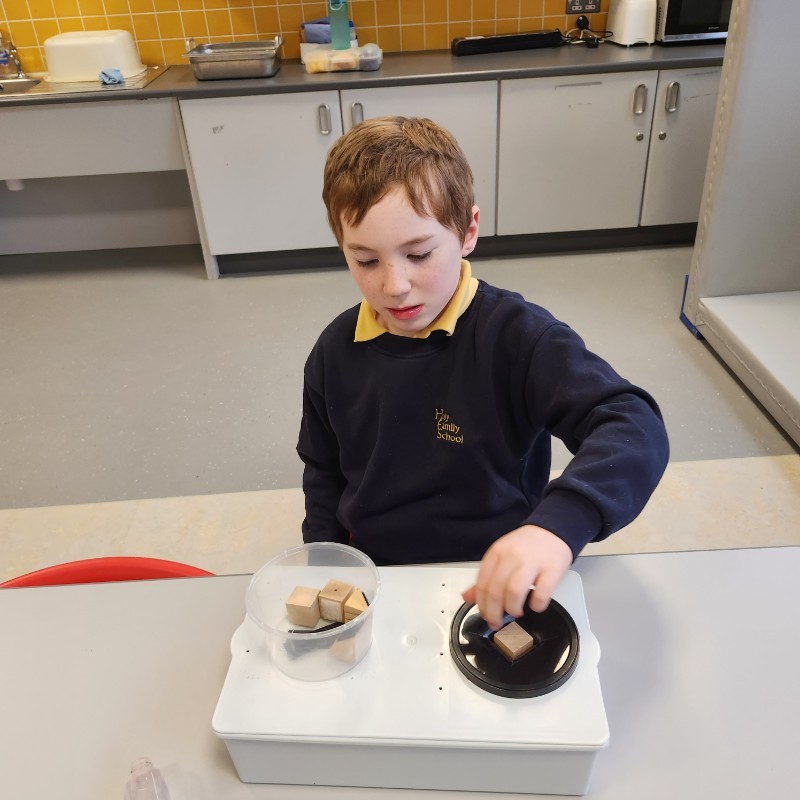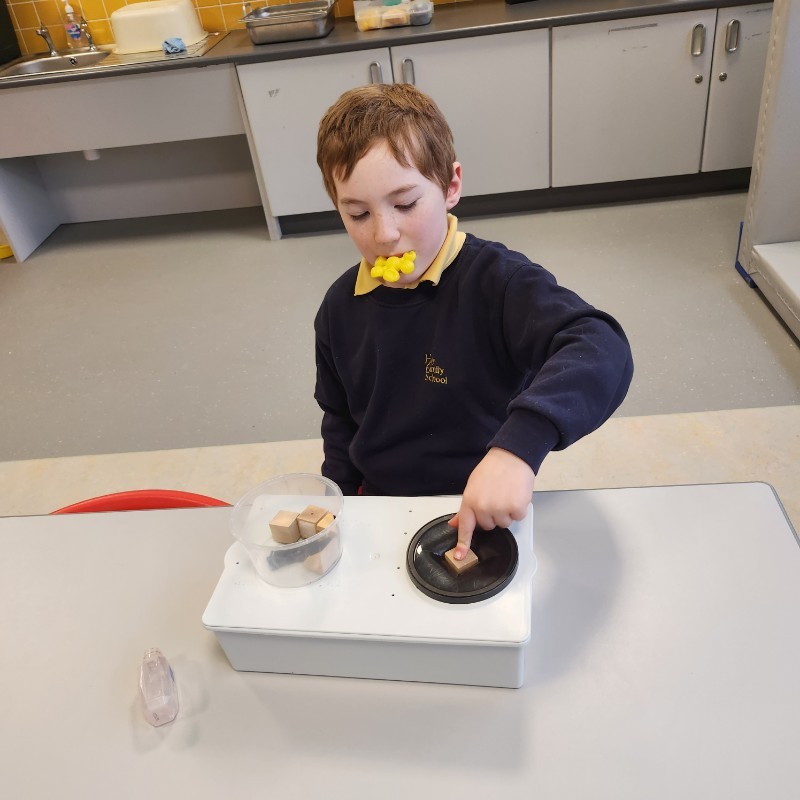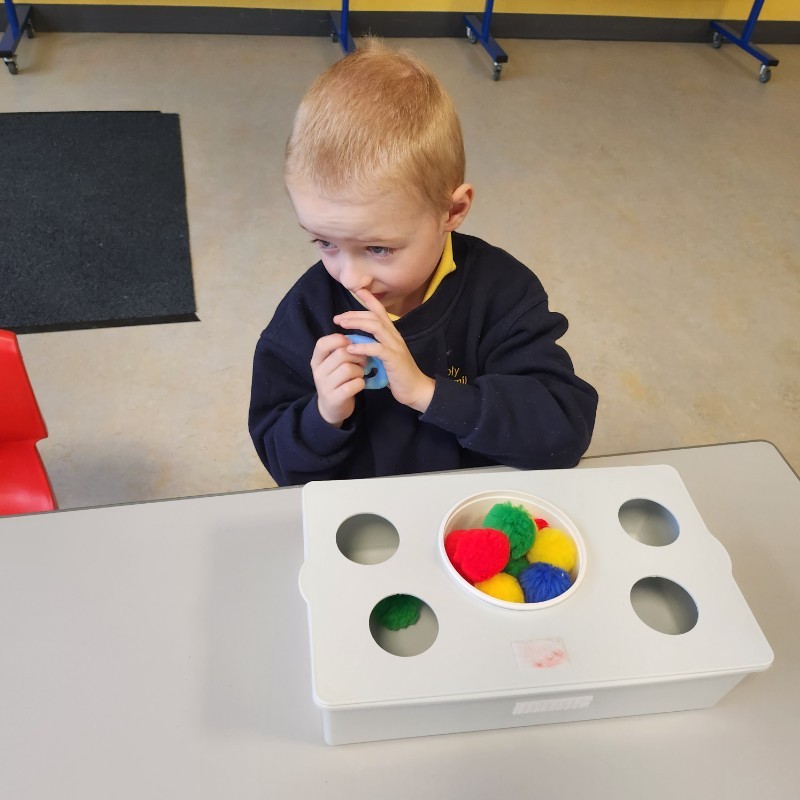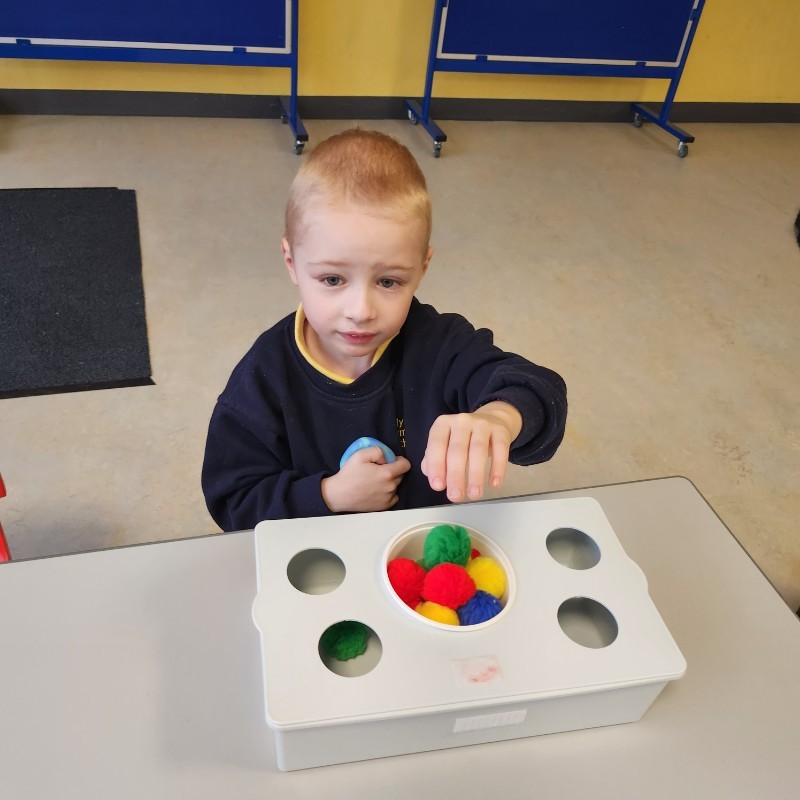Winter and clothes for January
January had been a busy month in Daffodil class. The chosen theme for the month had been Winter & clothes. In oral Language, we had demonstrated an understanding through the ability to follow simple instructions within our classroom. In writing, we had attended and taken part in, fun mark-making, drawing, and writing. We drew pictures/letters/words using a variety of mediums, including the HWT programme songs: Mat Man, Crayon song, name my finger song, big lines song, using full staff support for each activity using IWB paint programme – Air writing, iPad, Shaving foam, Sand tray, Pencil/paper, Paint.
In Numeracy, Early Mathematical Activities involved responding, imitating and the sorting of objects based on one attribute – colour: black & white sorting. We observed and attended to the sorting of identical objects in one-to-one correspondence. Children were exposed to a ‘black & white table’ daily, where they were encouraged to look at, touch, and interact with the objects used during circle time. In fully supported work and at the teacher’s table, children matched identical objects/pictures based on the topic of the month.
In S.P.H.E., we had explored and appreciated all the features that make a person special and unique, such as name, hair colour, sex, fingerprints, and birthday. During group work, We recognised and recorded personal preferences – things we liked and things we didn’t like. Children were presented with a selection of sensory play activities during free choice time, allowing them to engage with everything and to select their favourite.
In S.E.S.E: Geography, we had learned to identify and/or name parts of the male and female body and imitate actions involving the main parts of the body. We played Simon says... clapping hands, putting fingers on knees, and completed jigsaws of self-identifying missing body parts on a picture through sign language/verbal/pointing. We also recognized the difference between hot and cold, understanding that it is warm when the sun shines and cold when there is wind and snow. Children checked the temperature outside before going to the playground and decided whether to put on a coat. They looked at pictures and decided whether they showed warm or cold scenes, explaining the difference using a hairdryer and a fan.
In S.E.S.E: History, we worked on our individual daily schedule to cooperate with the teacher/SNA in making transitions using objects or pictures 1/1. children cooperated with the teacher in placing activities in the finished location to the right 1/1. Visual instructions were followed to complete one-step, self-contained, manipulative shoe box tasks (putting in, taking apart, putting together) 1/1. Children also cooperated with the teacher in getting activities one at a time from the left 1/1.
In visual Arts - Art Construction, we made a colour collage in black & white, gathering and investigating materials that are the same colour for use in collage: paper, fabric, tissue, cotton wool, glitter plastic, sweet papers, string, wool. Children added materials/things onto a piece of paper to make a non-representational collage using ripped paper, with support where needed. We also made a penguin, using a brush to paint the paper plate black and, when it dried, using PVA glue for the feet, nose, and eyes, with adult support where needed. Using stage 3 of the class bucket ‘Snow on a winter tree,’ children used white paint to make fingerprint snowdrops. They used a brush to paint the paper plate white and, when it dried, used PVA glue for the poms, poms, nose, eyes, and made a mark to create a mouth.
In Music and Drama, children imitated an adult tapping, clapping, slapping different body parts and rubbing palms together, tapping cheeks/shoulders/head, clapping hands, and stamping feet. They used HWT Songs and our morning circle time PowerPoint to imitate adults as they sang the song ‘This is the way we…clap our hands…stamp our feet…click our fingers…pat our head,' using staff support where needed. In P.E, using the songs in the circle time PowerPoint, children experienced how different parts of the body can move, participated in a variety of traveling actions, completed warm-up activities like walking and running, followed in line, and followed the teacher. They also played Simon Says – moving different parts of the body – clapping hands/nodding heads/wiggling fingers.

